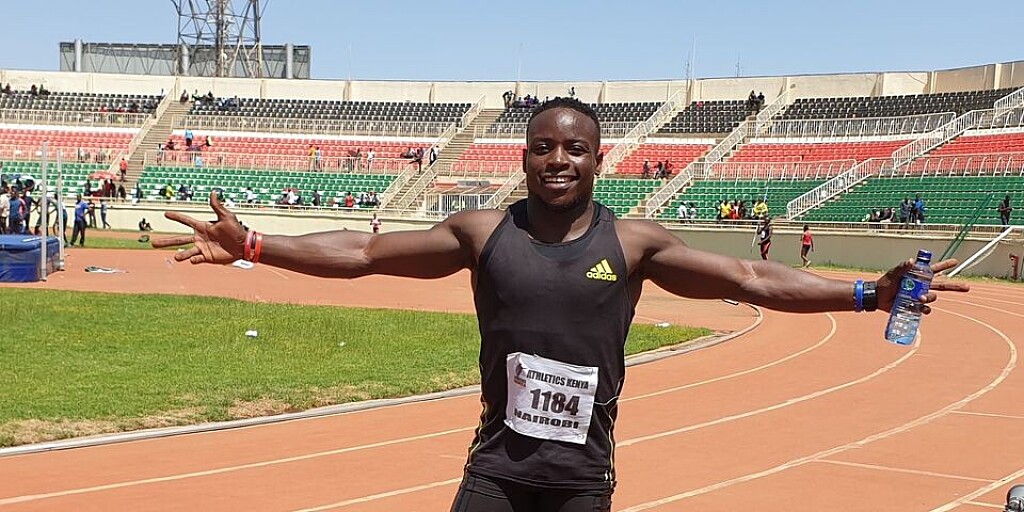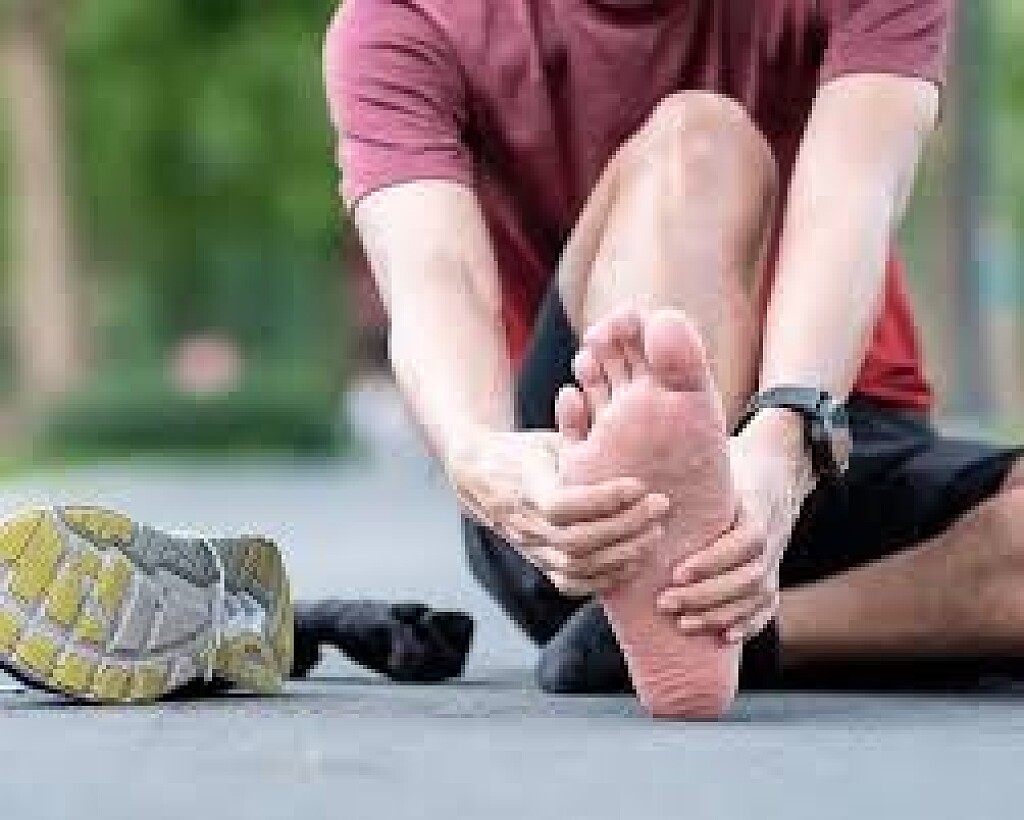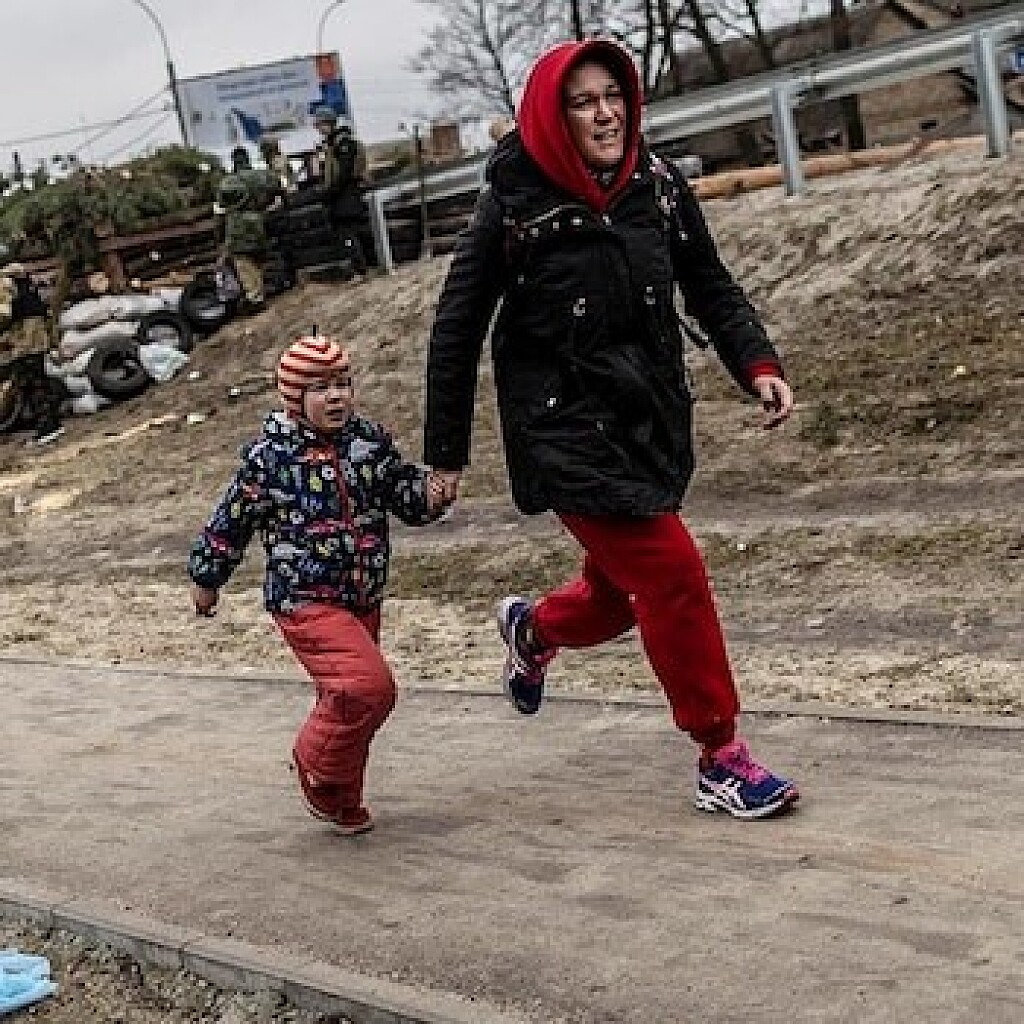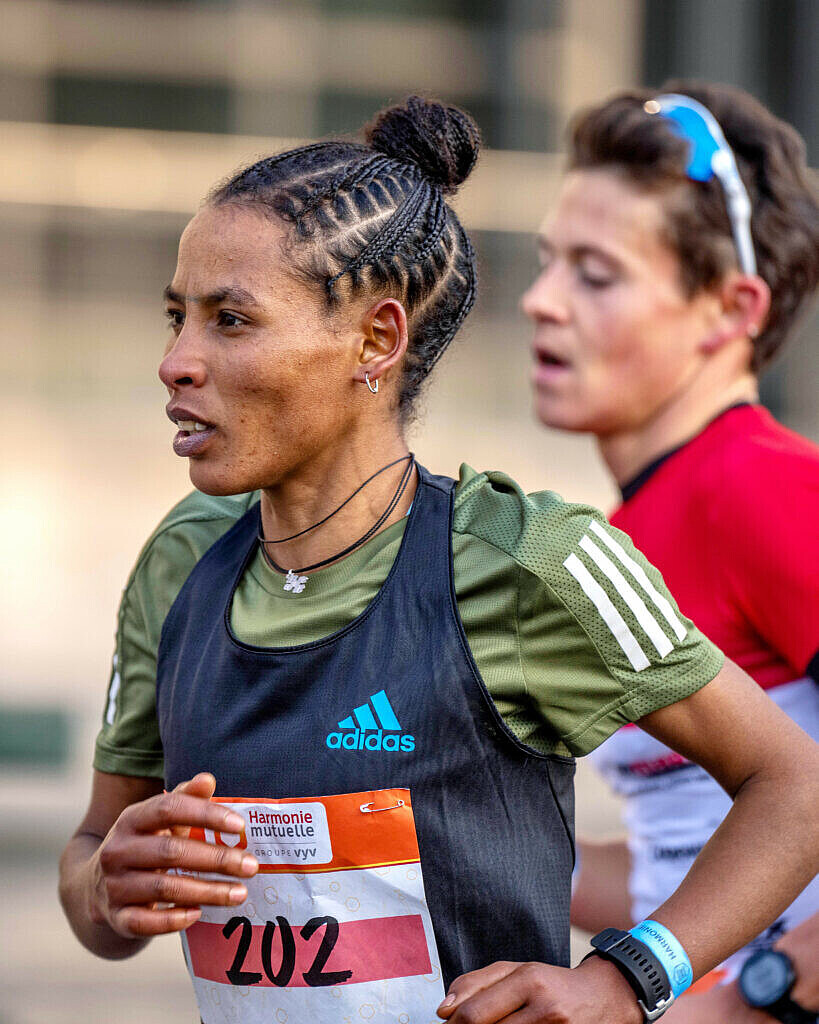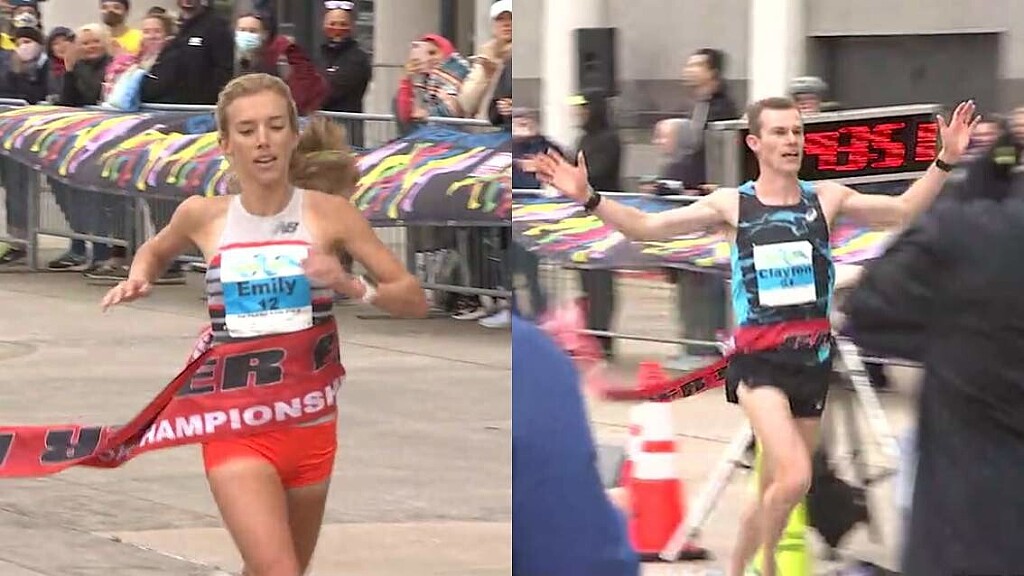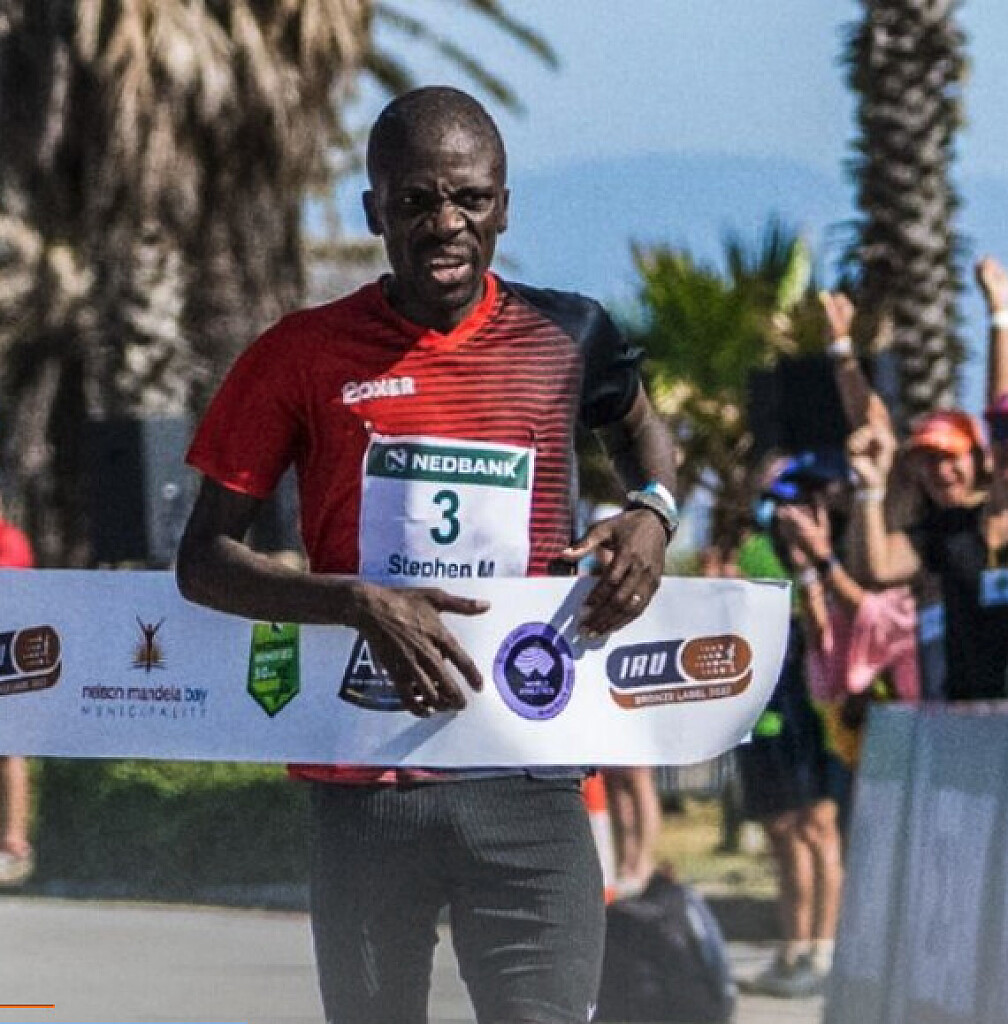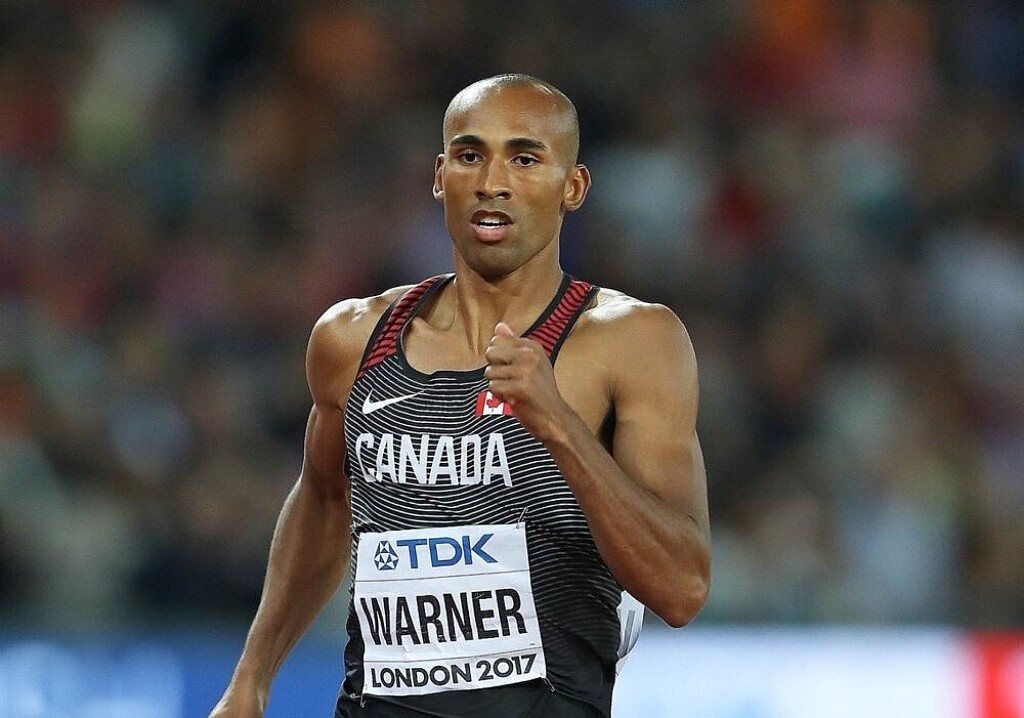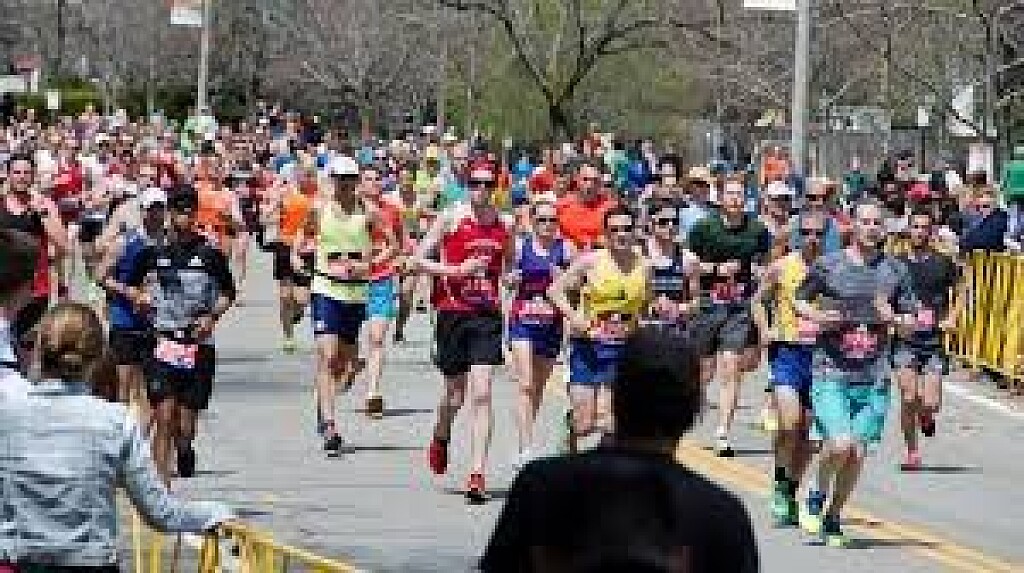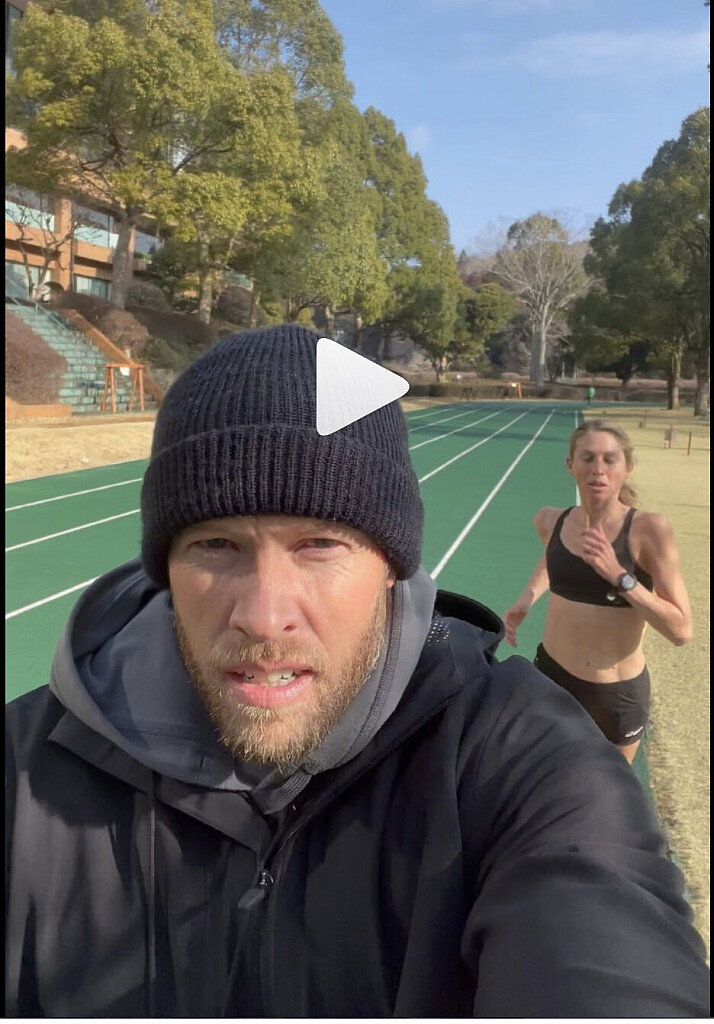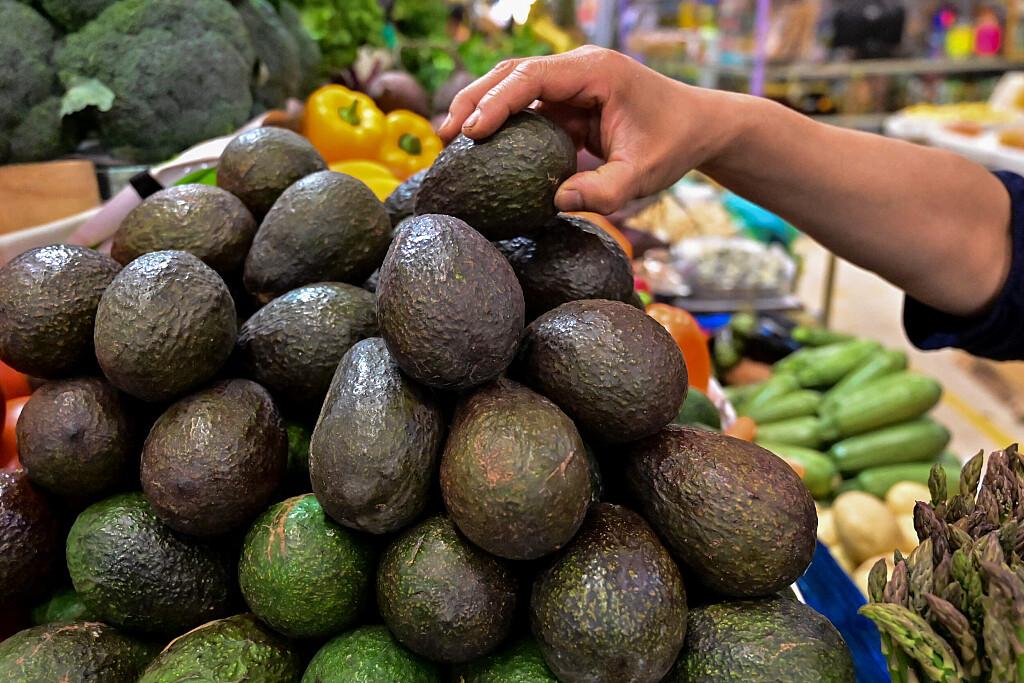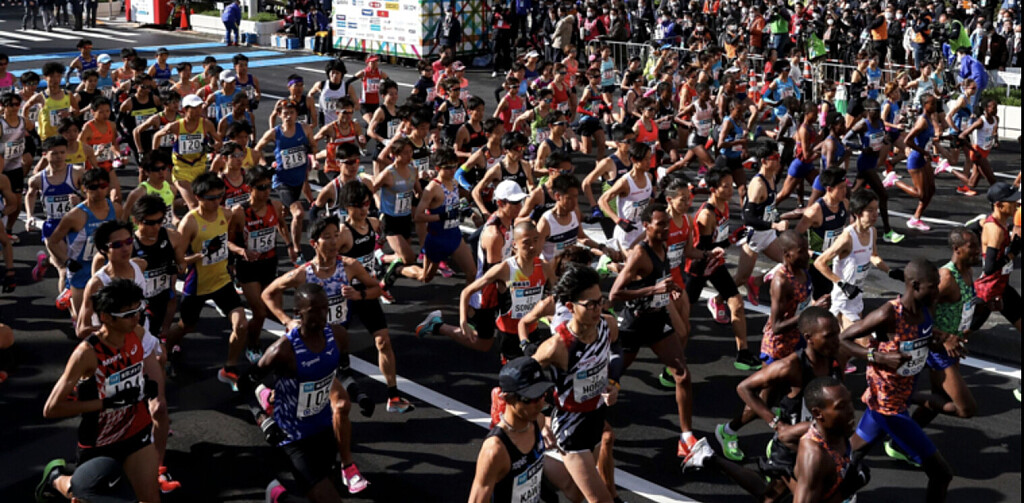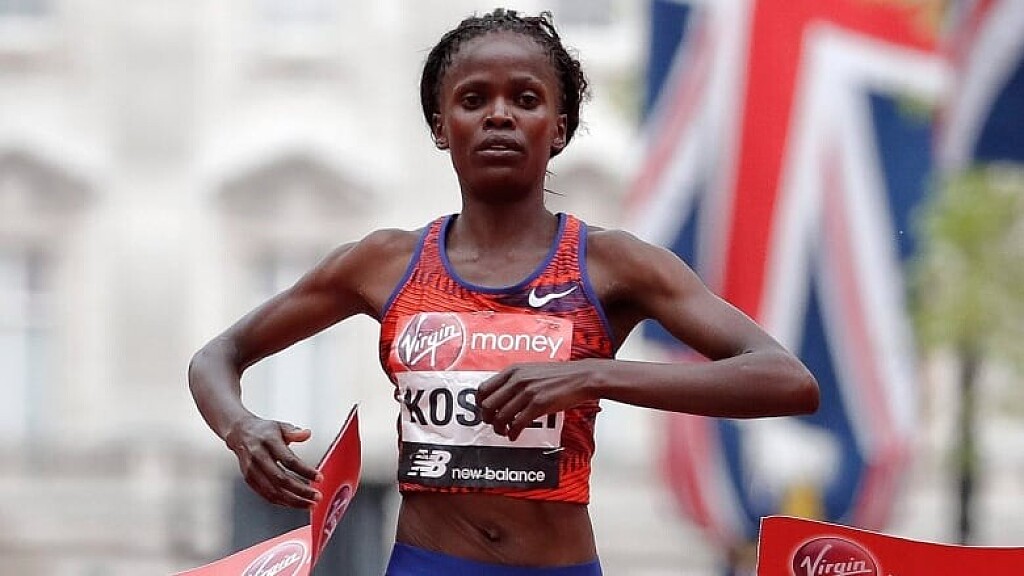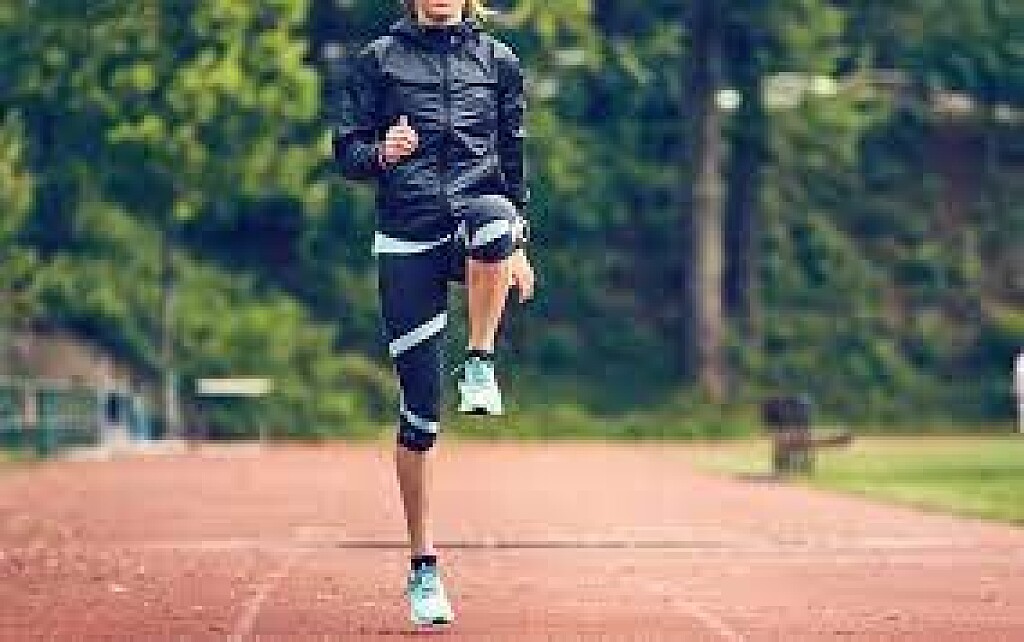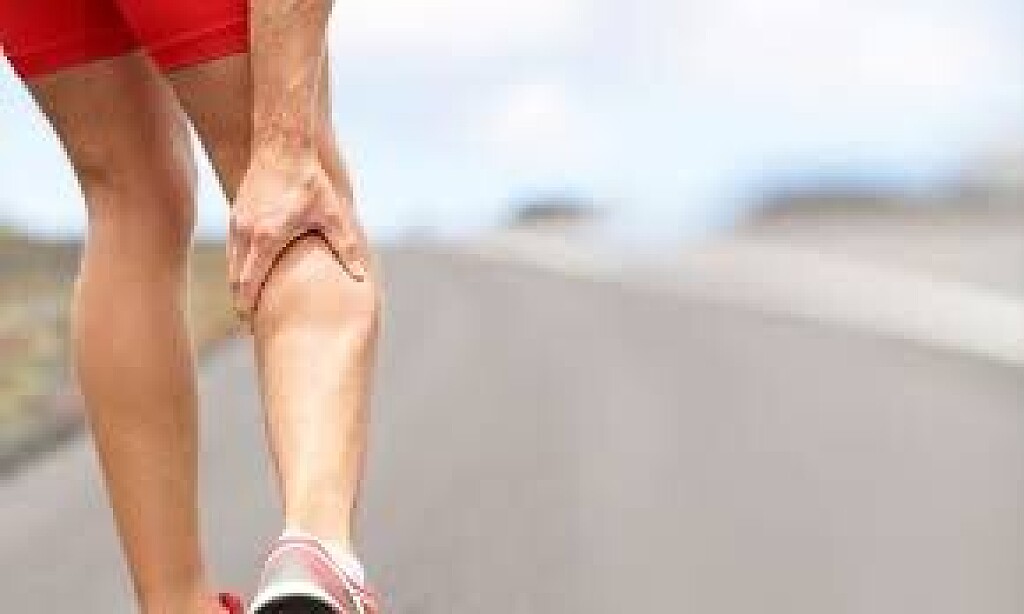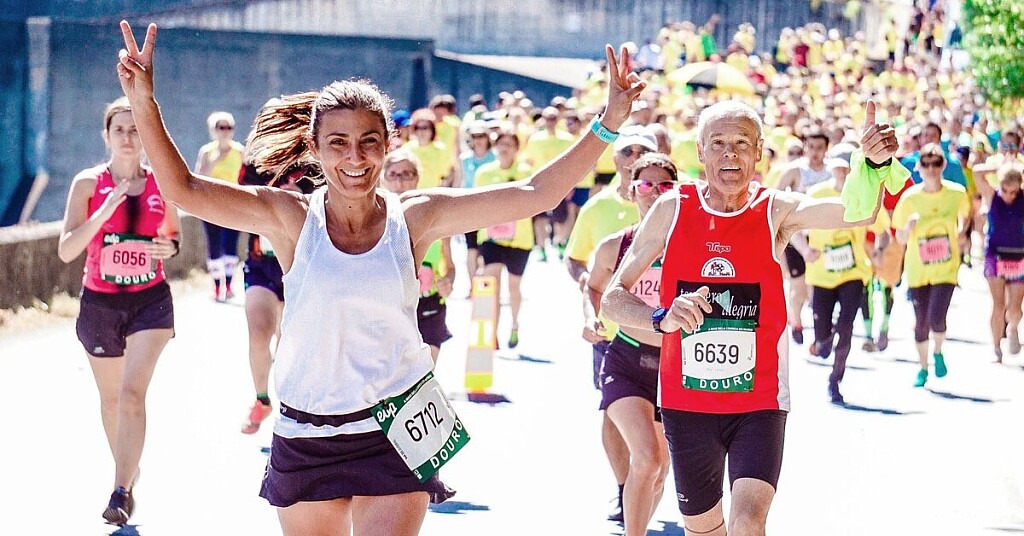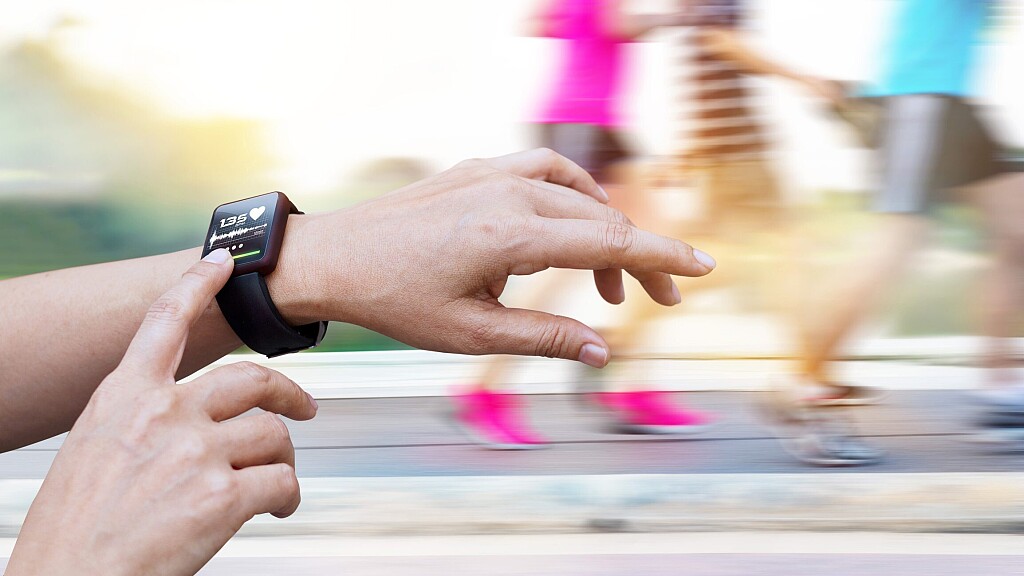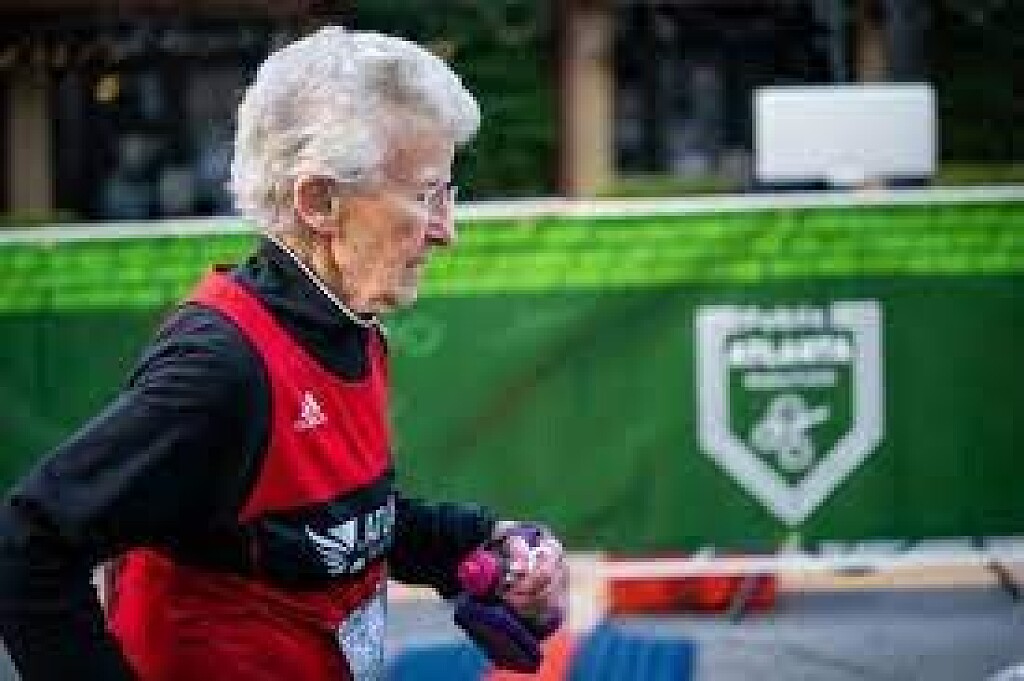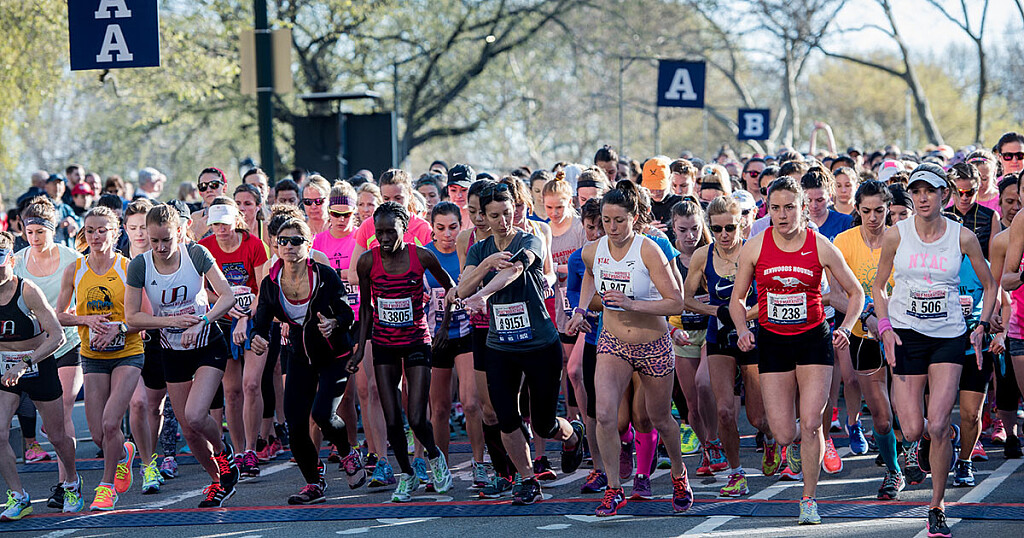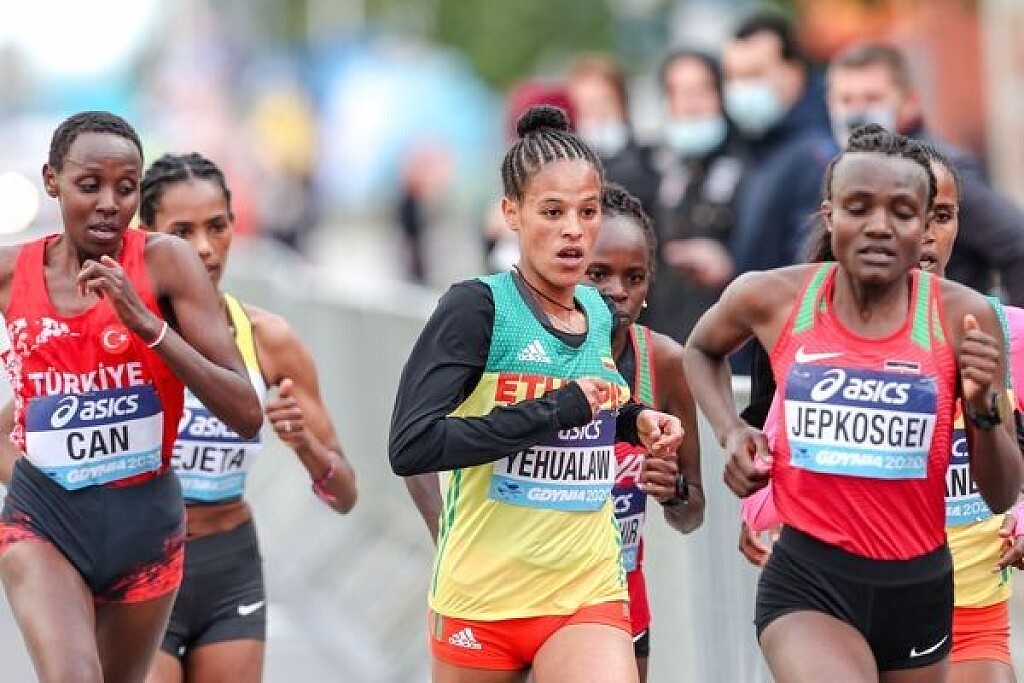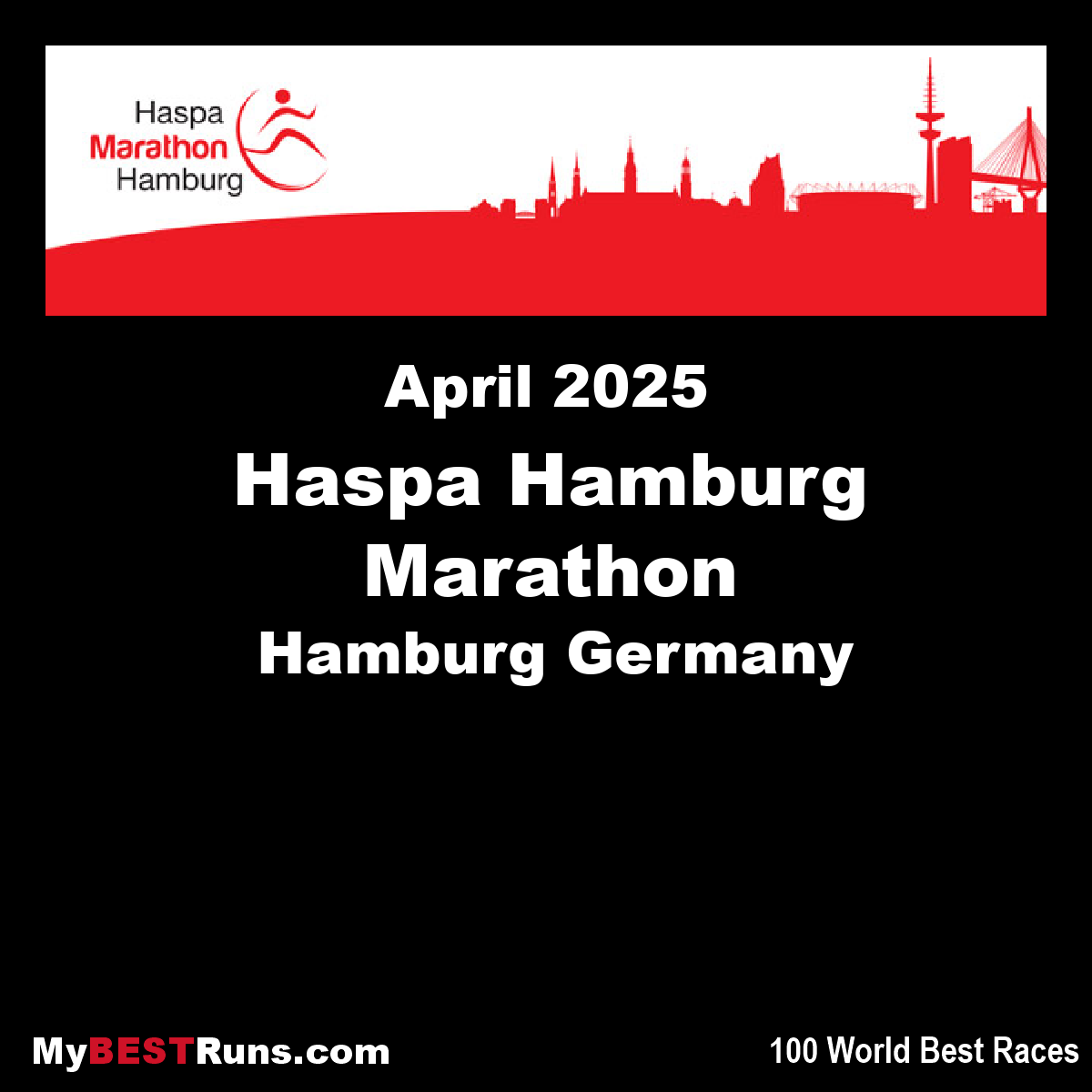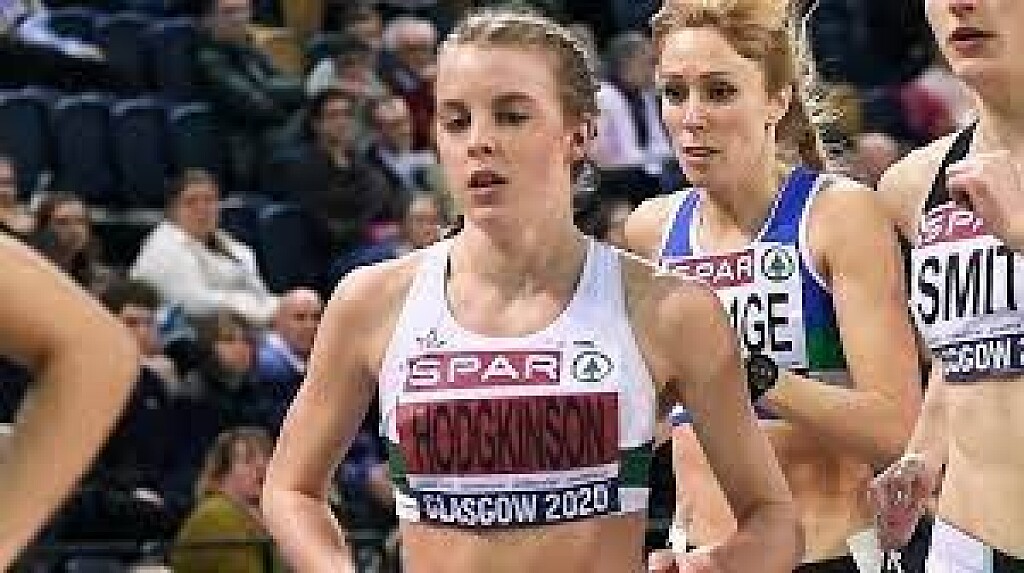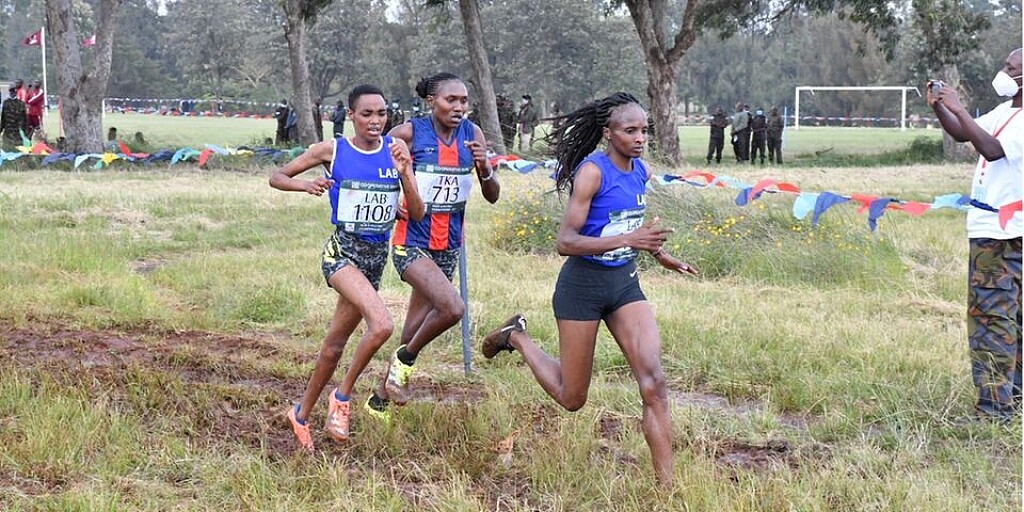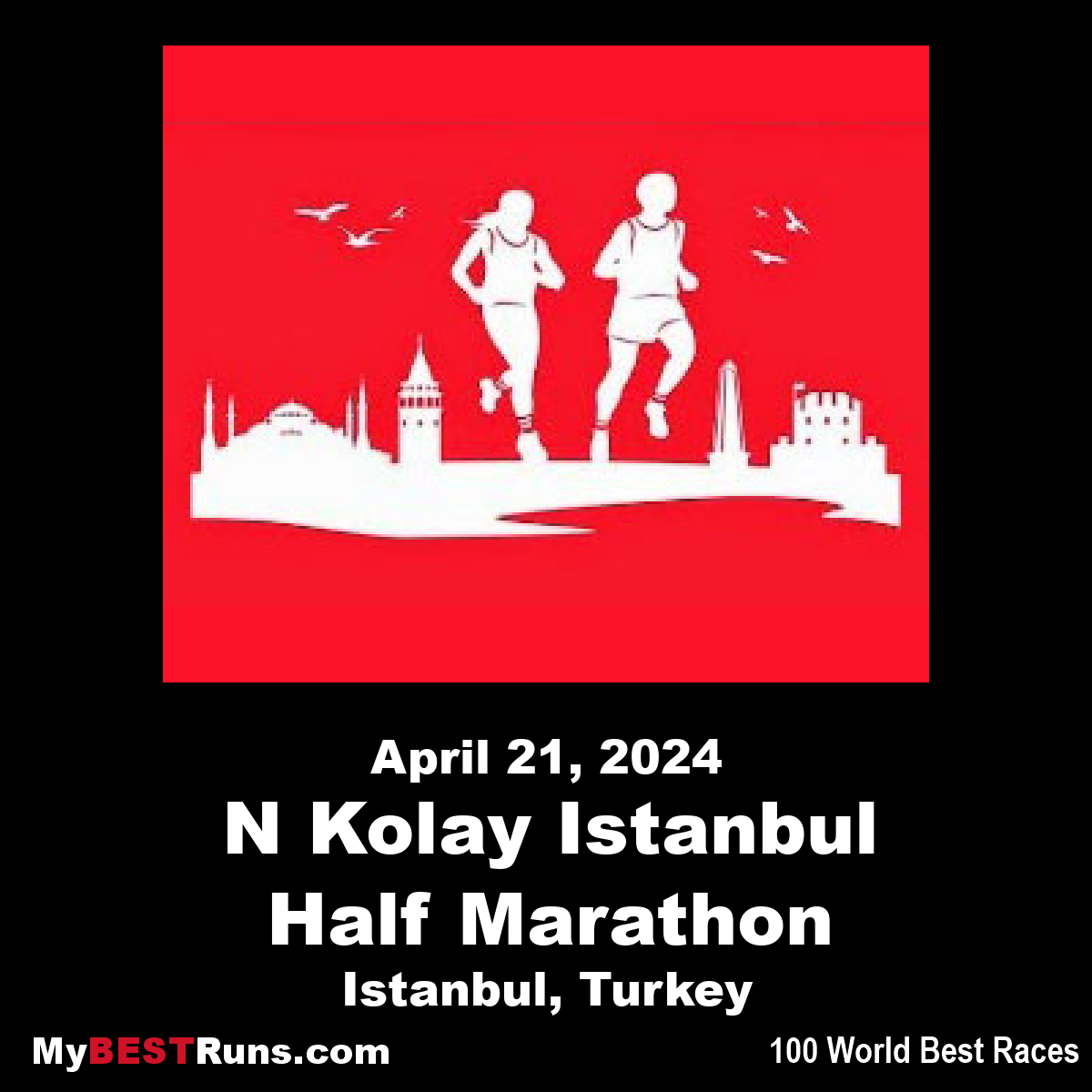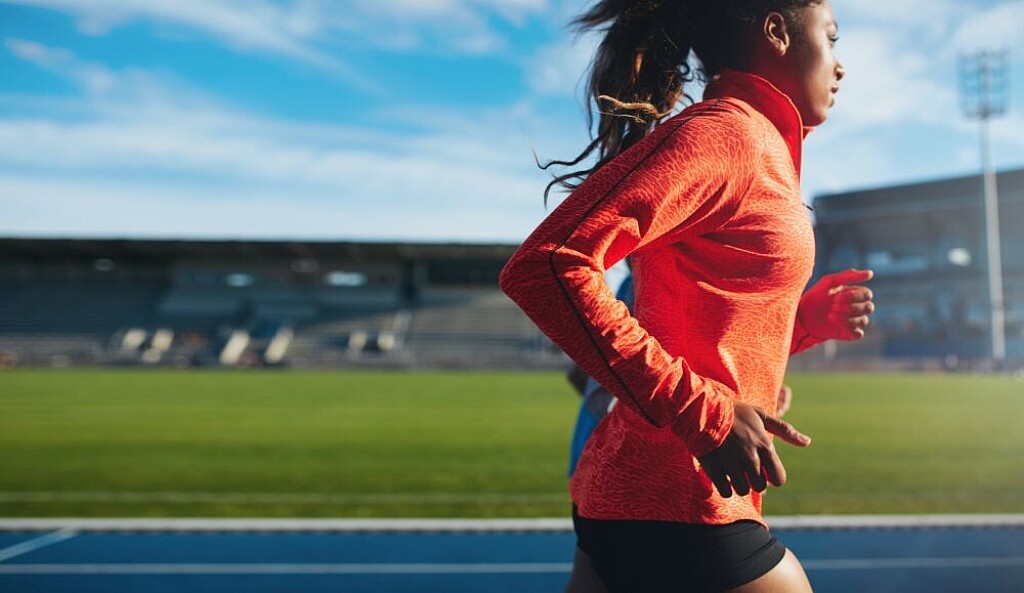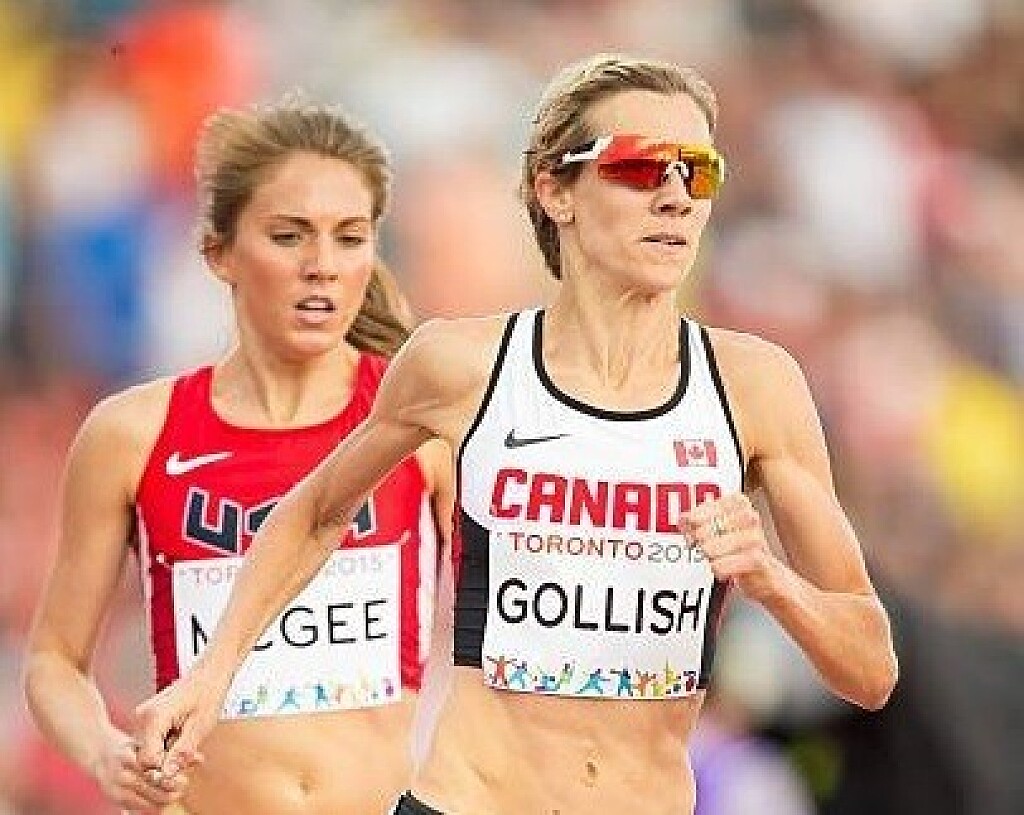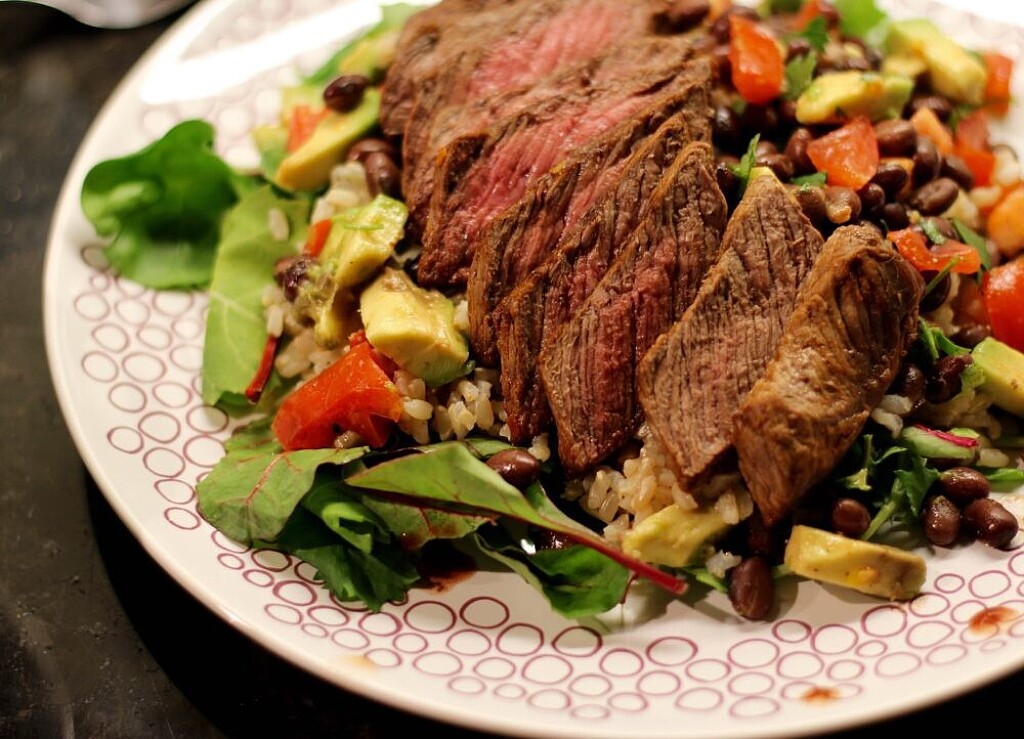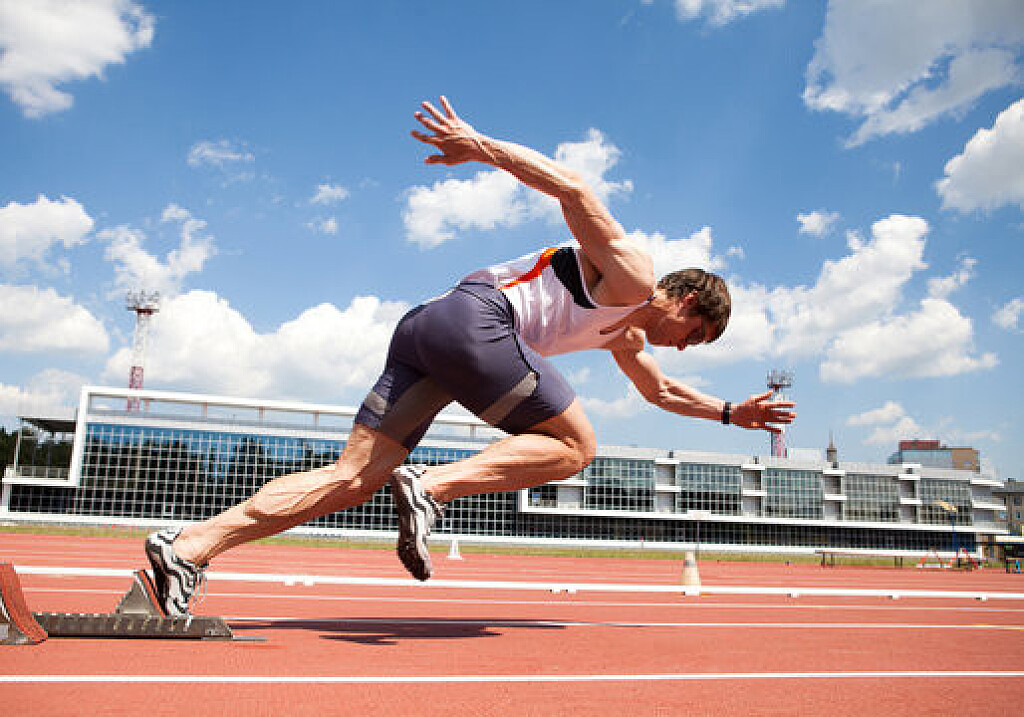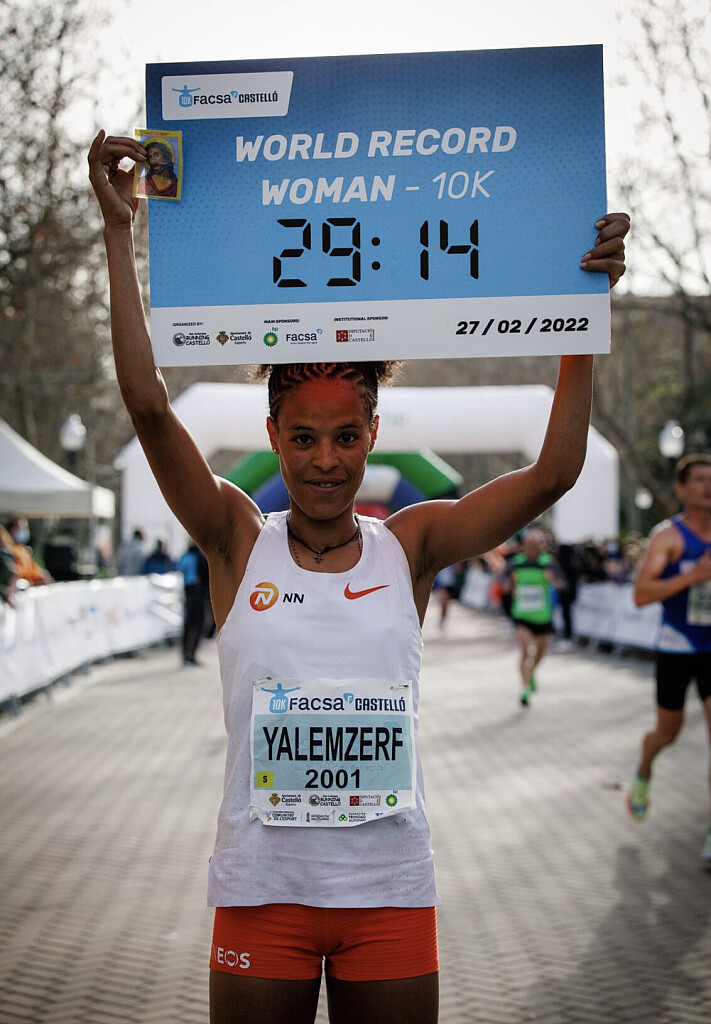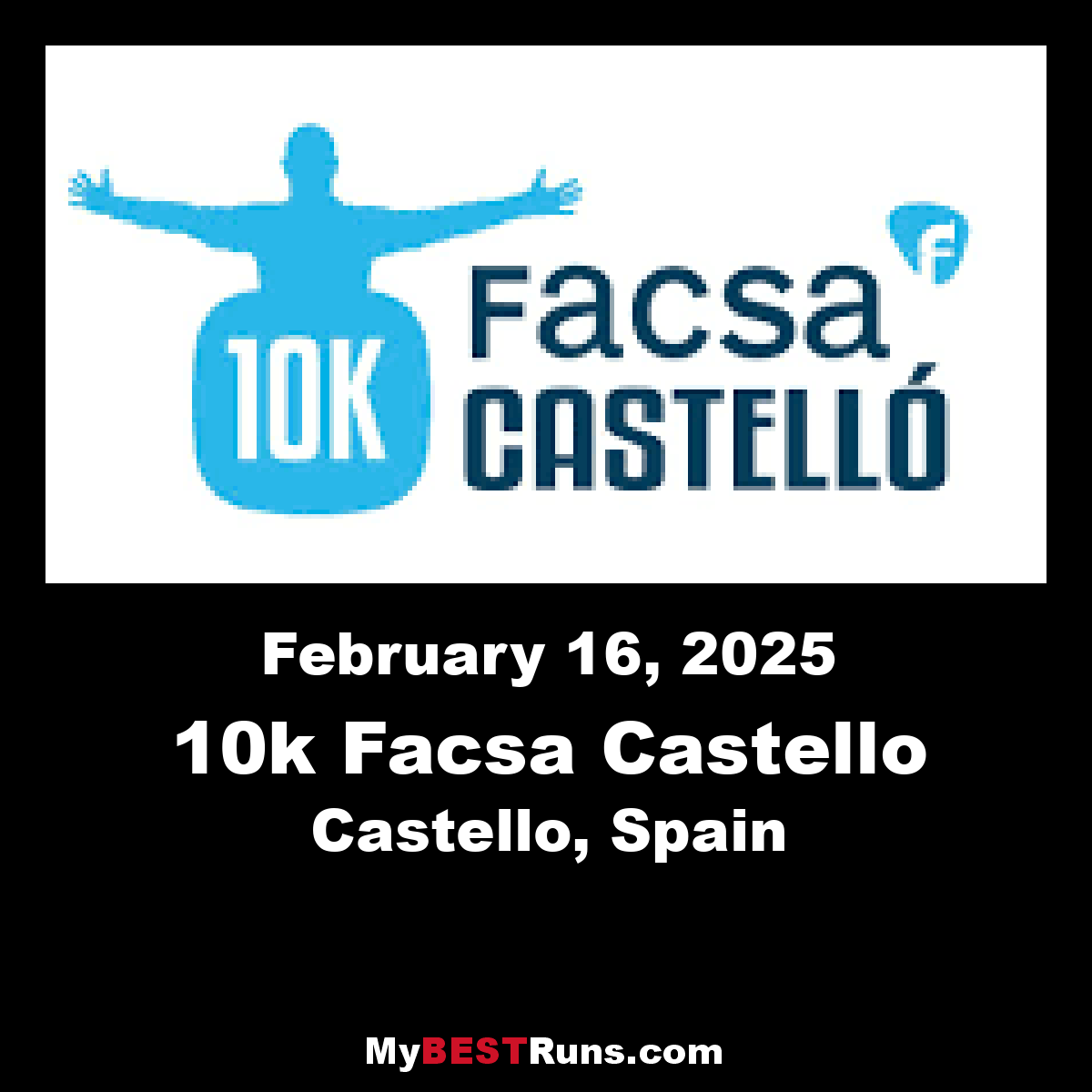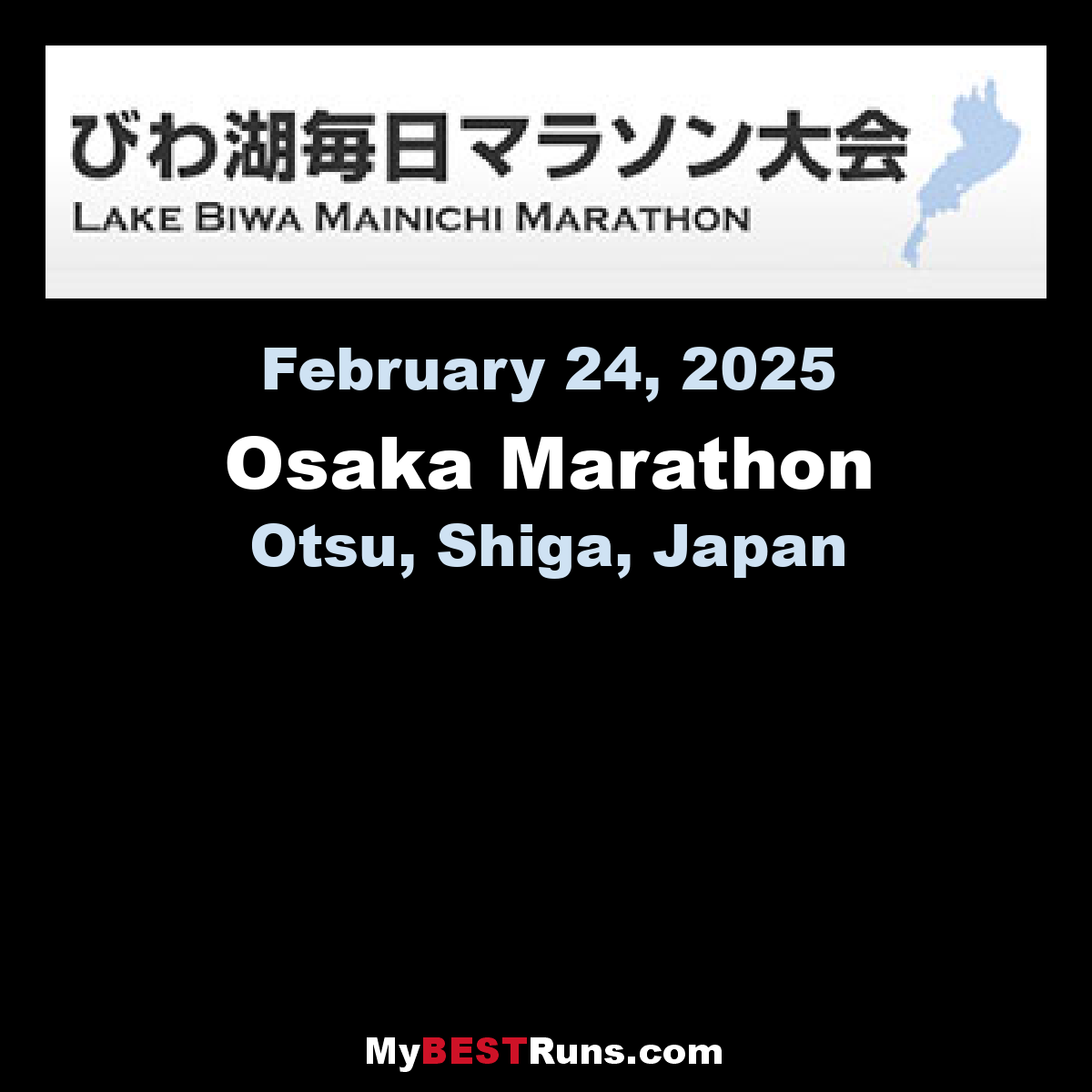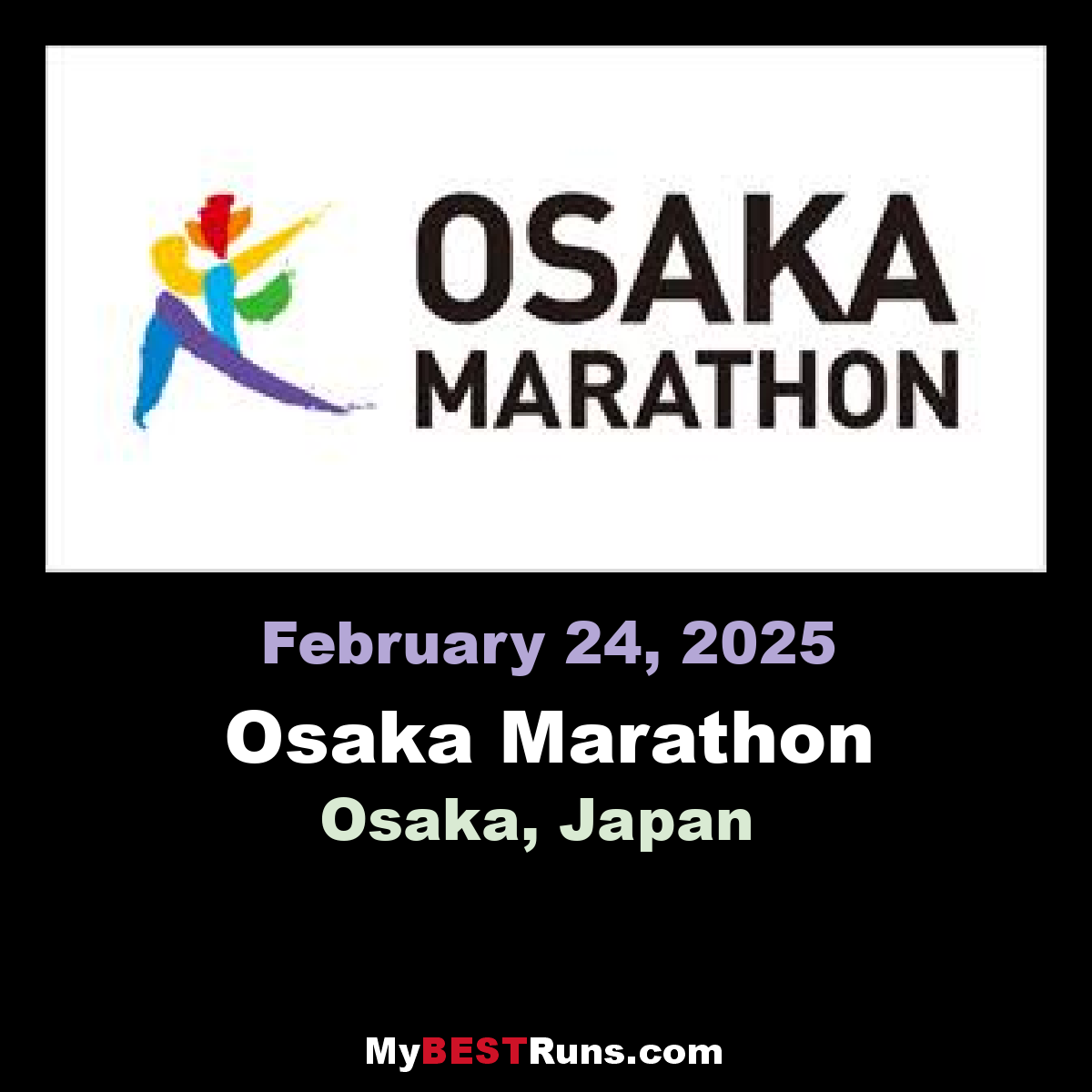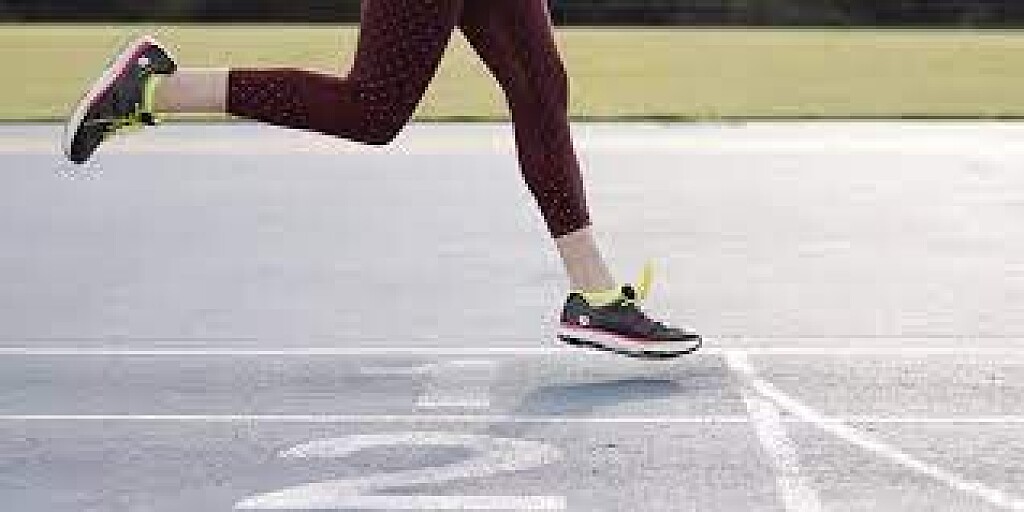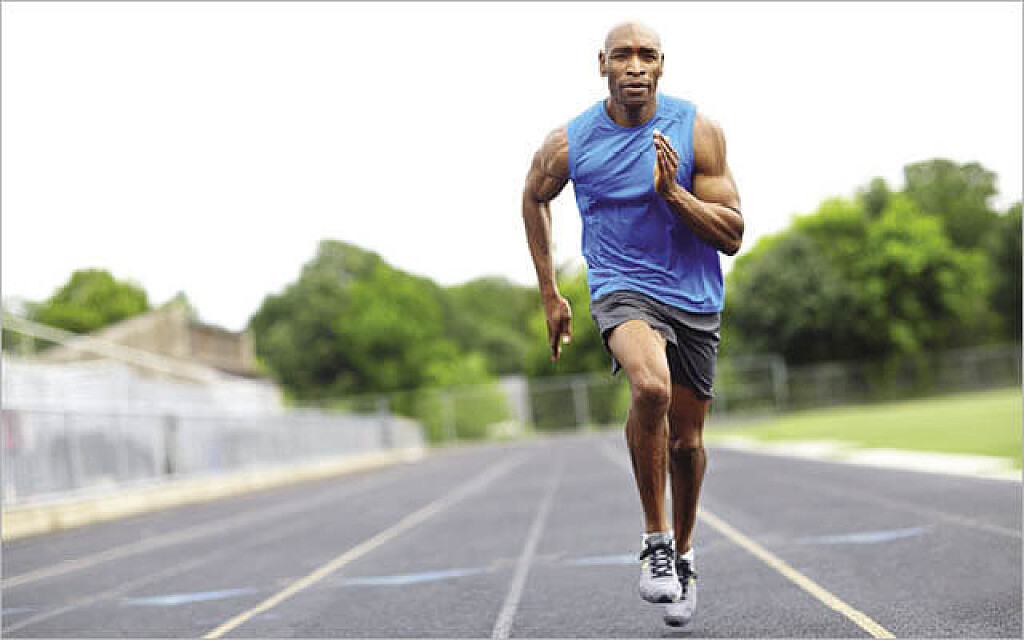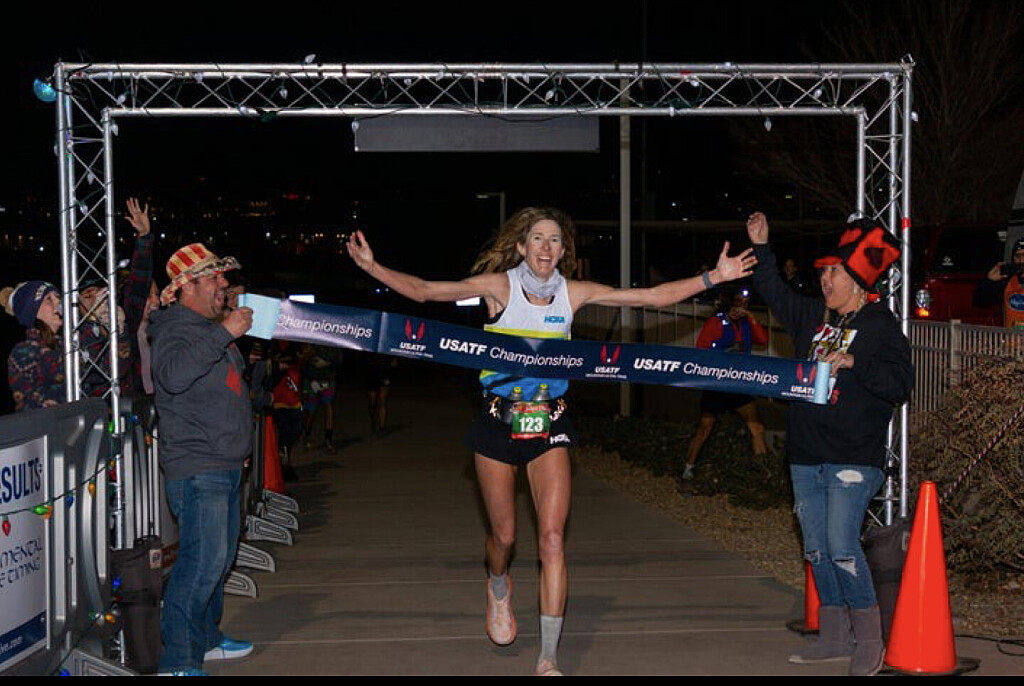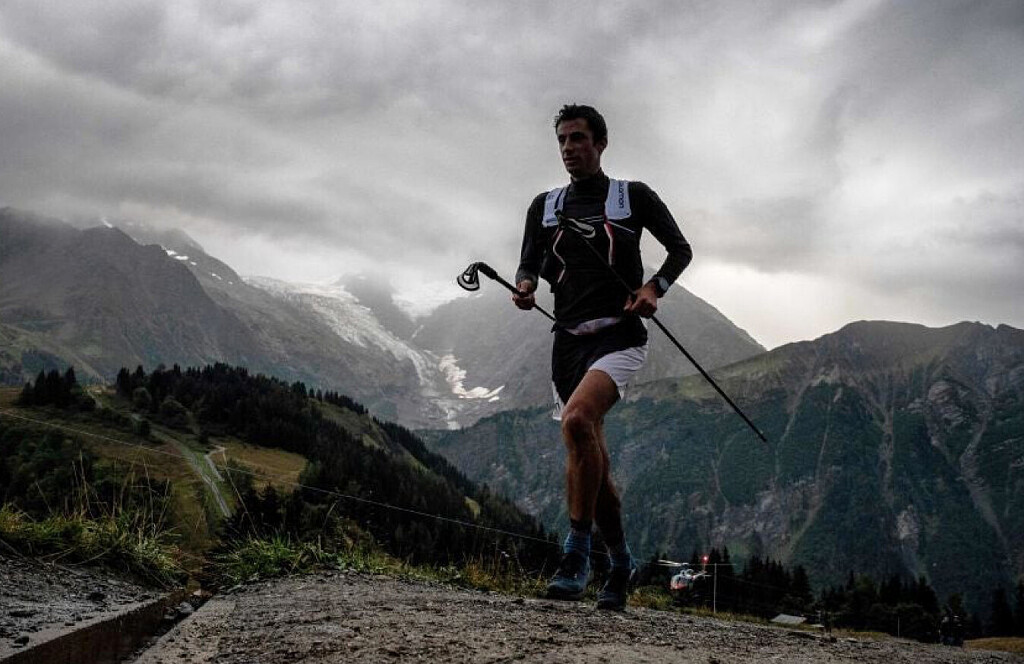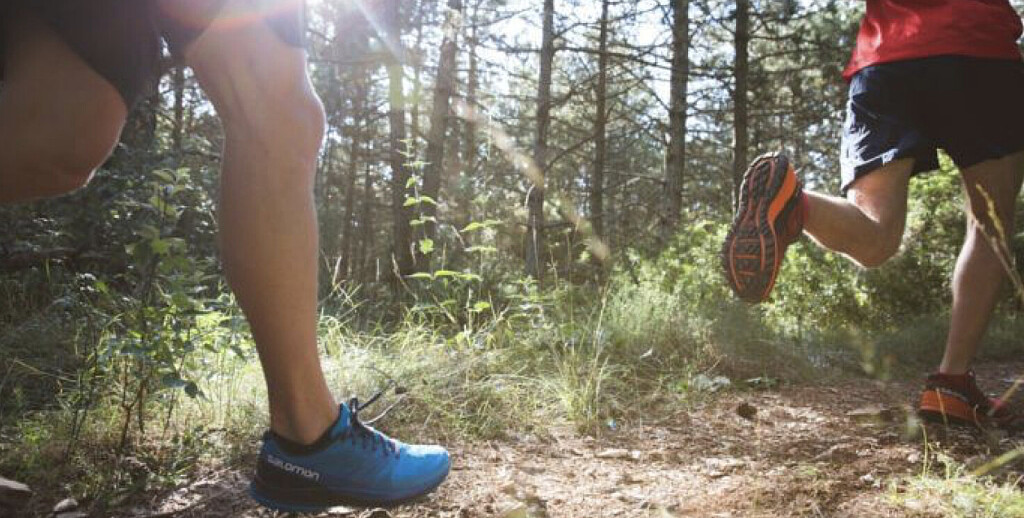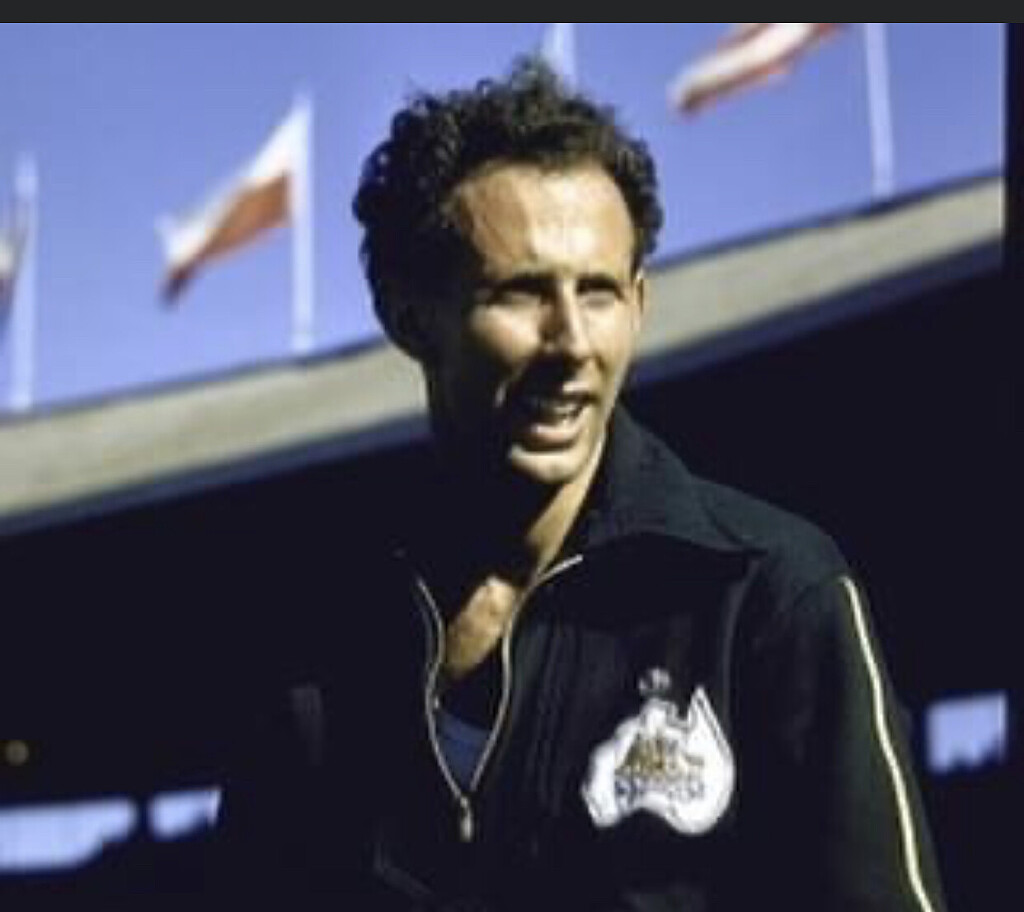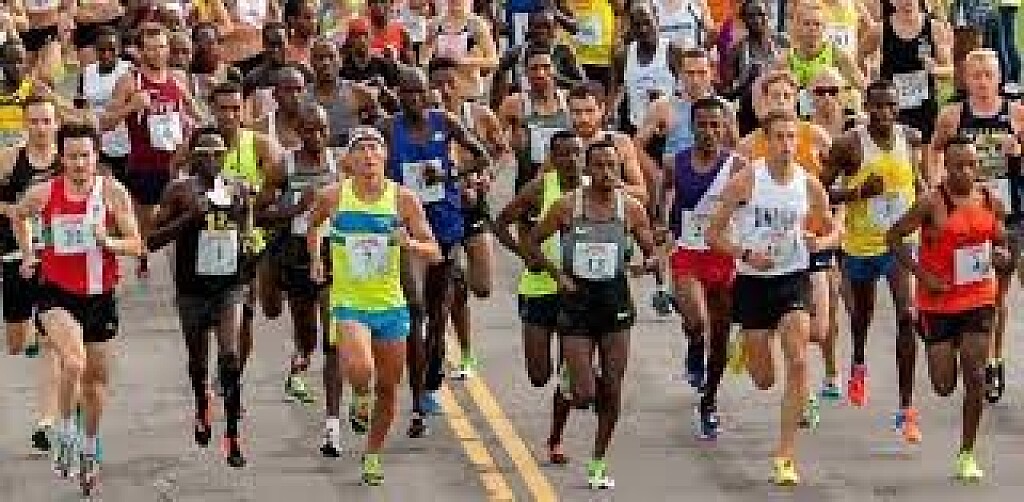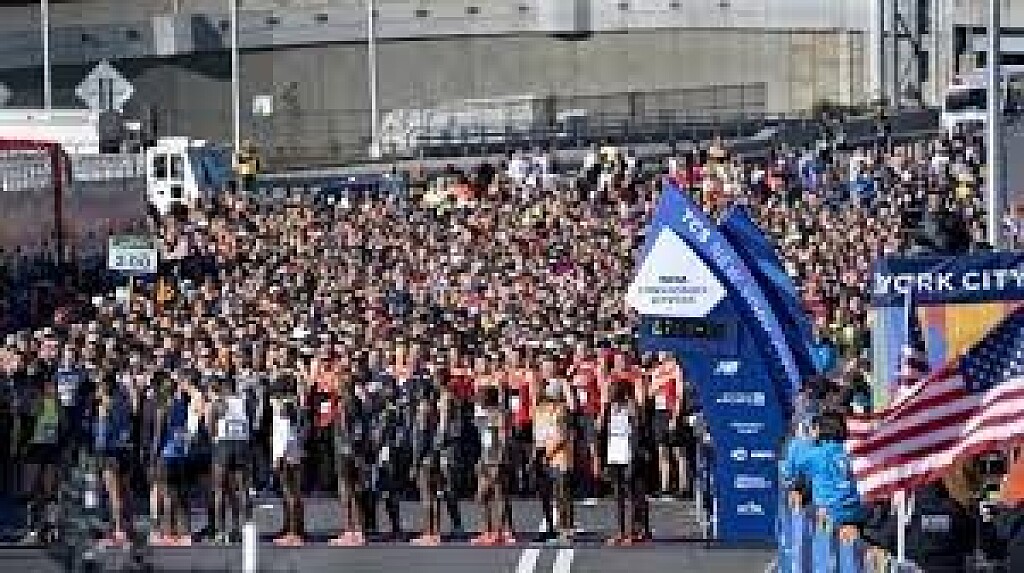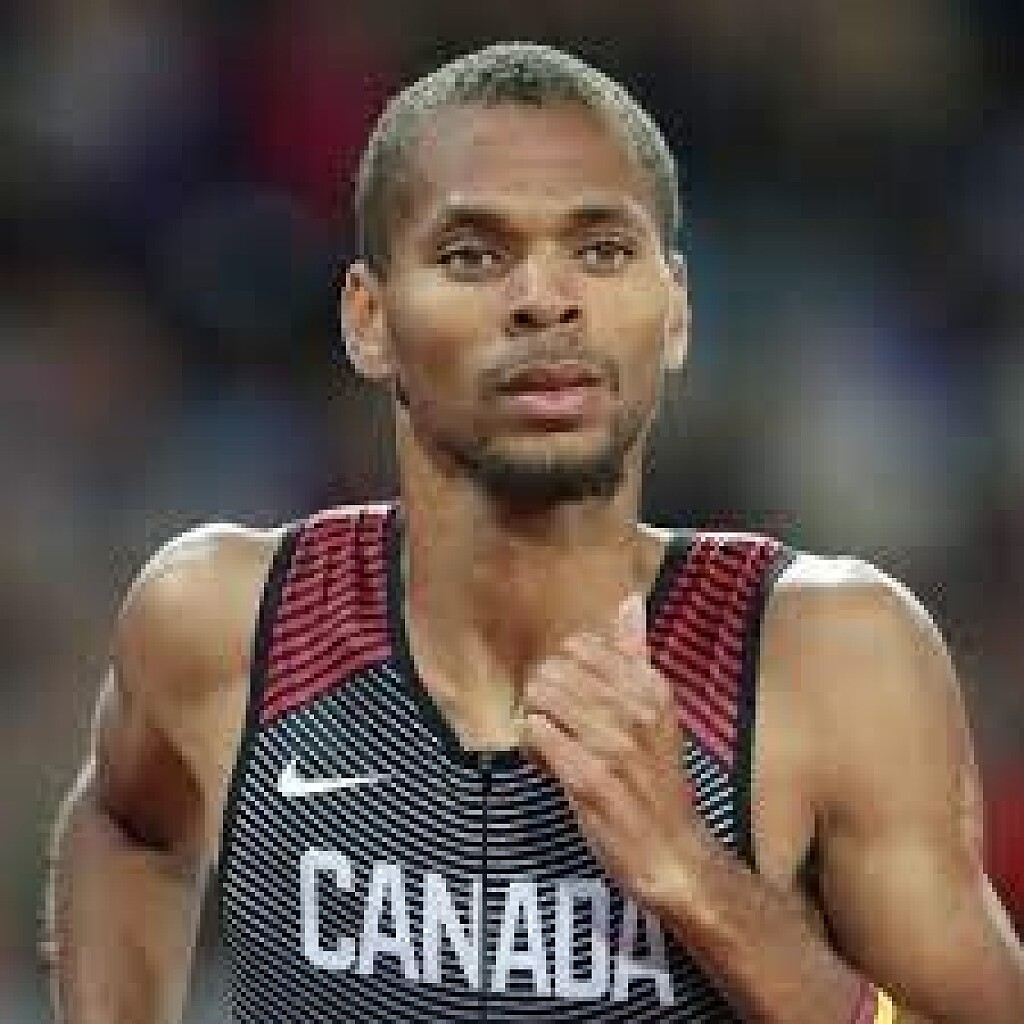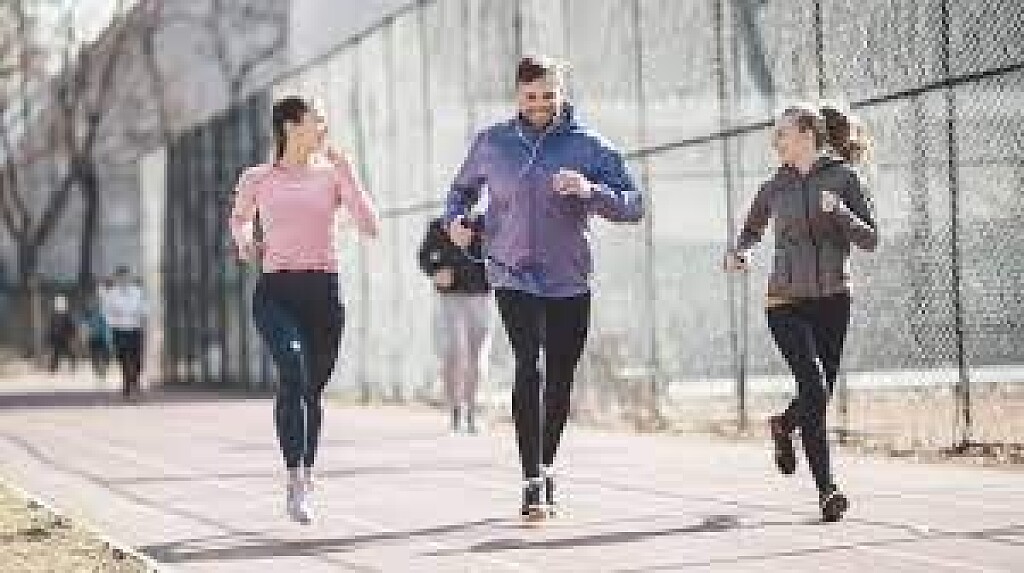Running News Daily
Running News Daily is edited by Bob Anderson. Send your news items to bob@mybestruns.com Advertising opportunities available. Train the Kenyan Way at KATA Kenya and Portugal owned and operated by Bob Anderson. Be sure to catch our movie A Long Run the movie KATA Running Camps and KATA Potato Farms - 31 now open in Kenya! https://kata.ke/
Index to Daily Posts · Sign Up For Updates · Run The World Feed
Africa’s 100m record holder Ferdinand Omanyala will lead Kenya's team of 10 athletes and six officials to the World Indoor Championships
Ferdinand Omanyala will lead Kenya's team of 10 athletes and six officials to the World Indoor Championships set for March 18-20 this year in Belgrade, Serbia.
The team, coached by 2017 World 800m champion Janeth Jepkosgei, will leave the country on March 16.
Athletics Kenya Director for Youth and Development, Barnaba Korir disclosed that Omanyala will take the blocks in the 60m event, while 2018 World Under-20 5,000m champion Beatrice Chebet will compete in the women’s 3,000m.
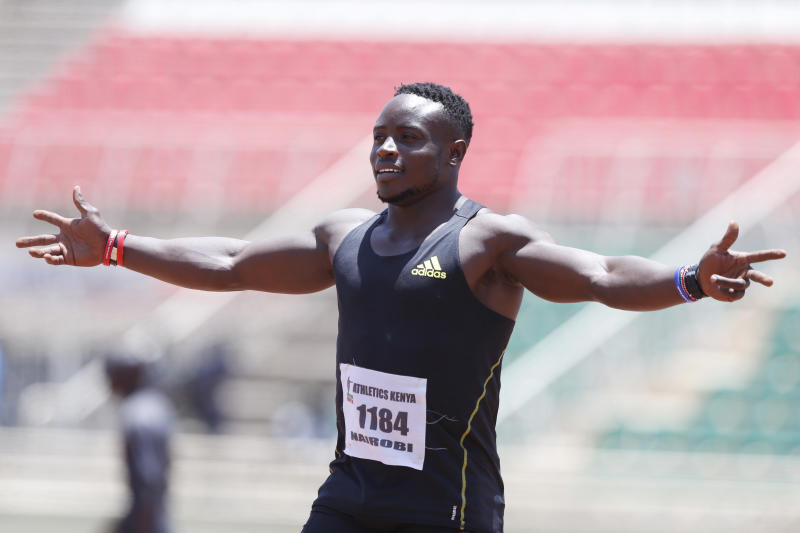
Chebet will team up with fast-rising Edinah Jebitok, who will also double up in the 1,500m.
World Relay 2x2x400m silver medalist Naomi Korir makes the women’s 800m team alongside Eglay Nalianya.
Abel Kipsang, who represented Kenya at the 2020 Tokyo Olympics, is the lone ranger in the men’s 1,500m, while Collins Kipruto, who has won several races at the World Indoor Tour, will fly the country’s flag in the men’s 800m, alongside World Under-20 800m bronze medallist Noah Kibet.
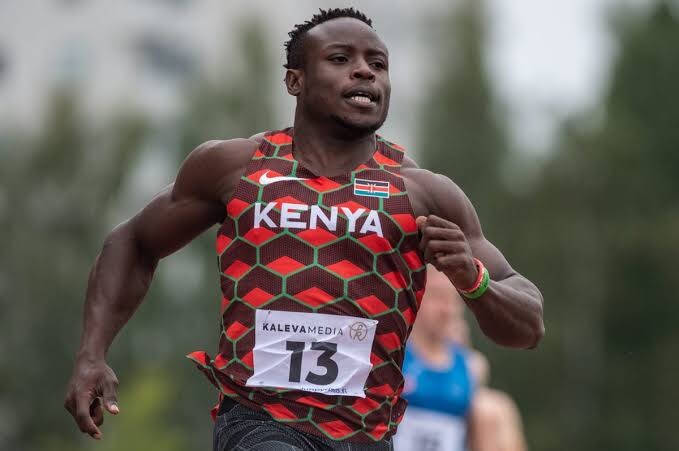
Jacob Kiprop and Daniel Simiu will battle it out in the men's 3,000m.
After a series of breathtaking performances at the World Indoor Tour where he broke the national record in 60m thrice, Omanyala will be hoping to reach the final.
Omanyala, who holds the Africa Record in 100m outdoor of 9.77sec, broke the national record in 60m indoor for the first time on February 4 this year when he won at Meeting Elite de Miramas in France.
He glided to 6.63 to shatter the previous National Record of 6.70 set by Paulvince Obuon in 2005.
Omanyala had won his semi-final heat in Lievin 6.63 before losing to Olympic 100m champion Jacobs Marcell from Italy, who won in 6.50.
He then bettered the National Record for the second time when winning in 6.60m at Meeting Metz Monselle Athlelor in France on February 12, before lowering it further to 6.57 when he finished fourth at the Meeting Hauts-de- France Pas-de-Calais on February 17 in Lievin, France.
Kipruto competed in five races at the World Indoor Tour where he won two of them.
Kipruto’s best showing was when he won the men's 800m race at Müller Indoor Grand Prix in a personal best of 1:45.39 at Utilita Arena Birmingham on February 19.
Kipruto had held off 17-year-old Kibet and Morocco’s Mostafa Smaili to claim victory in the men's 800m at the Meeting de l’Eure in Val-de-Reuil in a meeting record time of 1:47.05 on February 14 in France.
Nalianya has three wins from her indoor outing in European, but her best show came from Meeting Hauts-de- France Pas-de-Calais on February 17 in Lievin, where she finished third in a personal best of 2:00.26.
Her compatriot Korir has taken part in five races this season and managed a second place in three, which includes a personal best of 2:00.66 from Míting Internacional de Catalunya in Spain on February 8.
Team
Men:
Ferdinand Omanyala (60m), Collins Kipruto (800m), Noah Kibet (800), Abel kIpsang (1,500m), Jacob Krop (3,000m), Daniel Simiu (3,000m).
Women
Naomi Korir (800), Egpay Naliaka (800), Edinah Jebitok (1,500m, 3,000m), Beatrice Chebet (3,000m).
Officials
Barnaba Kitilit (team leader), Hassan Ahmed( technical leader), Janeth Jepkosgei (team coach), Francis Philomena (Doctor), Lydia Muraya (official), Irene Wamui (official).
(03/07/2022) ⚡AMPby Ayumba Ayodi
World Athletics Indoor Championships
World-Class Competition Lands in China: 2025 World Athletics Championships The global spotlight shines on China as it hosts the 2025 World Athletics Championships, bringing together the planet’s most elite runners, jumpers, and throwers. This prestigious event, organized by World Athletics, represents the pinnacle of track and field competition—where national pride, personal records, and world titles are on the line. ...
more...Got plantar fasciitis? Try these five exercises, these mobility exercises will help relieve your foot pain
Plantar fasciitis is painful and difficult to get rid of. If you’ve been struck by that nasty twinge in the sole of your foot, the following five exercises will help relieve your discomfort and get you back out running pain-free.
Plantar fascia massage
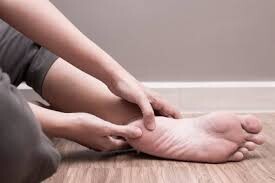
Rolling the bottom of your feet with a tennis ball or frozen water bottle is a great way to loosen up tight feet and improve flexibility and mobility. To roll your feet properly, follow these steps:
Sit in a chair with a ball or frozen water bottle under one foot.
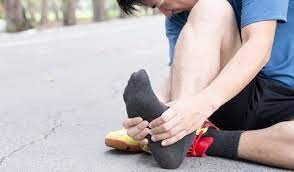
Gently roll the ball or water bottle under your foot, moving at a pace of about one inch per second, being careful to apply just enough pressure to feel a stretch (it shouldn’t be painful).
If you find a spot that is particularly tight, roll in that area for an extra 30 to 60 seconds.
Roll for about two minutes, then switch and do the other foot. This can be repeated daily.
Banded calf roller
To perform this exercise, you’ll need a foam roller and an exercise band.
Sit on the ground and place the foam roller beneath your right calf, just above the heel bone.
Wrap the exercise band around the top of your foot, and gently pull your foot toward you, while gently pressing into the foam roller.
Continue pressing into the roller, and gently push your foot away from you, using the band as light resistance.
Keep going back and forth, slowly moving the roller up your calf until you reach the meaty part of your calf muscle.
Repeat on the opposite leg.
Tibialis tamer
This exercise will help loosen your posterior tibialis, which will take some of the pressure off of your feet.
Sit on the ground with your right knee bent at approximately 90 degrees, so that your lower leg is laying flat in front of you.
Place a tennis or lacrosse ball on the inside of your right ankle and slowly roll the ball back and forth, working your way up the inside of your leg until you’re just below the knee.
Repeat on the opposite leg.
Seated plantar fascia stretch
Make sure you complete this exercise in a slow and controlled manner, pulling just enough to feel a stretch but not enough to feel pain.
Sit on a chair and place your right ankle on your left knee.
With one hand holding your right ankle and the other holding your toes, gently pull your toes back until you feel a light stretch on the bottom of your foot.
Hold for 15-20 seconds and repeat three times before switching to the other foot.
Wall-facing calf stretch
Loosening up tight calves will help loosen up your feet as well. As with the plantar fascia stretch, complete this exercise in a slow and controlled manner.
Place your hands on a wall so that your arms are straight.
Step your right foot backward, keeping your right leg straight.
Lean forward until you feel a gentle stretch in your calf.
Hold for 15-20 seconds and repeat three times before switching to the other leg.
(03/07/2022) ⚡AMPby Brittany Hambleton
Inside the War: Dispatches From a Ukrainian Race Director
On February 24, after Russian forces invaded Ukraine and ignited one of the largest conflicts Europe has seen since 1945, Trail Runner Magazine reached out to the country's running community in support, to learn more about what's happening on the ground, and provide a platform in solidarity.
(My Best Runs wanted to share this with our readers. What is happening is terrible and we must tell the world what is going on there.)
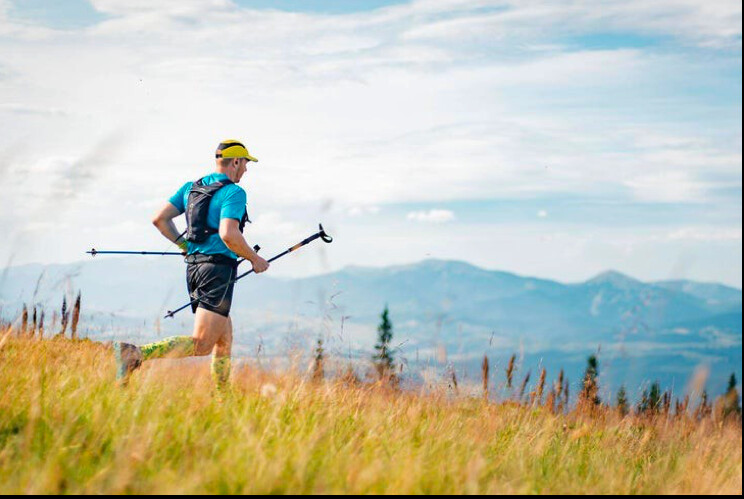
We quickly connected with Yaroslav Turenko in Lviv, western Ukraine, who is the race director for one of the country's largest trail races, the Lviv Ultra-Trail series. Turenko is a passionate trail runner, volunteer, and photographer. Here's what he had to say:
Nicholas Triolo for Trail Runner: Can you tell us what it's like on the ground where you are? What is the general sentiment of the Ukrainian people right now?
As you've likely heard, the worst-case scenario in Ukraine is unfolding. We are facing horrible acts of Russian aggression. They have invaded our country and have started to kill innocent people, bombing our cities, military, and civilian infrastructure. Their military is using the most inhumane methods: local populations used as human shields, women and children dropped off when attacking armored vehicles. The occupiers have killed children, shooting them at point blank.
These are war crimes. Crimes against humanity using tactical weapons of mass destruction, prohibited weapons, and ammunition. Many people in the world think this war is far from Central Europe, but a Russian missile was just dropped on a Ukrainian military base, located 24 miles (40 km) from the European Union border.
We've lost unique Ukrainian works of art in fires, along with the largest plane in the world - Ukraine's Antonov-225 cargo plane - destroyed by Russian strikes outside Kyiv.

But Ukraine is united like never before; all of our internal political disagreements are in the past. All the Ukrainians inside the country and abroad are doing everything possible to stand up and give a proper fight to Russian forces. We ask the international community to stand with Ukraine. But we need international support. We need shelter for our families. We need to close off air traffic from Russia. We need equipment for our defenders and sanctions for Russia.
Andrii Tkachuk, the world record holder in the 48-hour treadmill race and the national record holder in 24- and 48-hour ultramarathons, is currently defending the country in the Ukrainian Armed Forces.
TR: The city of Lviv, where you are, is located in the western part of Ukraine, far from the Russian border. Are you in any immediate threat? Are you in touch with people in Kyiv and other places currently under fire?
We are supporting each other, yes. Everyone in Ukraine can find shelter here in Lviv (pronounced "Luh-VEEV"). However, there is no guarantee that Lviv is a safe place, but right now we see a significant difference between Lviv and other cities in central and eastern Ukraine.
Lviv is a hidden gem of Europe. It's a charming, bohemian city, a UNESCO World Heritage site. It's the city of cafes and pubs, and some surprisingly awesome trail running. There will be no more Lviv Ultra-Trail until the enemy is defeated. Lviv is amazing, remarkably inexpensive by European and international standards, and I sure hope that the Lviv Ultra-Trail will take place again.
TR: Are you turning to your local trail running community for support right now? What can trail and mountain running do to help promote peace and understanding in the world?
We sent all the money from the Lviv Trail Running Club bank account to raise funds for the Ukrainian Armed Forces. Other organizers and trail communities have done the same. All volunteers involved in initiatives related to this development are working with refugees, blood donation, first aid, and cooking food for large groups of people.
Andrii Tkachuk, the world record holder in the 48-hour treadmill race and the national record holder in 24- and 48-hour ultramarathons, is currently defending the country in the Ukrainian Armed Forces.
We are kindly asking the International Skyrunning Federation (ISF) and International Trail Running Association (ITRA) to ban all Russian race evaluation and certification. As far as we know, the Lviv Ultra-Trail banned Russian runners after the annexation of Crimea, and the war in Donbas and Luhansk regions. We are calling for the ban of all Russians from international events like the UTMB World Series, the Golden Trail series, and others sponsored by ISF and ITRA.
TR: Pivoting away from the invasion for a moment: How would you describe trail running in Ukraine to someone who doesn't know much about your country?
Trail running in Ukraine has been developing extremely fast. Every year, the number of events and participants has grown. Among the most popular trail running events are the Tvoya Prygoda Series, Fun Carpaty, Lviv Ultra-Trail, and Ukrainian Trail League series.
Ukraine is a beautiful country with extraordinary nature and breathtaking landscapes, which makes it possible to run trails in nearly every part of our land, year round. The best place for trails, in my opinion, are the Carpathian Mountains, with some peaks above 6,500 feet (2000m) above sea level, with high humidity in every season. (Mount Hoverla is Ukraine's highest peak at 6,762 feet).
Serhii Popov is considered one of the fastest trail runners in Ukraine. He has won national trail and long distance mountain running championships almost every year since 2015, and took part in nine world championships. He is also an ultrarunner with the best national performance time in the Men's 40+ age group for 50K and 100-mile road races.
On February 24, Popov planned to fly to Spain, to take part in a six-hour ultrarunning event in Barcelona, with the goal to set another national record. But in the morning, he woke to bombing sounds from the Boryspil airport, where he was planning to depart a few hours later.
"The first night we spent in the basement of our friends in Irpin, near Kyiv," said Serhii. "It is right next to the Hostomel airport where fighting with the Russians just started. Explosions were so loud that the walls shook. This continued in the morning and we decided to reach the city of Zhytomyr, where my wife's parents were, and our car. As soon as we got to the city, we realized the return trip was not possible, so we decided to stay there and do what we could.
"I could not join the local defense forces. They are only taking people with appropriate combat experience, which I don't have. So we went to shops and carried food and water to block posts," Serhii said.
"The city of Zhytomyr is preparing to meet the enemy. Everybody in the city is trying to help - building fortifications, collecting all the army needs. We often will hear sirens and sometimes the sounds of explosions. But mostly people are calm and ready to stand up for their land."
(03/06/2022) ⚡AMPby Trail Runner Magazine
HARMONIE MUTUELLE SEMI DE PARIS: BONIFACE KIBIWOTT AND NIGSTI HAFTU WIN THE 30TH EDITION
The first runners started the 30th edition of the Harmonie Mutuelle Semi de Paris from the Pont de Sully (Île Saint Louis) at 8 o'clock this morning. The first major event of the 2022 running season brought athletes together for a shared experience and a 21.1 km challenge. Kenyan Boniface Kibiwott claimed the men's race, while Ethiopian Nigsti Haftu emerged victorious from the women's one.
The 30thHarmonie Mutuelle Semi de Paris kicked off the 2022 running season.
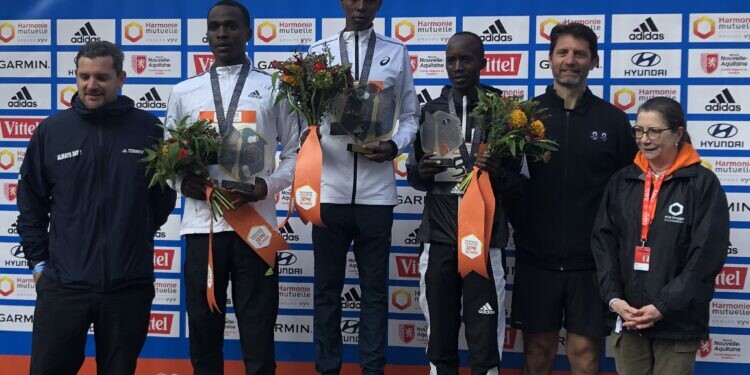
Boniface Kibiwott (KEN) took the men's race in 1:00:52.
Nigsti Haftu (ETH) won the women's race in 1:07:37.
Damien Appere and Mangeiarasi Murugan were crowned French disabled sports champions.
Margaux Sieracki (sixth) and Benjamin Choquert (seventh) flew the flag for France in the top 10.
A mixed urban and natural course with a spectacular finish on Place de la Bastille.
WINNERS OF THE DAY
The men ran a tactical race as the favourites stuck together in the first part of the race. 8 kilometres into the course, Kenyan Boniface Kibiwott upped the pace before going solo in the final 5 kilometres and crossing the finish line in first place with a time of 1:00:52. Vincent Yegon, second in 1:01:18, and Benard Kimelli, third in 1:01:23, locked up the podium for Kenya. Benjamin Choquert, seventh with 1:03:38, was the top-ranked French runner.
In contrast, the women's race came down to a sprint. Ethiopian Nigsti Haftu took the spoils in 1:07:37, beating Kenyan Joyce Tele, in the same time. Another Kenyan, Brillian Kipkoech, posted a time of 1:09:18 to claim the bottom step of the podium.
Frenchwoman Margaux Sieracki came in sixth in 1:11:01 in her half marathon debut.
Thanks to Harmonie Mutuelle, the last runners were feted just like the winners of the race, with a special celebration, for the first time in the history of the Semi de Paris.
(03/06/2022) ⚡AMPSemi de Paris
Paris Half Marathon (French: Semi de Paris) is an annual half marathon held normally every March in Paris, France since 1993. It currently holds IAAF Bronze Label status. Kenya's Stanley Biwott is the men's course record holder, with his winning time of 59:44 from the 2012 race. The women's course record is held by Nigsti Haftu (ETH), who ran a...
more...Emily Sisson, Nico Montanez Take 2022 USATF 15-K Titles in Jacksonville
Emily Sisson and Nico Montanez scored convincing wins today at the 45th Gate River Run in Jacksonville, Fla., the traditional home of the USATF 15-K Championships. Sisson, who represents New Balance, successfully defended her 2021 title in 47:28, collecting her fifth national title across all distances and surfaces. Montanez, who trains with the Mammoth Track Club and represents Asics, clocked 43:10 to collect his first national title in any discipline.
While both athletes earned $10,000 in prize money, Sisson won an additional $5,000 for winning the race’s gender challenge. The women were given a six-minute head start and Sisson crossed the finish line one minute and 42 seconds ahead of Montanez.
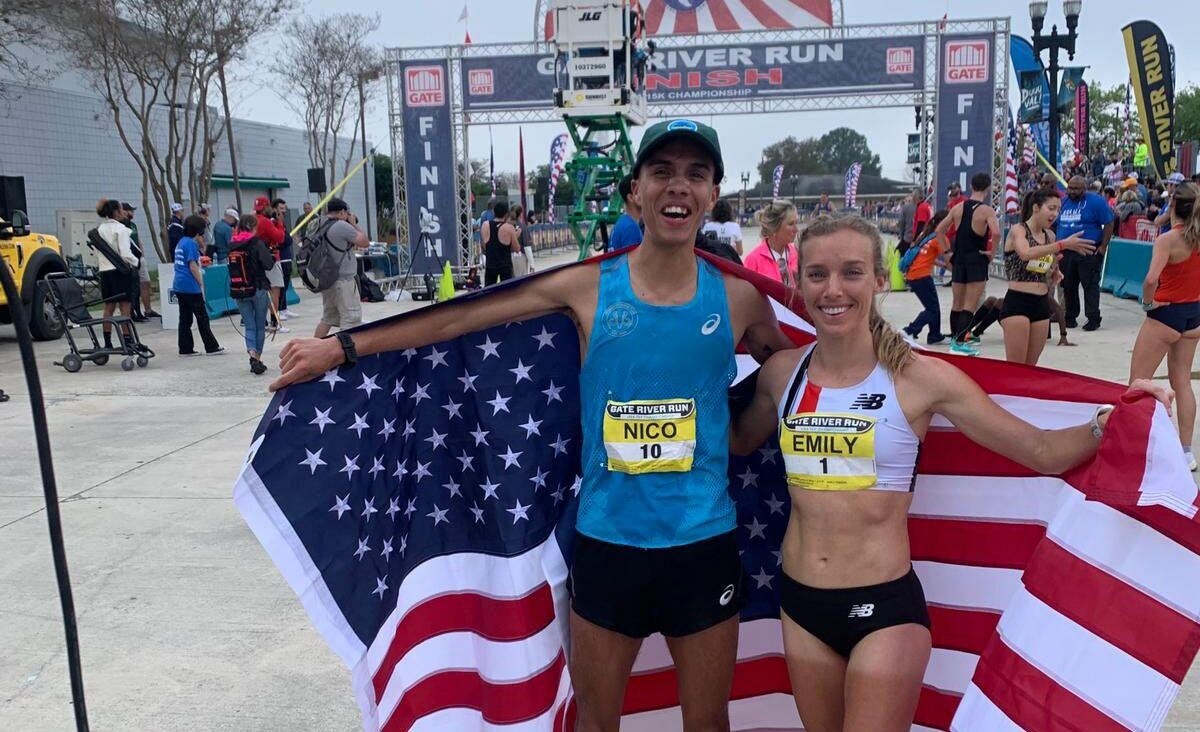
In typically humid Florida conditions, Sisson led the elite women’s race right from the gun. In the early kilometers she had company from both Emily Infeld (Nike) and Emily Durgin (adidas), but by the 5-kilometer mark (15:38) she already had a six-second lead. Running her first race since placing tenth in the 10,000m at the Tokyo Olympics last August, Sisson found herself in the same position as last year: running alone and against the clock.
“It’s my first race back from Tokyo, so it’s just good to push my body that hard,” Sisson told Chris Nickinson of USATF.tv in her post-race broadcast interview. “I haven’t done that in so long now.”
Sisson, 30, who lives in the Phoenix area but has been training recently at high altitude in Flagstaff, Ariz., checked her watch a few times as she clicked off her kilometers in the 3:10 range. Her splits were showing that she had a chance at Shalane Flanagan’s American record of 47:00 set at the same race in 2014. But ascending the 141 foot (43m) high Hart Bridge which begins at about 13 km, Sisson lost too much time and had to settle for the #4 USA performance ever, behind only Flanagan and Olympic bronze medalist Deena Kastor who ran 47:15 in 2003 and 47:20 in 2007.
“It felt good to get out there and hoping this is a good springboard for the rest of the year,” Sisson added.
Emily Durgin was a clear second in 49:17 and Emily Infeld got third in 49:46.
Nico Monatanez Gets 1st National Title
Montanez, 28, who is coached by Andrew and Deena Kastor, stayed tucked-in to the men’s lead pack for nearly the entire race. Two-time Olympic medalist Galen Rupp (Nike) led for more than two thirds of the race, splitting 5-K in 14:27 and 10-K in 28:52 with steeplechaser Hilary Bor (Hoke One One) on his heels. Montanez waited for the incline on Hart Bridge before attacking the field. He quickly opened a big lead. Montanez said that his move wasn’t spontaneous.
“It wasn’t a moment like that where I’m like, oh, I had the lead and time to go,” Montanez said in his post-race broadcast interview. “This thing was planned, it was maneuvered, it was thought out, it was prayed for. This is something that has been on my mind. This is Andrew and Deena Kastor, both of my coaches. This is their recipe.”
Montanez crested the bridge with none of the other men still within striking distance and was able to enjoy the final kilometer to the finish. Behind him, Leonard Korir, a 2016 Olympian, out-sprinted Bor for second place, although both men were given the same time: 43:14. Rupp, who is also running the United Airlines NYC Half on March 20, faded in the last two kilometers and finished seventh in 43:31.
Todd Williams’s championships, race and national record of 42:22, which was set in 1995, stood up yet another year.
The Gate River Run was never cancelled due to the pandemic. It was held on March 7, 2020, just before the initial pandemic shutdown, and race director Doug Alred was able to stage the race in 2021 early in the USA mass-vaccination process by cutting the field size in half to about 6700 finishers and employing social distancing. The event has hosted the USATF Championships since 1994.
The Gate River Run is part of the USATF Running Circuit. The next event is the USATF 1 Mile Road Championships to be held in Des Moines, Iowa, on April 26
(03/06/2022) ⚡AMPGate River Run
The Gate River Run (GRR) was first held in 1978, formerly known as the Jacksonville River Run, is an annual 15-kilometer road running event in Jacksonville, Fla., that attracts both competitive and recreational runners -- in huge numbers! One of the great running events in America, it has been the US National 15K Championship since 1994, and in 2007...
more...Mokoka breaks world 50km record with 2:40:13 in Gqeberha
South Africa’s Stephen Mokoka stepped up to 50km in style on Sunday (6), running 2:40:13* to break the men’s world record for the distance at the Nedbank #Runified 50km – a World Athletics Elite Label road race – in Gqeberha.
The three-time Olympian has been running marathons for more than a decade but made history in his very first 50km race, following the pacemaker through half way in 1:21:03 and then breaking away after 35km (1:52:53) with a 2:56 kilometre to put himself on world record schedule.
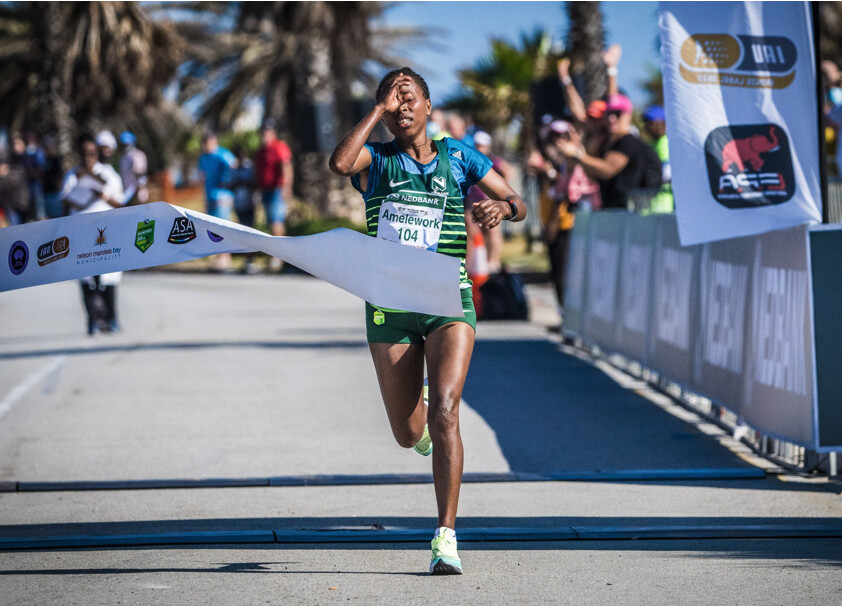
The 2019 world marathon fifth-placer finisher held that pace on the 10km loop course, running a negative split (1:19:10 for the second half) after a solo run to victory. He won by almost four minutes and improved the inaugural world 50km record of 2:42:07 that had been set by Ethiopia’s Ketema Negasa at the same event last year.
"I’m tired," Mokoka said with a smile in his post-race interview. "It’s a long way and I don’t know how I’m going to feel later, but I enjoyed it."
The performance further demonstrates Mokoka's impressive range. The 37-year-old has claimed numerous national titles in his career so far, from 1500m up to the marathon. His marathon best is 2:07:40 from Shanghai in 2015, while he set the South African half marathon record when running 59:36 to place seventh at the 2020 World Half Marathon Championships in Gdynia.
Tete Dijana was runner-up to Mokoka in Gqeberha, clocking 2:44:08, with their compatriot Edward Mothibi – the 2019 Comrades Marathon winner – third in 2:45:27.
Given the increasing popularity of 50km road races, the decision to add the distance to the list of events for which world records are recognised was made at the World Athletics Council meeting in Tokyo in July. Negasa’s 2:42:07 was then ratified as the inaugural men’s world 50km record at the start of this year, while the 3:04:24 run by South Africa’s Irvette van Zyl in the same 2021 event was ratified as the world 50km record for a women-only race.
That time had been the target for athletes in Sunday’s Nedbank #Runified 50km and the women's field went off with intent, the leaders passing 10km in 35:51 and half way in 1:31:34.Ethiopia’s Amelework Fikadu Bosho later dropped her rivals and although she was not able to maintain that world record pace, she hung on for a dominant women’s race win in 3:04:58.
Kenya’s Shelmith Muriuki was second in 3:08:30, while Van Zyl was third in 3:13:23.
(03/06/2022) ⚡AMPby World Athletics
Kipchoge and Kosgei race to Japanese all-comers' records in Tokyo
World record-holders Eliud Kipchoge and Brigid Kosgei recorded another two of the fastest marathons of all time in Tokyo on Sunday (6), running 2:02:40 and 2:16:02 respectively on their return to Japan.
Back in the country where they claimed their respective Olympic gold and silver medals seven months ago, they both used their great experience to leave their rivals behind in the closing kilometres and break the Japanese all-comers' records in the Tokyo Marathon, the first World Athletics Elite Platinum Label road race of the 2022 calendar.
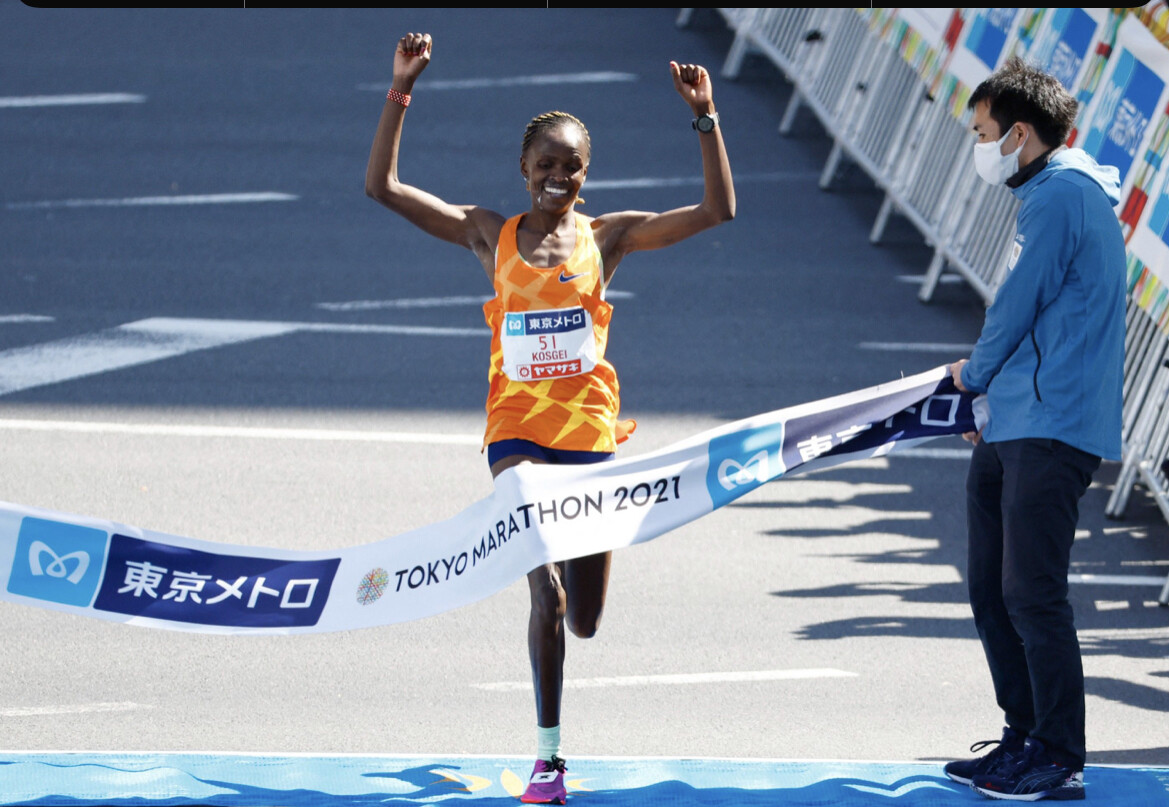
Kipchoge’s performance is the fourth-best ever behind his own world record of 2:01:39 set in Berlin in 2018, while Kosgei’s is a time that only she with her world record of 2:14:04 from Chicago in 2019 and Paula Radcliffe with her 2:15:25 from London in 2003 have ever beaten.
Kenya’s world bronze medallist Amos Kipruto had remained with Kipchoge until 36km and continued running solo to a PB of 2:03:13 in second, while Ethiopia’s Olympic and world medallist Tamirat Tola was third in the men's race in 2:04:14.
In the women’s race, Ethiopia’s 2019 Berlin Marathon winner Ashete Bekere was runner-up this time in a PB of 2:17:58, while another winner in Berlin – 2021 champion Gotytom Gebreslase – was third, 20 seconds behind her compatriot, in a PB of 2:18:18.
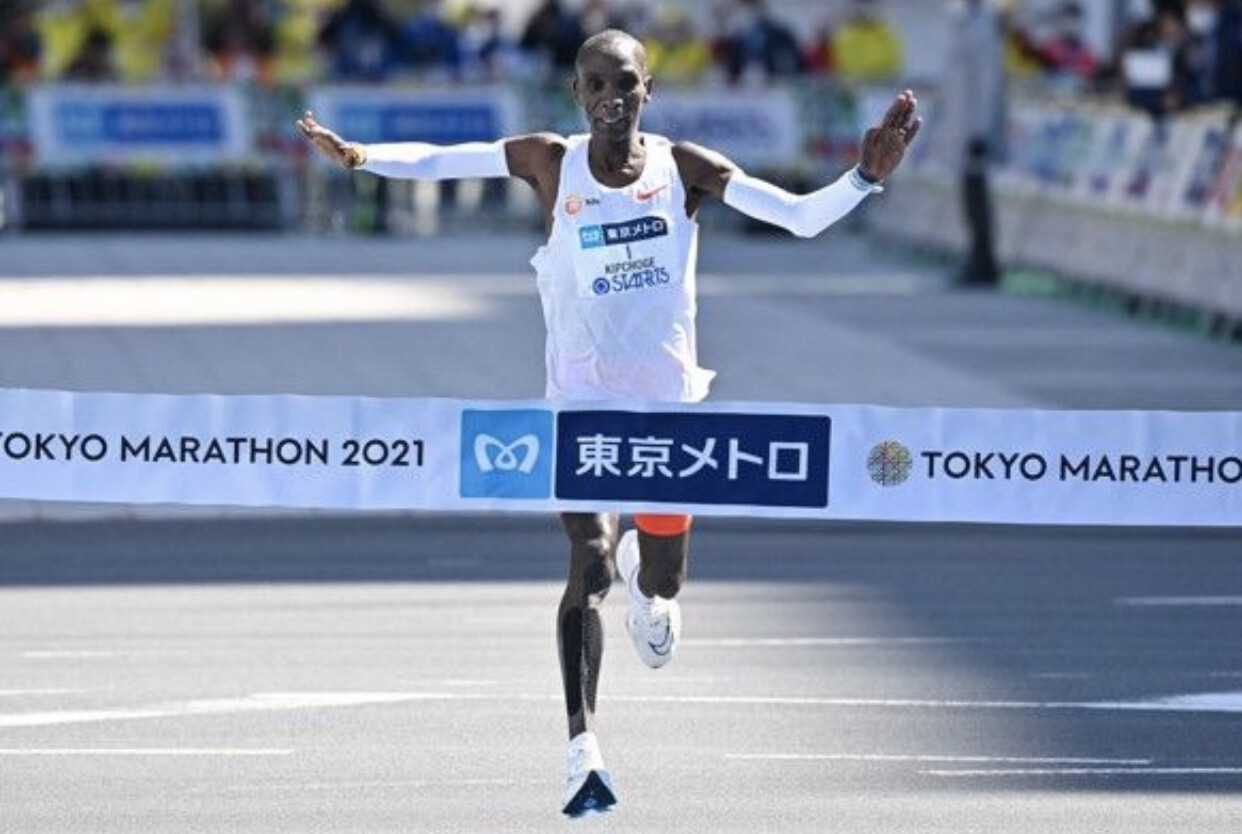
Although missing his targeted own Japanese record, Kengo Suzuki had another strong performance, running 2:05:28 to finish fourth as 22 athletes went sub-2:09. A total of 50 runners, including 43 Japanese athletes, dipped under 2:15, while in the women’s race the top five went sub-2:20, 13 went under 2:30 and Mao Ichiyama with 2:21:02 in sixth led the list of 13 Japanese athletes to go sub-2:40 on a sunny and cool morning.
Despite all he has achieved in the sport so far, marathon great Kipchoge has set himself another aim of winning each of the six Abbott World Marathon Majors. After four London wins, three Berlin victories and one Chicago triumph, he added Tokyo to the list on Sunday and will now aim for Boston and New York City at some point in the future to compete the set.
With his winning time in Tokyo, Kipchoge also extended his list of all-comers’ records, having now run the fastest ever marathons on German, British and Japanese soil with some of those majors wins. Only he with his world record and 2:02:37 run in London in 2019, plus Ethiopia’s Kenenisa Bekele with 2:01:41 in Berlin in 2019, have ever gone faster than the Kenyan’s winning time in Japan’s capital.
The race had been fast from the start and the leaders – with Kipchoge in control at the front of the pack behind the pacemakers – were well under world record pace as they passed 5km in 14:17. That pointed to a predicted 2:00:13 finishing time, but one based on a first 5km featuring a substantial downhill. At 10km the clock showed 28:37, with Ethiopia’s Shura Kitata dropped by that point, the 2020 London Marathon winner having struggled to keep in touch from 8km. A course mishap that saw runners go slightly off track just after 10km gave Kitata the chance to close the gap but he was soon dropped again from a lead group that featured Kipchoge, Kipruto and Tola, together with Ethiopia’s world silver medallist Mosinet Geremew and Kenya’s Jonathan Korir.
That five-strong pack remained together through 15km in 43:16, 20km in 57:53 and half way in 1:01:03, with the world record looking less of a target.
Geremew had been right on Kipchoge’s shoulder up to that point but he dropped back slightly at around 23km and one kilometre later the world silver medallist – who sits fourth on the world marathon all-time list with the 2:02:55 he ran in London in 2019 – pulled up and started to walk, with his hands on his head.
When the final pacemaker stopped at 27km, Kipchoge continued to push ahead and the race was down to three: Kipchoge, Kipruto and Tola, who started to lose touch 2km later. Kipchoge led through 30km in 2:02:09 and at this point a determined Suzuki had caught Kitata and was a couple of minutes behind the leaders.
Kipchoge and Kipruto were side-by-side through 35km in 1:41:30 and then Kipchoge began to make his move. He was a stride ahead at 36km and that increased to around five seconds over the next kilometre as the athletes made a turn and began running into a headwind. But he hung on to record the fastest marathon ever run in Japan by over a minute and claim a 33-second victory.
“I am really happy,” said two-time Olympic marathon winner Kipchoge. “I am excited to be here in Japan, especially after winning the Olympic Games in Sapporo. I really appreciated the crowd.”
Before the race Kipchoge had written 'ST:RO:NG' instead of numbers on his finish time prediction card and the 37-year-old felt he had achieved his aim.
“I said I wanted to run strong in Japan and I did, I ran a course record,” he said. “I am really happy I won another major marathon.”
Kosgei, too, has multiple major marathon wins to her name, having triumphed twice in London and twice in Chicago. After securing silver at the Olympics behind her compatriot Peres Jepchirchir, she finished fourth in London just two months later but was back on top in Tokyo.
The women's race record had been held by Lonah Chemtai Salpeter with the 2:17:45 she set on a slightly different course in 2020 and that time always looked under threat. The leaders were on 2:15:44 pace for the first downhill 5km and then passed 10km in 32:14.
By that point, Kosgei was running as part of a larger mixed group along with fellow women’s race leaders Gebreslase and Bekere, plus Kenya’s Angela Tanui and Ethiopia’s Hiwot Gebrekidan. A chase group featuring Ichiyama and her compatriot Hitomi Niiya, who won the first Tokyo Marathon in 2007, plus Ethiopia’s Helen Bekele and the USA’s 2020 London Marathon runner-up Sara Hall was 30 seconds back.
The same group of five led through 15km in 48:21 and reached half way in 1:08:06. At 25km, passed by the leaders in 1:20:48, chase group athletes Ichiyama and Hall remained on national record pace but those aims began to move out of reach a short while later.
Kosgei was still in control with Gebreslase tracking her, and the pair had broken away by 35km, with 1:53:08 on the clock. Kosgei missed her drink at that point but she didn’t seem to mind as she forged ahead while Gebreslase dropped off the pace. Kosgei had broken away by 37km and went on unchallenged to record another magnificent mark.
Bekere – who ran 2:18:18 when finishing third at last year’s London Marathon – came through to claim the runner’s up spot and improve her PB by 20 seconds while Gebreslase also had the run of her life to match her compatriot’s former PB of 2:18:18, building on her 2:20:09 debut performance in Berlin.
Tanui was fourth in 2:18:42 and Gebrekidan fifth in 2:19:10, while Ichiyama secured sixth in 2:21:02, Niiya seventh in 2:21:17 and Hall eighth in 2:22:56.
With their respective 2:05:28 and 2:21:02 performances, Suzuki and Ichiyama achieved a combined time of 4:26:30 – the fastest recorded combined result for a married couple running in the same race.
Before the race, Kosgei had said her target time was “a secret” and although she went on to record the third-fastest ever women's marathon, she later explained how she felt the wind in the latter stages of the race had prevented her from again attacking 2:14.
(03/05/2022) ⚡AMPby World Athletics
Tokyo Marathon
The Tokyo Marathon is a world-renowned annual marathon held in Tokyo, Japan. As one of the prestigious Abbott World Marathon Majors, it attracts elite and amateur runners from around the globe. The race holds World Athletics Platinum Label status, recognizing its high competitive standards, top-tier organization, and international appeal. Sponsored by Tokyo Metro, the Tokyo Marathon has grown into one...
more...Athletics Canada names 18 athletes to World Indoor Championships team
On March 3, Athletics Canada announced the 18-member team that will represent Canada at the World Athletics Indoor Championships in Belgrade, Serbia from March 18-20. This team is made up of six men and 12 women who have successfully achieved the World Athletics Indoor standard in their event. Athletics Canada has chosen to send an experienced team, with 16 out of the 18 athletes selected having represented Canada on the world stage previously.
Toronto native and Bowerman Track Club member Gabriela DeBues-Stafford headlines the team, sitting at fifth in the World Athletics rankings over the 3,000m and first in the 5,000m. DeBues-Stafford has had a remarkable indoor season, breaking the Canadian indoor 3,000m and 5,000m records in back-to-back weekends. In Serbia, DeBues-Stafford will be among those contending for a medal in the women’s 3,000m.
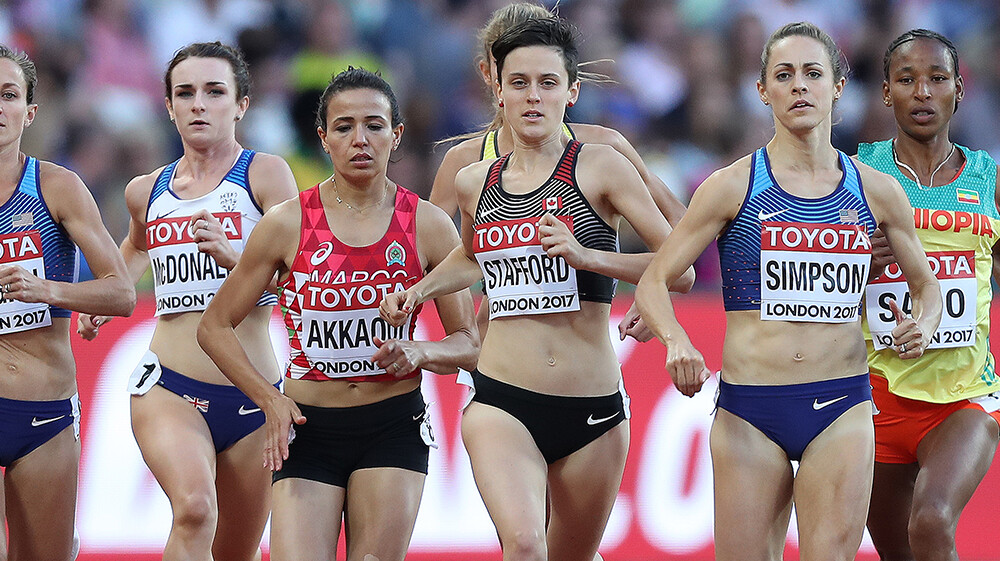
Canada’s 2021 Lou Marsh Award winner, Damian Warner, who won gold in the decathlon at the Tokyo Olympics, was also named to Team Canada, competing in the indoor heptathlon. Warner won silver at the 2018 World Indoor Championships in this event and he’ll be looking to upgrade that to gold in Serbia.
That was the only medal a Canadian brought home from in 2018. Team Canada’s head coach Glenroy Gilbert expects this year’s team to contend for high placings across all disciplines in Birmingham.

There are high expectations on what could be Canada’s best 4x400m women’s team ever, comprised of Natassha MacDonald, Lauren Gale, Kyra Constantine, Micha Powell and Sage Watson. The women’s 4x400m team finished fourth at the Tokyo Olympics and will be looking for redemption this time around in Serbia.
Indoor Worlds Team (information via Athletics Canada)
Athletes
Bolade Ajomale (Richmond Hill, Ont.) – Men’s 60 metres
Cameron Proceviat (Burnaby, B.C.) – Men’s 400 metres
Damian Warner (London, Ont.) – Men’s Heptathlon
Ehab El-Sandali (Toronto, Ont.) – Men’s 3,000 metres
Gabriela DeBues-Stafford (Toronto, Ont.) – Women’s 3,000 metres
John Gay (Kelowna, B.C.) – Men’s 3,000 metres
Julie-Anne Staehli (Lucknow, Ont.) – Women’s 3,000 metres
Kyra Constantine (Brampton, Ont.) – Women’s 4×400 metres
Lauren Gale (Ottawa, Ont.) – Women’s 4×400 metres
Lindsey Butterworth (North Vancouver, B.C.) – Women’s 800 metres
Lucia Stafford (Toronto, Ont.) – Women’s 1,500 metres
Madeleine Kelly (Pembroke, Ont.) – Women’s 800 metres
Marco Arop (Edmonton, Alta.) – Men’s 800 metres
Micha Powell (Toronto, Ont.) – Women’s 4×400 metres
Michelle Harrison (Saskatoon, Sask.) – 60 metres hurdles
Sage Watson (Medicine Hat, Alta.) – Women’s 4×400 metres
Sarah Mitton (North York, Ont.) – Shot put
According to Athletics Canada:
a second list of athletes who met the Athletics Canada indoor qualification standard in their respective events will be added to the team if they appear as “Qualified by Entry Standard” or “In World Rankings quota” on the March 9 World Athletics rankings list and the quota places remain open in their event.
The 2022 World Indoor Championships will kick off on March 18 and run until March 20.
(03/05/2022) ⚡AMPby Marley Dickinson
World Athletics Indoor Championships
World-Class Competition Lands in China: 2025 World Athletics Championships The global spotlight shines on China as it hosts the 2025 World Athletics Championships, bringing together the planet’s most elite runners, jumpers, and throwers. This prestigious event, organized by World Athletics, represents the pinnacle of track and field competition—where national pride, personal records, and world titles are on the line. ...
more...The five phases of training for a spring marathon
We are back to in-person racing, and spring marathons are on the horizon. If you’ve been training all winter, then every single hypothetical or thought about the race has crossed your mind. If you are currently dealing with a lull in your training, don’t worry, because every runner goes through it.
Here are the five phases of marathon training that every runner goes through:
Motivation phase (16-20 weeks until your race)
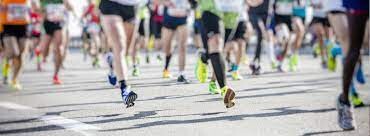
After contemplating signing up for that race you’ve been eyeing for the last three months, you’ve finally grown the courage to hit ‘register’. Now 16 weeks out, your motivation is at an all-time high. You even just brought a new pair of runners in honour of your achievement (clicking ‘register’). This is the phase where you tell everyone you know that you are going to run a marathon.
Strenuous phase (8-12 weeks until your race)
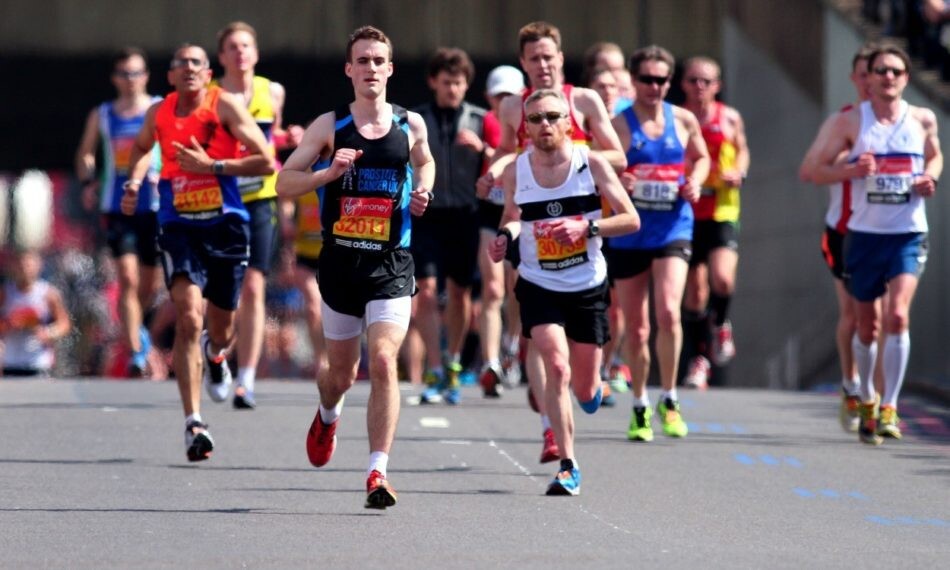
You are a month into your marathon training and this isn’t what you signed up for. Your long runs are getting longer, you seem to be falling asleep at work every day, and the “I am training for a marathon” excuse is no longer cutting it. There is still motivation left at this point, but you keep thinking about how you’ve only been training for four weeks and there’s still eight weeks left on your schedule. This is the phase where many break down.
The exertion phase (4-8 weeks until your race)
You’re scraping the bottom of the barrel for motivation, but now you can finally see a shard of light at the end of the training tunnel. Your mileage has reached an all-time high, and you have no idea how you’re doing it. Your life in this phase is run, eat, run and sleep, but nothing is stopping you now. All eyes are on the prize.
The carb-load phase (1-2 weeks until your race)
The marathon is closer than ever, and now you have started your taper. Your energy level is through the roof, and you are counting down the hours and minutes until the race. Your training diet has gone out the window, and you’ve eaten pasta four of the last five nights. At this phase, you are antsy, but you keep dreaming of the glory phase.
The glory phase (the finish line)
You can’t believe it–you did it! There are no words to describe your emotion when is time to celebrate. Congratulations, you’ve earned it. You now deserve to wear your medal for eternity.
(03/05/2022) ⚡AMPby Marley Dickinson
Olympian Ryan Hall Shared His Best Advice for Working Out Before a Big Race
The record-breaking marathoner offered his tips for optimizing your pre-race routine, as well as some common mistakes to avoid.
Former Olympic athlete Ryan Hall might have packed on the muscle and set his sights on mastering feats of strength since retiring as a professional long distance runner, but he still holds the American record for fastest marathon and the world record for fastest half-marathon. All of which is to say, if you're preparing for a race yourself, there are worse people to turn to for advice.
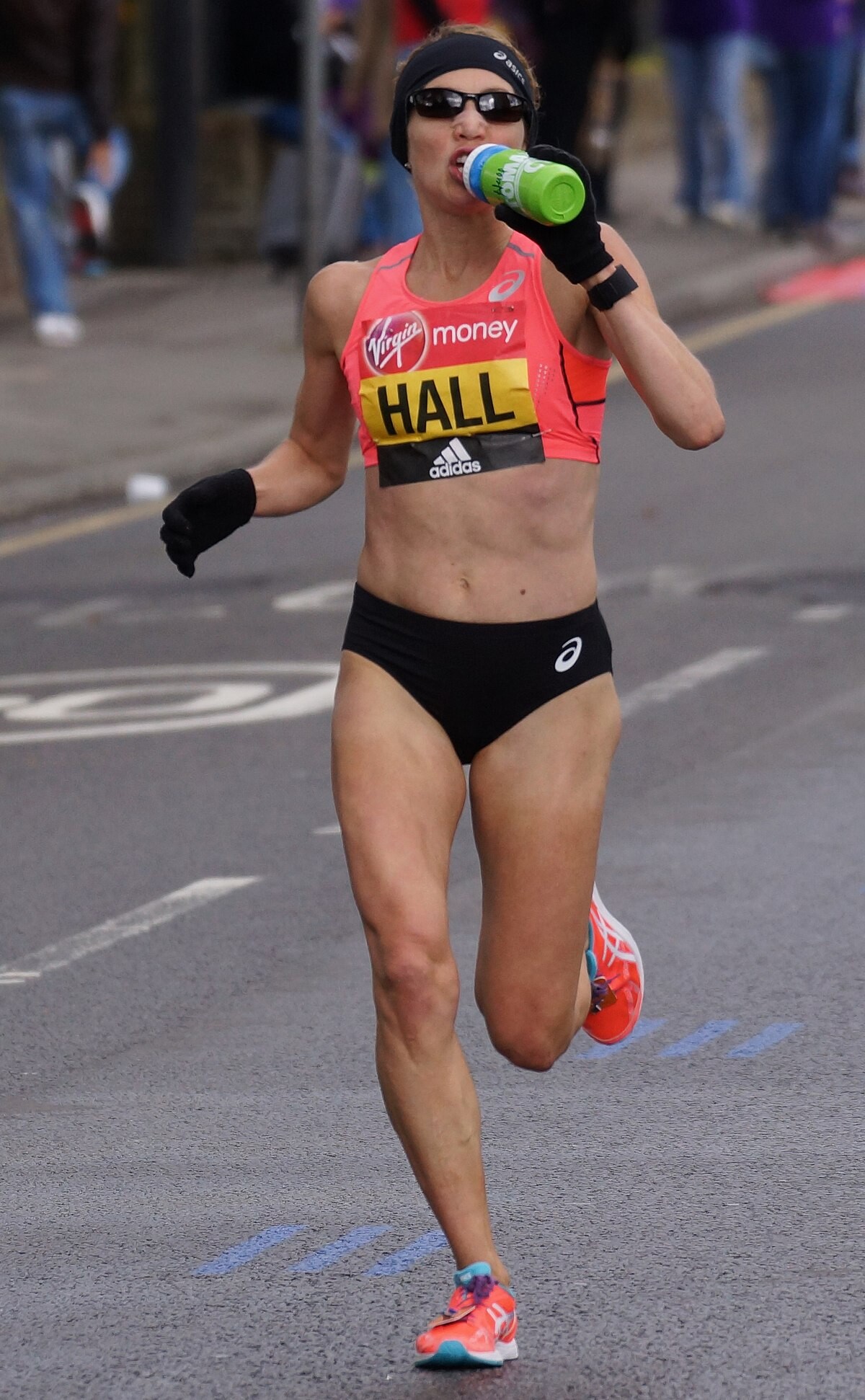
In the lengthy caption to a new Instagram post, which sees him coaching his wife and fellow ultrarunner Sara through her last training session prior to the Tokyo Marathon this coming Sunday, Hall shared his top tips on what to do—and what is best avoided—while working out before a big race day.
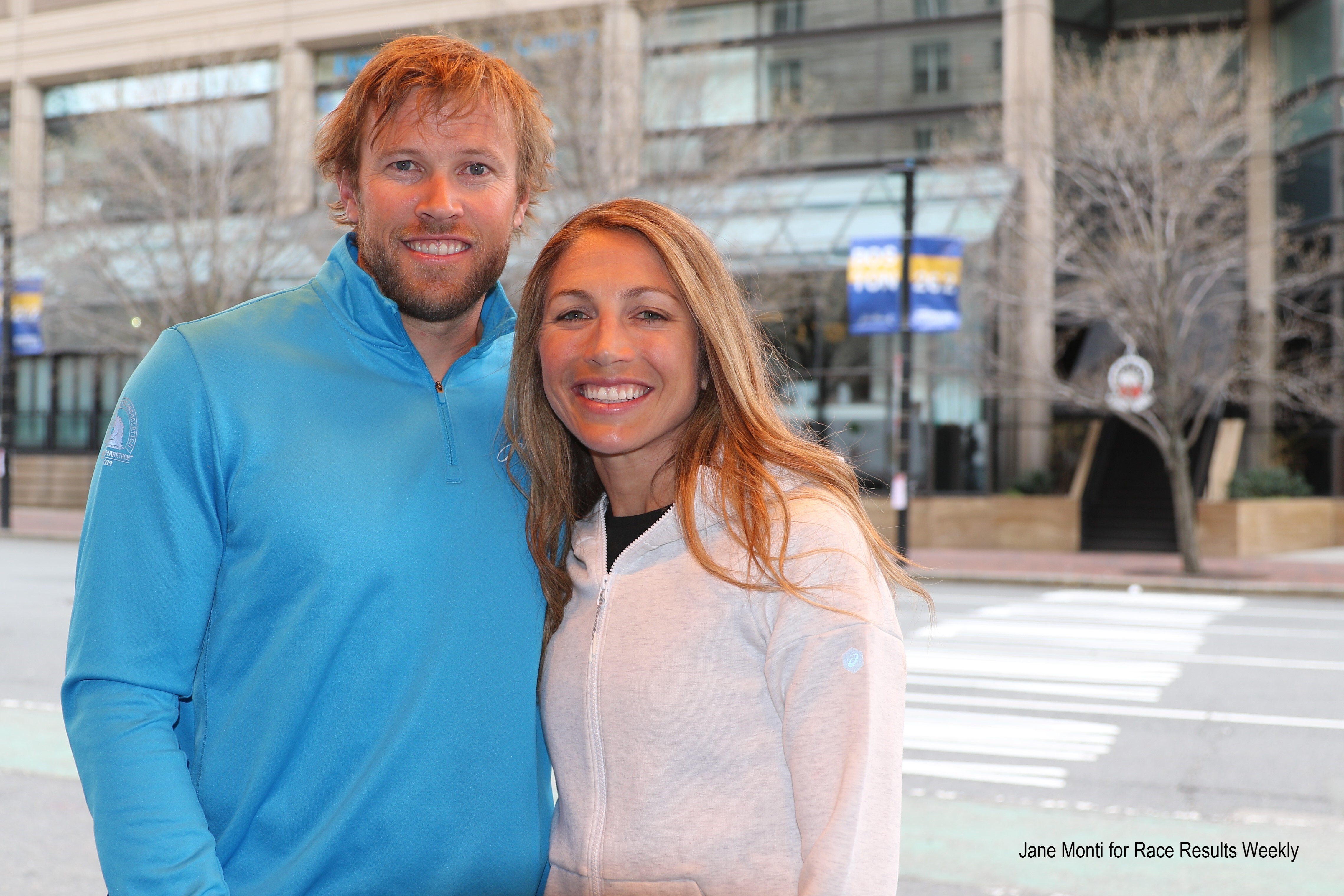
Hall notes that it can be tempting to go hard in order to try and and "prove" your fitness to yourself as you approach the big day, but that you need to resist this urge, as it can have a detrimental effect on your performance when it really matters. "This is where I see the most mistakes made," he says. "Whether it’s easy running or light workouts, the point is to show up to the starting line fresh and hungry rather than depleted and having left your best stuff in training."
If you're unsure of how intensely you should be running in the days leading up to a race, Hall suggests threshold running with long strides. In other words, running at a constant pace that does not cause lactic build-up in the muscles. "Most athletes come out of threshold workouts feeling much better compared to MVO2 max/interval workout," he says.
"Stick to what works for you," he also writes. "The only way to find out what that is is through experimentation. Play with the workout timing and components."
Preparation for a race is not just physical, though: Hall speaks about the psychological aspect as well, saying: "It’s most important that you believe in what you’re doing. Confidence is of utmost importance prior to a race."
(03/05/2022) ⚡AMP
by Mens Health
You Love Avocados, But Are They Actually Good for You?
Here’s how adding this fruit to your grocery list can help you maintain a well-balanced diet.
People go crazy for avocados. Blame the creaminess they add to dishes, how they serve up healthy fats, or just a good marketing campaign, but demand continues to climb for these small green fruits. In fact, consumption of avocados tripled from 2001 to 2018, according to the USDA Economic Research Service.
That’s not a bad thing, considering avocados are the real deal when it comes to packing essential nutrients for runners like potassium, magnesium, vitamin C, and more

But if you’re not sure what the hype is all about—or you eat ‘em but you’re unsure about avocado’s nutrition—we spoke with a dietitian and sorted through the research to bring you all the health benefits. Plus, how you can add this fruit to your diet.
What nutrients will you get from avocados?
The nutritional value of avocados will differ slightly depending on the variation and size. Here are the nutrition facts for one full avocado grown in the United States, according to the USDA.
322 calories
4g protein
30g total fat
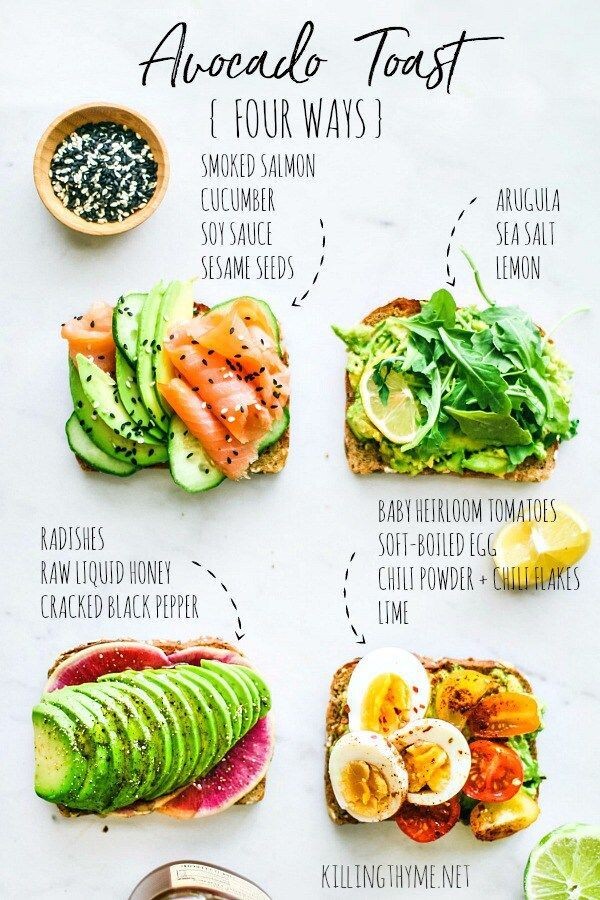
17g carbohydrates
14g fiber
24mg calcium
58mg magnesium
105mg phosphorous
975mg of potassium
14mg sodium
20mg vitamin C
Plus, traces of other nutrients your body will need to replenish after a workout like iron, sodium, and zinc.
What are the health benefits of eating avocados?
Here’s how runners can benefit from eating avocados, according to Yasi Ansari, M.S., R.D.N., C.S.S.D., national media spokesperson for the Academy of Nutrition and Dietetics, as well as recent research.
1. You get a great source of energy
Ansari says avocados are great for runners because they can help you fuel your workouts. “Foods that contain fats like avocado, offer an excellent source of energy. Fats can also help to fuel long-duration, low-to-moderate intensity exercise. It is key to incorporate foods like avocado into a runner’s diet to help them meet their increased energy needs and support good health and recovery,” she says.
2. They can help you maintain a healthy gut
Ansari says avocados can help improve your gut health because they contain nearly 14 grams of fiber, a nutrient that helps with GI regularity, as well as keeping you full post-meal. “Foods that increase satiety can help to keep athletes feeling full and more satisfied for longer periods of time,” she says. Plus adding avocados to you diet can help you meet your daily fiber requirement of 25 grams for women and 38 grams for men.
But remember too much fiber can lead to discomfort for some people, especially when consumed too close to a run. Try eating avocados on training days to gauge how your body responds, since everyone will respond differently. And if you eat avocados before a race, Ansari suggests allowing enough time for digestion. Depending on how your body responds that might mean having them the night before you hit the starting line, eating them a few hours beforehand, or waiting to enjoy them as a postrace meal or snack.
3. They offer up must-have magnesium
Avocados are rich in magnesium, which is an important mineral for runners because it helps regulate muscle and nerve function. “Not getting enough magnesium can impair exercise performance and can increase the effects of oxidative stress from strenuous training,” Ansari says.
4. Avocados are a great source of potassium
Surprisingly, there’s more potassium in an avocado than a banana. Potassium is a key nutrient your body needs to complete important bodily functions, like regulating heart rate and blood pressure and keeping you hydrated, Ansari says. “Potassium, sodium, and chloride also work together to help regulate fluid balance. An athlete with a higher sweat rate may require more potassium and sodium from foods,” she says. Avocado offers some sodium too, so you get both electrolytes.
5. They pack antioxidants and anti-inflammatory properties
Avocados contain nutrients like phytosterols, vitamin C, and vitamin E , which offer antioxidants that fight off free radicals, helping you stave off sickness and battle inflammation. “Vitamins C and E from foods can help to reduce cell damage, inflammation, and increase overall antioxidant activity that provides health-protective properties,” Ansari says.
6. They can help your body absorb vitamins
When mixed with other ingredients, like a kale salad with carrots, mushrooms, tomatoes and seeds, avocados can also help your body increase the absorption of fat-soluble vitamins such as vitamins A, D, E, K, Ansari says.
7. You get heart-healthy fats that help regulate cholesterol
Avocados are a heart-healthy fat—primarily rich in monounsaturated fatty acids—that can add flavor to any meal and snack, Ansari says. According to the American Heart Association, monounsaturated fats can help reduce bad cholesterol levels in your blood which can help lower your risk of heart disease and stroke.
Are there any downsides to eating avocados?
As with any food, it’s possible to overdo it on avocados. You probably don’t want to eat multiple every day. They are also higher in calories and fat, so consider your goals when determining how much of each you need and how much you want to get from avocados alone. And make sure you’re switching up your sources of healthy fats and fiber, too, incorporating other ingredients like olive oil and a mix of fruits and veggies in your diet.
Also, keep in mind that avocados are higher in FODMAPs, according to the Cleveland Clinic. These types of carbohydrates can cause digestive discomfort in some people, so it’s worth keeping intake low if you’re aiming to follow a low-FODMAP diet.
What’s the healthiest way to add avocados to your diet?
Bottom line, anyone can gain from adding this fruit to their diet, especially runners. And adding more avocados to your diet is pretty simple. Try these tips from Ansari for a place to start getting more of the creamy fruits into your meals:
Add it to a smoothie to make it thicker in texture
Mix chopped avocados into a salad to get those fats that help you absorb vitamins
Add avocado spread to a sandwich of your choice in place of mayo
Make avocado toast with eggs and tomatoes for a balance of carbs, protein, and fat
Add avocados to your taco, burrito, or burrito bowl for a Mexican-inspired dish
Make ice cream by freezing avocado pulp and adding honey for a tasty frozen treat
(03/05/2022) ⚡AMPby Runner’s World
Here's Why You Should Watch the 2022 Tokyo Marathon
World record-holders Eliud Kipchoge and Brigid Kosgei headline the return of this World Major Marathon.
On Sunday, March 6, the Tokyo Marathon will finally take place after not having been run since March 2020. Nearly 25,000 athletes will storm the streets of Japan’s biggest city to chase the finish line and personal bests.
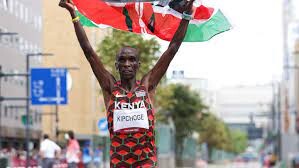
The 2021 Tokyo Marathon was set for October last year, until the COVID-19 Delta variant forced postponement. Race officials decided to move the 2021 edition to March 6 this year and formally cancel the 2022 race.
How to Watch the 2022 Tokyo Marathon
WHAT: 2022 Tokyo Marathon
WHERE: Tokyo, Japan
WHEN: Sunday, March 6 in Tokyo. Saturday, March 5 in the United States. Professional wheelchair racers begin at 7:05 p.m. ET. The professional racers start at 7:10 p.m. EST.
HOW TO WATCH: Flotrack will stream the event on Saturday, March 5, starting at 6:30 p.m. EST.
What to Watch For
Eliud Kipchoge Attempts Ninth World Major Marathon Win
World record-holder and two-time Olympic champion Eliud Kipchoge has already cemented his legacy. But he’s now chasing the goal of winning all six World Marathon Majors. He already owns gold medals from Berlin, Chicago, and London—leaving Boston, New York City, and Tokyo as the remaining stops.
An abundance of talent joins Kipchoge on the start line. 2020 Tokyo Marathon winner Legese Birhanu of Ethiopia hopes to repeat as champion. Mosinet Geremew of Ethiopia has run 2:02:55, making him the fourth-fastest man in history, and will also challenge for the victory. Behind them are two others with sub-2:04 PRs: Amos Kipruto of Kenya and Tamirat Tola of Ethiopia. Japan’s chance for gold lies on the shoulders of Kengo Suzuki, who finished fourth at the Chicago Marathon last fall and owns a personal best of 2:04:56, which is the Japanese record.
Brigid Kosgei Headlines Women’s Field, Sara Hall Chases American Record
World record-holder Brigid Kosgei is the favorite thanks to her 2:14:04 personal best and Olympic silver medal from last summer. Three other women competing have broken 2:20 for the marathon: Angela Tanui of Kenya and Ashete Bekere and Hiwot Gebrekidan of Ethiopia.
Coming off a half marathon American record in Houston, Sara Hall attempts to run under the 2:20 barrier for the first time. Doing so could scare Keira D’Amato’s U.S. record of 2:19:12, also set in Houston in January.
Japan’s Mao Ichiyama boasts a top-10 finish at the Olympic marathon. With a 2:20:29 personal best, she’s the home country’s ringer for a podium spot—and potentially a national record.
(03/05/2022) ⚡AMP
by Runner’s World
A Training Plan To Run A 200 Mile Race
Think about what it means to sign up for a 200 mile race. You saw all of the other options out there, from shorter distances to going to Cancun. And you thought Let's see where the limits truly are. That is courageous as hell, the tribulations of being human summarized in what motivates many of the greatest adventurers: because it's there. Heck yes! I am so damn proud of you, and a bit in awe too.
(If you make the saying past tense by changing it to because it was there, you have the epitaph on many tombstones, so be smart too.)

Almost a year ago, I wrote a training checklist for a 200-mile race. I threatened writing a 16-week training plan for these monstrous events if enough athletes were interested. Many athletes were interested. It was officially a deadline.Oh crap.
Weeks passed, and nothing. Then months. Now, almost a year. I'm sure there are a number of doomsday cults that have been watching their inboxes, sipping Kool Aid while they await the plan that was promised.
Well, it's officially here-it's 200-mile training plan day. Call me the Baby Coach because I met the deadline in a bit over 9 months.
I joke because I have actually procrastinated this article topic for SO MANY MONTHS. And I think it's because I'm scared. My fear is that 200 milers rely on uncertain training principles, existing in the liminal space between body and mind. There are no good studies on training for the distance, just a compilation of anecdotes from successful athletes. Maybe those athletes would be successful with a number of different approaches.
Maybe the true secret has something to do with genetic variations in fatigue resistance (podcast here). Maybe these distances are just a mix of random chance and logistics. We don't know for sure.So what I describe today is based on application of general physiological principles for long-distance events over 24 hours, along with how my co-coach Megan and I have applied them for athletes we coach. That includes John Kelly, who won 2021 FKT of the Year for his performance on the 268-mile Pennine Way.

But, for full disclosure-I think John's secret is that he's extremely hard working, talented, and driven, as an athlete and person, destined for success at whatever he pursues in life. Also, perhaps he's a witch.
Before getting to the plan, I'll list the 7 training principles from the previous article, along with how the plan puts them into practice.Training Tip 1: Aerobic volume matters via running, hiking, and cross-training. Maximize consistency with activities five to six days a week.
The plan focuses on lots of easy running and hiking, including optional doubles. In particular, treadmill hiking and running can allow for higher training volume with lower impact.
Training Tip 2: Raise aerobic threshold with enough speed work to develop neuromuscular and biomechanical systems. Some strides plus one workout a week is plenty.
The workouts are deemphasized relative to one of my other training plans, focusing on building musculoskeletal and mechanical strength and power to let all efforts correlate with faster paces, but without overloading stress on non-specific intense days. Strides still play a big role, since maximal output has a strong relation to output below aerobic threshold.
While it's not the primary goal, the hope is that an athlete finishes this plan with improved running economy to use in future training cycles, even if that speed is not as relevant to race performance as it would be for less diabolical distances.Training Tip 3: Dial in sleep/recovery and stress balancing.
Rest days are a key part of the plan. We don't want to elevate fatigue as a virtue.
Training Tip 4: Do some specific efforts where you are out there for many hours, moving on a fatigued body.
Back-to-back runs and hikes are a key part of training, often every other week to allow for recovery (and to avoid occupying every waking hour with training). The long run-long hike/run weekend structure allows for higher volume with reduced risk of injury or overstress.
While the plan includes a training race option 5 weeks out from race day, a 100k or 50 miler anytime in the 4 to 8 weeks before the race would work wonderfully, just make sure you have 4-6 days of recovery afterward before gradually working back into the plan. And make the big Sunday hikes focused efforts if possible, incorporating some downhill running if things feel good.
Training Tip 5: Strong downhill training and tempo running during long runs can prepare the muscles for later in races.
While the race itself will be relatively slow, the running in the plan is rarely as slow as the average pace on race day. Resilience to muscular damage and fatigue is helped by introducing threshold tempos in long runs, requiring glycogen recovery and improving fat oxidation, plus an emphasis on strong downhills.Training Tip 6: Do strength work.
Strength work is a non-optional part of the plan, unlike some of the plans I have written for shorter distances. In peak weeks, that means 2 short "Mountain Legs" sessions and 2 medium "Speed Legs" sessions. Add weight to the Speed Legs for additional resilience. To level up, do the Strength Work Cheat Sheet.
Training Tip 7: Practice fueling in long runs.
On most Saturday long runs, practice fueling with an array of foods like you will on race day. And throughout the training cycle, make sure you're eating plenty to fuel the work.The 200-mile plan is designed for athletes who already have a base. Each day is given as a range of miles, with the design being to stay at the low, middle, or high end without going back and forth too much week to week. Start at the lower end of the range unless you have healthily run higher mileage in the past.
You can think of it as 3 different plans in one!
Other Things To Know!
Within the plan, there are goals and descriptions for most key days, along with links to articles that explain terminology. Most fun of all: complete this plan, and even if the 200 miler doesn't go perfectly, you'll be ready to rock future events too.What's beyond the horizon?
And what's beyond the next horizon after that? I don't know the answers to those questions. I'm not sure that 200-mile racers have the answers either. But I love the humanity of stubbornly chasing the horizon. Again and again and again.
Because it's there.
(03/05/2022) ⚡AMPby David Roche Trail Runner Magazine
Race day hydration:No matter what the weather does, here's how to hydrate properly during your race
Experts have not always agreed on guidelines for fluid intake during runs and races. Some say you should make a hydration plan to avoid dehydration, others say you should simply listen to your body’s thirst cues to know when to drink and others argue you shouldn’t drink to satisfy your thirst to prevent drinking too much. Thankfully, sports nutrition researcher Louise Burke recently cleared the air a bit for us.
Dehydration, overhydration and performance
Studies have shown that dehydration negatively affects performance. This has prompted sports scientists and nutritionists to encourage runners to drink a mixture of water and electrolyte beverages during long runs and races to try to keep up with the fluid they’re losing through sweat.

Others, however, have refuted that strategy, arguing that it encourages runners to drink too much and puts them at risk for hyponatremia, which occurs when the sodium levels in your blood are too low as a result of drinking too much water. Instead, they suggest intentionally drinking slightly less than you would otherwise.
Then there are those who argue runners should do away with hydration plans, and simply listen to their thirst cues to direct them to drink. So what’s the right answer?
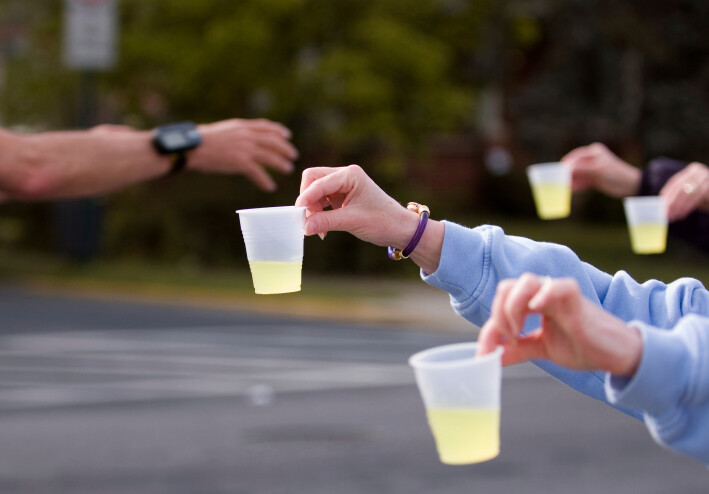
Hydrate for the weather
For example, if you’re racing in the heat and you tend to be a reluctant drinker, you should come up with a hydration plan pre-race and figure out a way to remind yourself to drink throughout the competition. On a more temperate day, by contrast, you may be able to use your natural thirst cues as a more reliable source of when to drink.
In contrast, if it’s a cool day and you’re running a race with a lot of aid stations, you may actually need to come up with a plan to avoid drinking to thirst. This is especially true for beginner runners, who are more likely to be “eager drinkers” during a run or race.
The bottom line
There are a lot of factors that influence how much you should drink during a run or race, and which strategy you should use. The best thing runners can do is understand themselves and their drinking tendancies to figure out which strategy will work better for them in different conditions.
(03/04/2022) ⚡AMPby Brittany Hambleton
2022 Tokyo Marathon Women's Preview
The women’s race at the 2022 Tokyo Marathon has a little something for everyone. There’s Brigid Kosgei, the Kenyan world record holder attempting to reassert herself as the world’s best marathoner after Peres Jepchirchir claimed that title in 2021.
There’s Angela Tanui, the breakout star who won three marathons last year, capped by a 2:17:57 course record in Amsterdam. And for American fans, there’s Sara Hall, fresh off setting a US half marathon record in Houston in January and ready to mix it up with the best in the world on a flat, fast course.
Women Elite Entries:
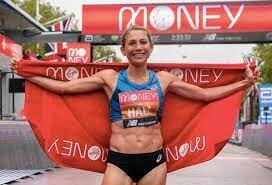
Brigid Kosgei (Kenya) – 2:14:04 (Chicago 2019)
Angela Tanui (Kenya) – 2:17:57 (Amsterdam 2021)
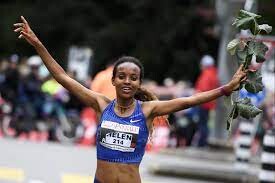
Ashete Bekere (Ethiopia) – 2:18:18 (London 2021)
Hiwot Gebrekidan (Ethiopia) – 2:19:35 (Milan 2021)
Gotytom Gebreslase (Ethiopia) – 2:20:09 (Berlin 2021)
Mao Ichiyama (Wacoal) – 2:20:29 (Nagoya 2020)
Sara Hall (U.S.A.) – 2:20:32 (Marathon Project 2020)
Helen Bekele (Ethiopia) – 2:21:01 (Tokyo 2019)
Natsuki Omori (Daihatsu) – 2:28:38 (Nagoya 2021)
Shiho Kaneshige (GRlab Kanto) – 2:28:51 (Osaka Int’l 2020)
Hitomi Niiya (Sekisui Kagaku) – 2:30:58 (Nagoya 2009)
Miharu Shimokado (SID Group) – 2:32:48 (Osaka Int’l 2020)
Yui Okada (Otsuka Seiyaku) – 2:32:00 (Nagoya 2020)
Hitomi Mizuguchi (Uniqlo) – 2:32:33 (Osaka Int’l 2020)
Mai Fujisawa (Hokkaido Excel AC) – 2:35:52 (Kanazawa 2021)
Tomomi Sawahata (Sawahatters) – 2:36:45 (Osaka Int’l 2022)
Debut / Do-Over
Kaori Morita (Panasonic) – 1:10:28 (Nat’l Corp. Half 2021)
Rika Kaseda (Daihatsu) – 31:39.86 (Nat’l Championships 2020).
Can Brigid Kosgei Return to the Top?
From the fall of 2018 through the fall of 2020 — four marathon cycles — Brigid Kosgei was the best marathoner in the world. By the end of that stretch, the gap between Kosgei and everyone else was not close. Her 2:14:04 in Chicago in 2019 was 81 seconds faster than Paula Radcliffe‘s previous world record and almost three minutes faster than any active marathoner had ever run. In her next race, 2020 London, she ran 2:18:58 in miserable conditions on a day when none of the rest of the world’s best marathoners could crack 2:22. She was in her own marathon galaxy.
Last year, however, Kosgei came back to Earth. That’s usually what happens when someone becomes World #1 in the fickle event that is the marathon (well, unless your name is Eliud Kipchoge). Kosgei was far from ordinary in 2021 — she still claimed second at the Olympics and fourth in London (in 2:18:40) just eight weeks later — but she was not the all-conquering giant of the previous three years. By the end of last year, the discussion about the world’s greatest female marathoner featured two women, and Kosgei wasn’t among them (right now it’s Olympic/NYC champ Peres Jepchirchir or London champ Joyciline Jepkosgei, who will race each other next month in Boston).
A win in Tokyo would nudge Kosgei back into that conversation, and she will start as the favorite on Sunday. Remember, after that dominant stretch from 2018-20, talk was starting to heat up that Kosgei could be the best marathoner the world has ever seen. That’s the trajectory she was on, and she only just turned 28 years old. If she can return to that sort of form, she’ll be your champion in Tokyo.
The Other Women Who Could Win
The top challenger to Kosgei in Tokyo is Angel Tanui, who emerged from relative obscurity to become one of the world’s top marathoners in 2021. Tanui, now 29, began last year as a serviceable road runner with pbs of 31:51/67:16/2:25:18 but wound up winning marathons in Dhaka (Bangladesh), Tuscany, and Amsterdam and finish as LetsRun’s third-ranked marathoner in the world. Tanui was only in Amsterdam because visa issues had prevented her from running Boston the previous week, but it certainly didn’t affect her race as she ran 2:17:57 to smash the course record. 2:17 doesn’t mean what it used to — these days, it’s barely fast enough to rank in the top 10 all-time — but it’s still plenty quick and signals Tanui as a major player.
Another woman to watch on Sunday is Ethiopia’s Ashete Bekere. She was only 7th in her last visit to Tokyo in 2016, but since then she’s won big-time races in Valencia (2018), Rotterdam (2019), and Berlin (2019). In her last marathon, she ran a pb of 2:18:18 to finish third in London, defeating Kosgei in the process (though Kosgei was just eight weeks removed from the Olympics). Clearly, Bekere has what it takes to win a major.
The other two notables in the field outside of Sara Hall — we’ll get to her in a minute — are the women who went 1-2 in Berlin last fall. Berlin was one of the weaker majors in 2021, but it was hard not to be impressed by Ethiopia’s Gotytom Gebreslase, who won the race convincingly in her debut in 2:20:09. Gebreslase is coached by the famed Haji Adilo, and he told Women’s Running he’s been impressed by what he’s seen recently:
“[Gebreslase] has even made big advancements in her training since Berlin,” Adilo says. “She set a personal best in the half marathon in December [1:05:36 in Bahrain], and if the weather and conditions are good in Tokyo, she could do something very special there.”
The runner-up behind Gebreslase in Berlin, Hiwot Gebrekidan, also had a good year in 2021 as she ran a pb of 2:19:35 to win Milan in May. But against this Tokyo field, 2:19 may not be good enough to challenge for the win.
Sara Hall Chases a Fast Time
Sara Hall running Tokyo is something we don’t get often: one of America’s top marathoners racing against the best in the world in a fast international marathon. Last month, Molly Seidel told Track & Field News that American pros “are gonna get our asses handed to us nine times outta ten, if the course is fast.”
(03/04/2022) ⚡AMPby Jonathan Gault
Tokyo Marathon
The Tokyo Marathon is a world-renowned annual marathon held in Tokyo, Japan. As one of the prestigious Abbott World Marathon Majors, it attracts elite and amateur runners from around the globe. The race holds World Athletics Platinum Label status, recognizing its high competitive standards, top-tier organization, and international appeal. Sponsored by Tokyo Metro, the Tokyo Marathon has grown into one...
more...Should your warmup and cooldown count as mileage?
Warmups and cooldowns before a race or speedwork are a tale as old as time, but does slow mileage “count”? A tweet by an American running coach elicited much debate, asserting that warmup, cooldown and recovery miles should not count toward your weekly mileage.
As a coach and runner, I would suggest you absolutely count all of your weekly mileage, as every step you take while running is beneficial in some way. There is no such thing as trash miles.
There are miles that are more efficient at building your aerobic engine (such as tempo runs), and there are miles that are more efficient at building an endurance base (long runs). But even slow miles can actively stimulate your heart rate and get your muscles ready for a higher intensity activity.
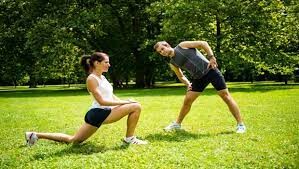
Most runners will use a warmup or cooldown to prepare their body physically and mentally for exercise. But in a 2007 study, researchers from the University of Sydney found that a warmup jog performed immediately before a run produced a small delay in muscle soreness, but a cool-down after does not.
Besides delaying onset muscle soreness, warming up also increases your heart rate, which enables more oxygen to reach your muscles through anaerobic exercise. The point of a cooldown is the opposite, bringing your heart rate down to a lower level to enhance recovery and build an endurance base.
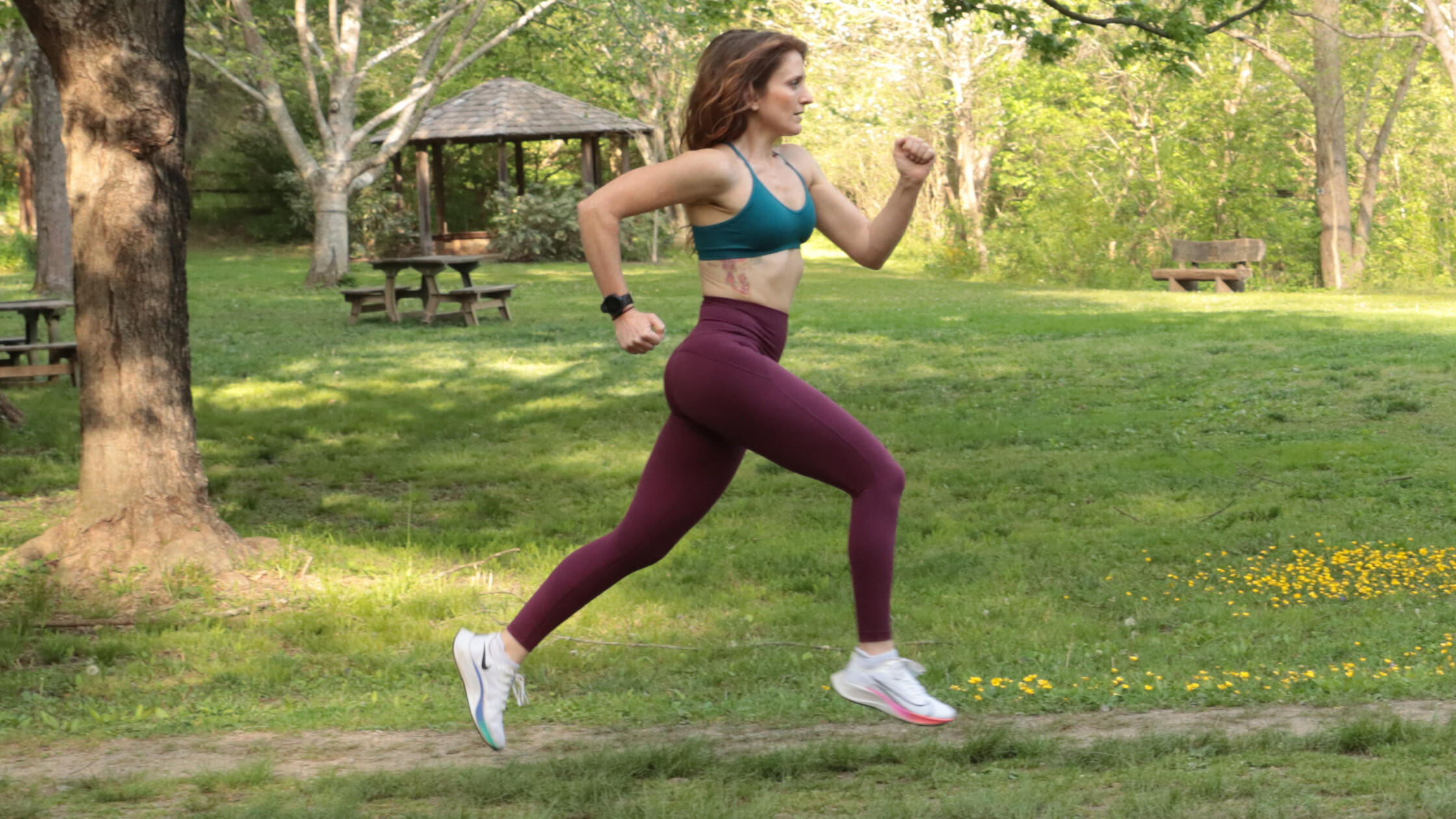
Although some studies have proven that recovery runs do not speed up the recovery process, they are still beneficial in flushing the buildup of lactic acid in your muscles. Once the lactic acid is gone, the soreness will also decrease, allowing your muscles to heal.
If you are running a race under a mile, previous research notes that a light warmup can slightly increase oxygen consumption during a short anaerobic exercise.
(03/04/2022) ⚡AMPby Marley Dickinson
Tips on easing the pain in muscles and bones all runners should follow
Often, the pain we experience in our muscles and bones is simply a part of the running process. However, there are steps we can take to help ease this pain, making running more comfortable and less likely to cause long-term issues. Here are six tips all runners should follow to help ease the pain in their muscles and bones.
1. Ice And Heat Therapy
Applying ice or heat can help reduce the inflammation in your muscles and bones. Ice therapy is best used in the early stages of an injury, while heat therapy is more beneficial after the initial inflammation has subsided. To ice, wrap an ice pack in a towel and apply it to the area for fifteen minutes. Repeat this process every few hours as needed.

2. Stretching And Foam Rolling
Stretching and foam rolling are both excellent ways to loosen up tight muscles and prevent injuries. Foam rolling can also help to improve your range of motion. To foam roll, place the roller on the ground and use your body weight to press down on it, rolling it over the target area. Hold each position for thirty seconds. For stretching, hold each stretch for fifteen seconds and repeat three times.
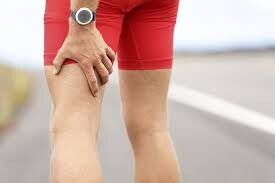
3. Massage Therapy
Massage therapy can help to improve blood circulation and reduce inflammation. It can also help to break up scar tissue. You can ask a trained chiropractor or physiotherapist to give you a massage, or you can also do it yourself by using a foam roller or tennis ball. The best time to massage your muscles is right after a run when they are still warm. It’s also a good idea to massage any recurring painful regions.
4. Eating A Balanced Diet
A balanced diet is essential for keeping your muscles and bones healthy. Make sure to include plenty of protein, calcium, and vitamin D in your diet. You can also supplement your diet with fish oils and glucosamine to help improve joint health. It is also important to drink plenty of water to keep your muscles hydrated.
5. Taking Breaks
It is important to take breaks during long runs and races to allow your muscles and bones to rest. This will help prevent pain and fatigue. Take a break every thirty minutes and walk for five to ten minutes. After a long run, make sure to take a few days off to allow your body to recover.
6. Listening To Your Body
Above all, it is important to listen to your body and respond accordingly. If you are feeling pain in any muscles or bones, take a break and allow them to rest. Don’t push yourself too hard, especially if you are experiencing an injury. Follow these tips to help ease the pain in your muscles and bones, and you’ll be able to run more comfortably and injury-free.
These are six tips all runners should follow to help ease the pain in their muscles and bones. Ice therapy, stretching and foam rolling, massage therapy, a balanced diet, taking breaks, and listening to your body are all important ways to keep your muscles and bones healthy and pain-free. If you still experience pain after following these tips, be sure to consult a trained professional.
(03/04/2022) ⚡AMPby Colorado Runner
Five healthy habits to keep you running long term
Forty has become the new 30 in distance running, as we’ve seen many athletes achieve personal best performances beyond their glory years. Just because you are getting older, it doesn’t mean you have to give up on your running goals or stop being competitive. Many masters athletes have had some of the most rewarding years of their life by staying consistent with their training and sticking to healthy habits.
If you are a runner hoping to continue in the sport long-term, it is essential to remember these five healthy habits:
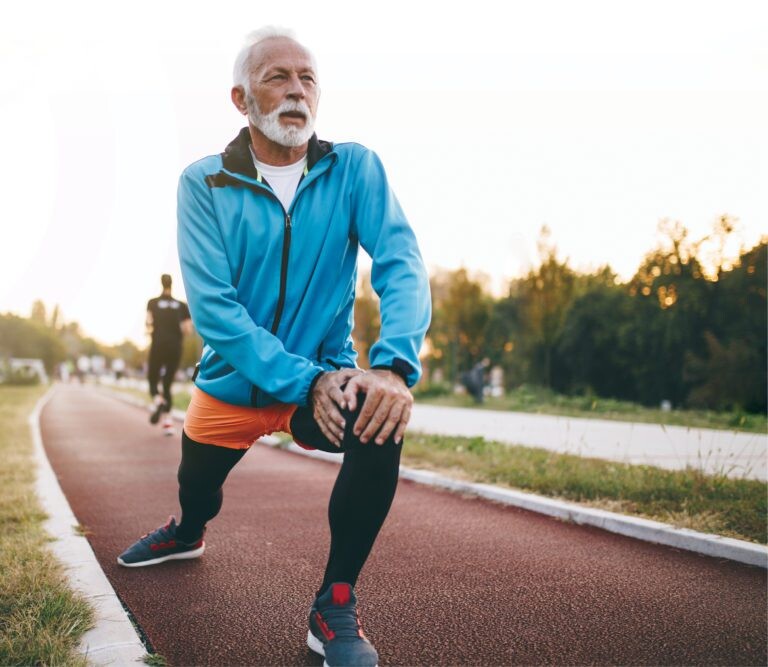
1) Fuel with healthy foods
Eating healthy has always been important, but it becomes crucial when you choose to pursue an active lifestyle as you age. Your university diet of pizza and beer three or four nights a week isn’t going to give you the nutrients you need to fuel your running. Foods high in protein like eggs, chicken and beef are essential in helping repair muscle tissue and maintaining muscle mass. It’s also important to fuel your body with fruits and vegetables, which contain vitamins and minerals like folate, potassium and vitamin C. A diet rich in vitamins and minerals will keep your gut and body 100 per cent and able to perform at its best as you age.

2) Listen to your body
Your muscles need time to recover from any damage they’ve sustained during a run. If your body is sore, do not force more pain on yourself by running. As we get older, our bodies naturally take longer to recover from strenuous activities.
3) Spend time on recovery
When you perform a high-intensity exercise like running, it will take time for your heart rate to recover and go back to a resting rate after the workout. As you age, the recovery process becomes slower. After a run, your body will need time to adapt to the exercise you performed by building up muscle and replenishing energy supplies. As you age, your muscle density decreases, which means more recovery time, because you have less muscle.
At least a quarter or half of the time that you spend running should be spent on recovery. Stretching or yoga are good ways to keep your muscles relaxed and strong after a run. Many runners also use recovery devices like a foam roller, lacrosse ball or muscle scraper. The point is to stimulate recovery by increasing blood flow by various means, though which devices you use are largely a matter of personal preference.
4) Mix it up with other exercises
As you age, your body will naturally begin to lose muscle mass. Therefore, adding one or two strength-training routines into your weekly schedule can help you build long-term success. Exercises like yoga, cycling and weight training can all help keep you strong and help prevent you from getting injured.
The secret to running into your 60s, according to several masters record-holders, is to not run every day and to complement your running with other exercises.
5) Stay motivated
When you’ve been running for a few years, it can be tough to find motivation at times. There are a few ways you can challenge yourself as an experienced or masters runner, which can keep you motivated to reach new heights. Try something you’ve never done before in the sport, like trail running or track racing (if you’ve always been a road runner). Embarking on a new challenge is bound to keep your motivation high.
(03/03/2022) ⚡AMPby Running Magazine
Things to avoid when running a marathon
Running a marathon is a celebration of the human body’s ability to endure. While marathons are far from what you would call a dangerous activity, there are still inherent risks involved. It’s important that you never underestimate the scope of your task, especially when an injury could set your fitness progress back several months. You might even sustain life-altering injuries from serious accidents. Here are some things you should never do when running a marathon.
Skipping Your Warm-Up

Marathons are long-distance routes that will put strain on your muscles and joints. Warm ups help prime your muscles for rigorous activity and they minimize the risk of an injury by increasing muscle elasticity. Warms ups also increase blood flow, which helps improve the ability of your muscles to exert effort.
Skipping Breakfast
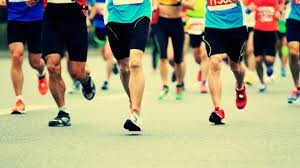
While it’s difficult to run on a full stomach, it’s much worse to run on an empty stomach. This is because you’re very likely to experience premature fatigue or even a high blood sugar count. These will drastically hinder your ability to run, which will not only mean a weaker performance, but also a more agonizing time on the track because you’d be forced to run the distance in poor conditions.
You’d have to consume about 300 calories an hour before your run. This ensures that your body has calories to burn and that the food you eat has been fully digested by the time you start your run.
Starting a Race Too Fast
A marathon is more than just about running a long distance. It also requires strategy. Knowing how to pace yourself in a marathon is one of the most important things runners should master, as this outlines how you’re going to perform throughout the run. Runners who run too fast too early risk running out of strength over the later portions of the course. It’s important to stick to the pace that you’re capable of sustaining over a long period so you have reserved strength that you can use to power through the final stages of the course.
Obsessing Over Your Personal Record
While tracking your numbers is the best way to quantify your performance, this shouldn’t become the onus of your activities. While we all want to improve, obsessing over these numbers kills the fun in running. You don’t want to be tracking your heart rate, pace-per-mile, or your average speed while there’s a beautiful world out there to witness and enjoy.Never forget your passion for the sport, and the reason you run in the first place. Sports are as much a matter of passion as they are a celebration of the capabilities of the human body.
Marathons are more difficult and more serious than they seem. Whether you’re a competitive runner, or you’re taking on a personal challenge to live a healthier life, it’s important to understand what you’re committing to, and to plan ahead. Knowing what mistakes to avoid is just as important as the things you should be doing as you prepare for a marathon.
(03/03/2022) ⚡AMPby Colorado Runner
Heart rate and pace: how to compare these metrics to improve performance
Heart rate and pace are two of the most common metrics runners use to determine how hard they’re working, but often, they’ll use one or the other. By using the two together, you can get a good idea of how your fitness is progressing and use that information to guide your training. Intimidated by numbers? Don’t worry — comparing the two is easier than you think.
Aerobic decoupling

Decoupling simply means two things separating from each other. In the case of aerobic decoupling, these two things are your heart rate and pace. When you’re running at a pace that is manageable for you, your heart rate should remain relatively steady. If you’re very fit (perhaps you’re in the latter stages of a training block), your heart rate should remain steady as your pace increases — at least, to a point.
When one of those two variables begins to deviate from the other, they are decoupling. This means either your heart rate is increasing significantly as your pace increases, or your heart rate is staying the same as your pace declines. Let’s unpack what those changes mean:

Increased heart rate with increased speed
When your heart rate increases dramatically relative to your increase in pace, it means there is a higher cost for you to maintain that pace. In other words, it is much harder for you to run at that pace for that length of time, and you need more training in order to maintain that pace.
The good news is, that’s what training is for. When you look at your data after your run, you can see where your heart rate and pace decoupled (your heart rate increased or your pace declined), which is the point at which you became inefficient. The goal of your training should be to run longer at that pace before you reach that point.
For example, if you’re training for a 10K with a goal time of 50 minutes, you need to be able to run 5:00/km for 50 minutes. If you can only maintain that pace for 30 minutes before you reach the point of inefficiency, that’s your starting point for your workouts.
Heart rate stays high as pace declines
If your heart rate remains high even after you’ve decreased the pace, that’s an indicator that you’re not yet efficient at that pace. That being said, there are a few other factors that could affect how quickly your heart rate comes down after a hard effort:
Heat and/or humidity can make it difficult to cool your body down, which will make your heart work harder even at a slower pace.
Dehydration causes you to have a lower volume of blood circulating through your body, which means your heart has to beat faster to compensate.
Running up a hill will increase your heart rate, even though your pace is slower than running on flat ground.
Heart rate and pace stay consistent
If you don’t see any significant changes (less than five per cent deviance) in your heart rate or pace, that is an indicator that you are running efficiently at that pace. This is ideal when you’re doing an easy run, but won’t help you see any big performance gains in workouts. If you see this happen in a workout, take it as permission to increase the pace.
For example, let’s say you do a 30-minute tempo run at the beginning of your training cycle, and you notice your heart rate beginning to jump after about 20 minutes. You continue training, and a few weeks later, you do the same 30-minute tempo again at the same pace but this time, your heart rate stays consistent. When you do that workout again in another couple of weeks, you can increase your pace and challenge yourself a bit more. Eventually, your heart rate and pace will decouple again, so that’s your new goal.
Heart rate, pace and performance
Knowing your pace is crucial for determining what your goal time should be in a race, and your heart rate is an excellent way to gauge effort. By putting the two together, you can get a good picture of how fit you are, and what you need to work on so you can improve performance and smash your running goals.
(03/03/2022) ⚡AMPby Brittany Hambleton
Betty Lindberg 97-year-old surprised after breaking age-group 5K world record
On Feb. 26. a 97-year old athlete was astounded as she reached the finish line at the Atlanta Peachtree Marathon Weekend 5K, to find out she set an age-group world record. Atlanta-resident Betty Lindberg broke the previous 95+ 5K world record by 30 minutes, clocking a time of 55:48.
The record will be passed on from one Betty to another as Lindberg broke Betty Ashley‘s 95-99 5K age group record of 1:28:36, which she set in 2017 as a 96-year-old.
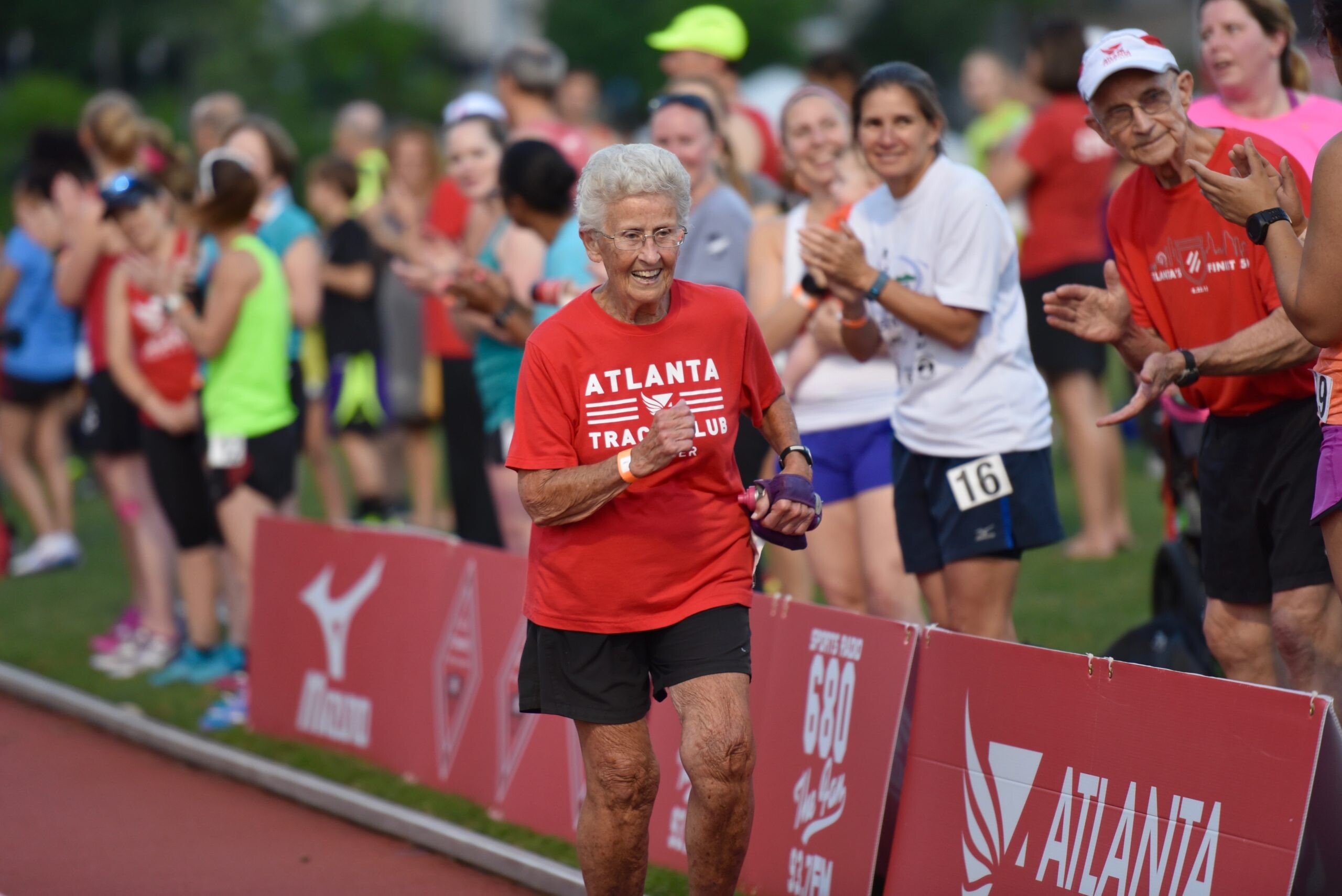
Although Lindberg walked the entire race, she averaged 11 minutes per kilometer. According to local media, she believed the record was attainable going into the race but was shocked at how quick her time was. “I simply stroll, as quick as I can,” Lindberg said to the media.
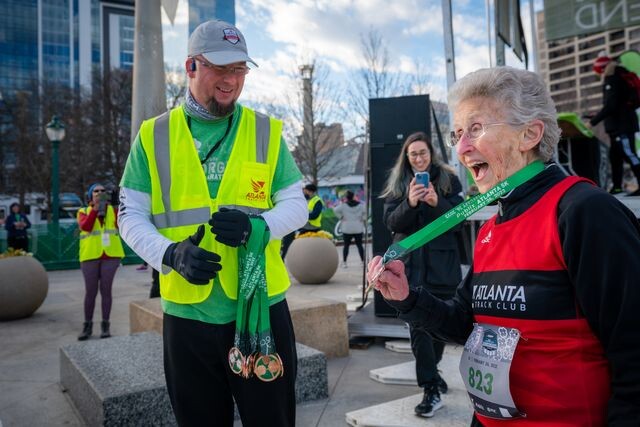
Lindberg, who didn’t start running until she was 63, used to run with the Atlanta Track Club but now goes for quick strolls around her hilly neighbourhood.
Leading up to the race, Lindberg would train by getting out for an hour’s walk around her neighbourhood. She would also supplement her walks with yoga classes at the local fitness center.
(03/03/2022) ⚡AMPby Marley Dickinson
How long should your marathon workouts be?, Adding the right amount of volume to your marathon training can result in tremendous aerobic gains
Running a marathon can be intimidating, especially if it’s your first. Your success in the marathon depends on a fairly significant chunk of time devoted to training. If you plan a 16- to 20-week build, your marathon will most likely go well (barring unforeseeable’s like extreme weather, illness or injury). But if you want to get closer to reaching your goal, paying attention to running the right volume in speed workouts can help you get the most out of your training plan.
When planning your marathon workouts, it’s important to understand that the race itself is entirely aerobic. The marathon requires next to no anaerobic work; your heart rate will stay well below your maximum HR for the entire race unless you somehow find yourself in a sprint to the finish line.

Considering that, you’ll want to curate your workouts around improving your aerobic capacity. This means that workouts consisting of 15 reps of 400m at 10K or half-marathon pace will not be beneficial to your preparation.
Your mileage and time on your feet are the most important elements when training for a marathon, therefore you want your workouts to be a particular length to simulate a race setting.
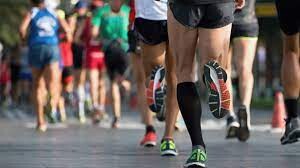
Your marathon workouts should be at least 12 to 25 kilometers of volume. Here are a few examples.
10 to 12 reps 800m at goal marathon pace (or faster) with 400m float (faster-jog) rest. (12-16 km)
Three to four reps of 5K with five minutes’ rest at goal marathon pace or faster. (17-22 km)
3K, 5K, 3K, 5K alternating from half-marathon pace on 3K reps to marathon pace on 5K reps with four minutes’ jog rest between reps. (16-19 km)
Two reps of 3K, 2K, 1K at goal marathon pace with two minutes jog between reps, and three minutes jog between sets. (12-15 km)
Unfortunately, speed development for the marathon is not done with your classic short interval workouts, especially for new and intermediate runners. There is no need to run fast track workouts for the marathon unless you are experienced and looking to improve your previous marathon time. This can be done by doing short intervals with short rest at your goal marathon pace.
(03/02/2022) ⚡AMPby Marley Dickinson
World record holder Yalemzerf Yehualaw will run debut marathon in Hamburg
Yalemzerf Yehualaw, who has smashed the world 10 k record just a few days ago, now sets her sights on her marathon debut. The 22 year-old Ethiopian has chosen the Haspa Marathon Hamburg on 24th April for her first race at the classic distance.
This was announced by organizers during a press conference in Hamburg today. Germany’s biggest spring marathon returns to its traditional date for the first time since 2019 and looks likely to come back with a bang. Yalemzerf Yehualaw clearly has the potential to run a very good first marathon. Organizers of the Haspa Marathon Hamburg expect a total of 20,000 runners including races at shorter distances on 24th April. Online entry is still possible at: www.haspa-marathon-hamburg.de
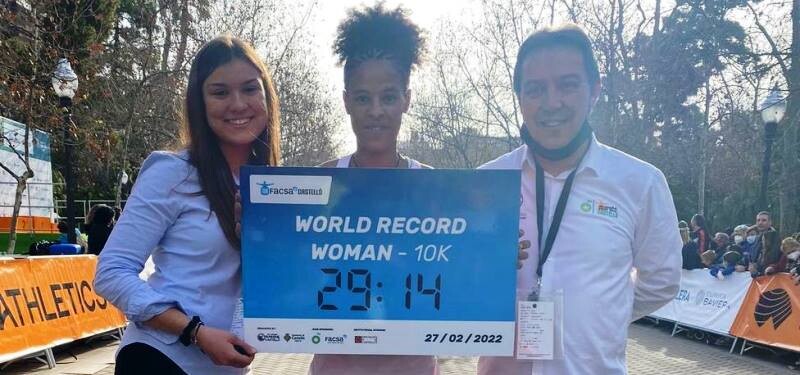
“We are thrilled to have Yalemzerf Yehualaw, one of the most exciting marathon talents of the world, on the start line of the Haspa Marathon Hamburg,“ said chief organizer Frank Thaleiser.
Yalemzerf Yehualaw, who improved the world 10 k record by a huge margin of 24 seconds to 29:14 last Sunday in Castello, Spain, is also the world’s second fastest half marathon runner. She clocked 63:51 in Valencia last October. Additionally at the World Half Marathon Championships in 2020 she won the bronze medal. Her half marathon PB suggests that she has the potential to run spectacular marathon times as well in the future.
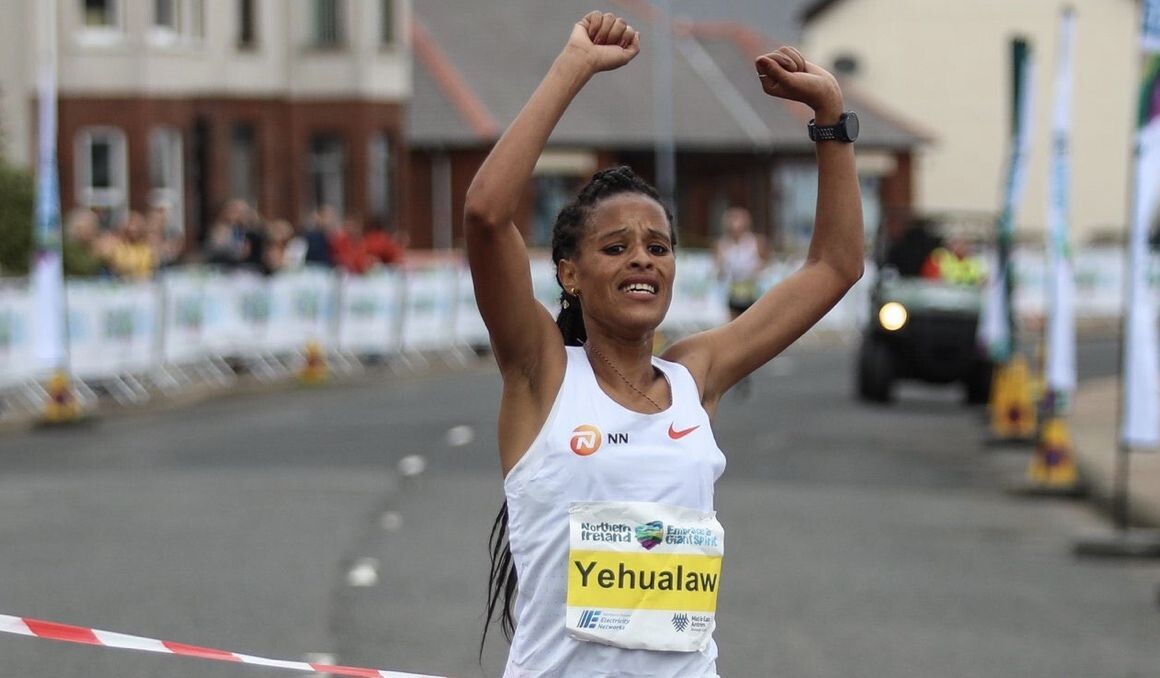
“I am really happy to be able to run my marathon debut in Hamburg. My coach Tessema suggested to me to go to Hamburg for my debut since he ran here himself,“ said Yalemzerf Yehualaw. Tessema Abshero ran his lifetime best in Hamburg back in 2008 when he was fourth with 2:08:26. It was the only time he clocked a sub 2:10 time during his career.
Organizers showed Yalemzerf Yehualaw the Hamburg course and she then said during the press conference: „I am looking forward to this race and want to break the course record.“ Fellow-Ethiopian Meselech Melkamu holds the current Hamburg course best with a time of 2:21:54 from 2016.
The fastest woman runner on Hamburg’s start list is Priscah Jeptoo. The Olympic silver medalist from London 2012 has a PB of 2:20:14. While this personal record is ten years old more recently the Kenyan ran 2:24:16 in Valencia in 2019.
Two former winners of the Haspa Marathon Hamburg are returning to the race. Gadise Mulu will start as the defending champion. The Ethiopian took first place last September when the race was held in a much smaller format and with only a few elite runners due to the pandemic. Gadise Mulu improved significantly in Hamburg when she broke 2:30 for the first time and clocked 2:26:20.
Dibabe Kuma is the other Hamburg winner who comes back to the race. The Ethiopian was the winner in 2019, when she ran 2:24:41. She has a PB of 2:23:24.
Deborah Schöneborn heads the national elite entries of the Haspa Marathon Hamburg. The 27 year-old ran surprisingly well in the Olympic marathon in Sapporo last summer, where she finished 18th. She was the fifth fastest European athlete in this race. Deborah Schöneborn has a personal best of 2:26:55 and aims to qualify for the European Championships this summer.
(03/02/2022) ⚡AMPby Runners Web
Haspa Marathon Hamburg
The HASPA MARATHON HAMBURG is Germany’s biggest spring marathon and since 1986 the first one to paint the blue line on the roads. Hamburcourse record is fast (2:05:30), the metropolitan city (1.8 million residents) lets the euphoric atmosphere spill over and carry you to the finish. Make this experience first hand and follow the Blue Line....
more...Roll your feet before your run to prevent injuries, four minutes is all it takes to loosen up tight feet and make your run more comfortable
Most runners think about foam rolling as a post-run recovery strategy, but if you struggle with impact-related injuries like runner’s knee, Achilles tendonitis, IT band syndrome or shin splints, rolling your feet before your run may help you stay healthy.
Running on stiff feet
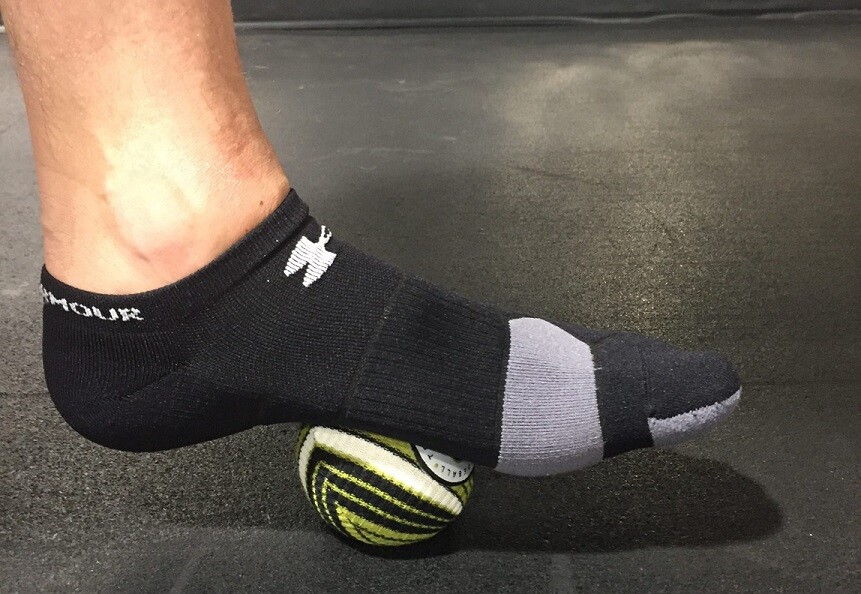
When your feet are stiff, you’re not able to access their full range of motion. This can make your heel strike more intense, which increases your risk for impact-related injuries. Rolling your feet before your run helps to loosen the tissues in your feet and increase blood flow and range of motion to that area. As a bonus, it will help improve mobility in your calves, thighs and even your back, which will help you run more efficiently.
You can use a foam roller to loosen up your feet, but a small ball, like a tennis ball, lacrosse ball or even a golf ball will be more effective. These tools, with their smaller surface area, will be better at reaching the small muscles that your foam roller might miss.
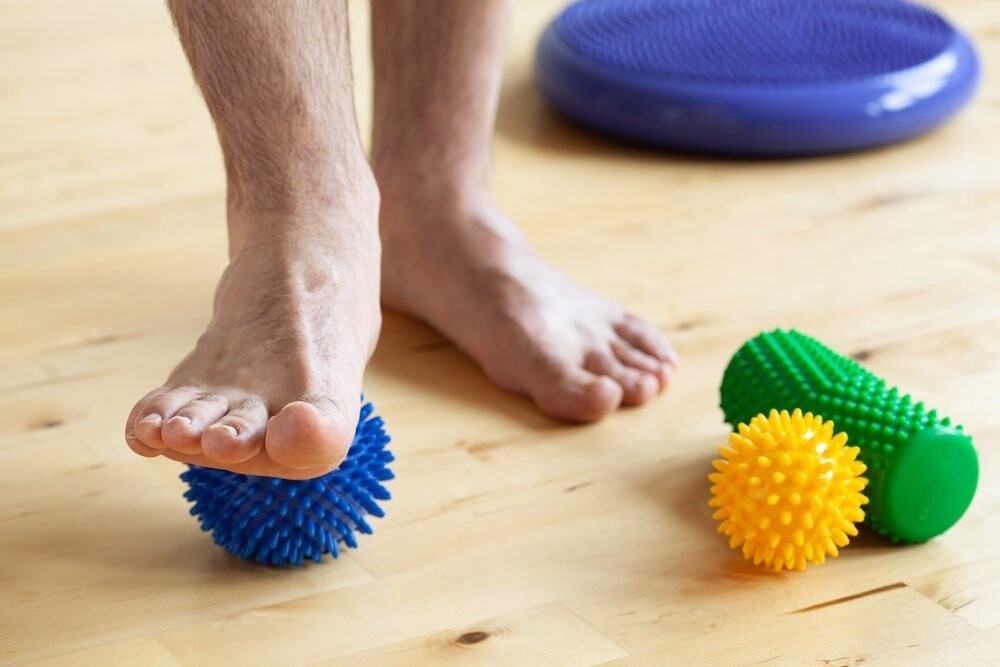
How to roll your feet the right way
The best way to roll your feet is seated in a chair. This position will allow you to better control the amount of pressure you’re putting on your feet. You should also always do one foot at a time.
Putting moderate pressure on top of the ball (you should feel the pressure but it shouldn’t be painful), slowly roll your foot around on the ball or roller, moving at approximately one inch per second. When you find a spot that’s particularly tight or tender, spend an extra 30-60 seconds rolling in that area. You should spend about two minutes in total per foot.
This quick, four-minute practice will increase flexibility and blood flow in your feet to improve your run. You may want to spend four minutes after your run rolling your feet as well, especially if you struggle with chronic impact-related injuries.
(03/02/2022) ⚡AMPby Brittany Hambleton
The link between RED-S and carbohydrate consumption
Relative Energy Deficiency in Sport (RED-S) has become a common nutrition concern among athletes and sports dietitians over the last few years, and nutrition experts and sports physiologists have been working to learn more about the condition and its causes. Recently, sports nutrition researcher Louise Burke revealed that RED-S is not simply caused by a lack of overall energy, but specifically by a lack of carbohydrates in athletes’ diets.
RED-S and energy availability

Until now, most nutrition experts agreed that RED-S was caused exclusively by low energy availability (i.e. a lack of calories). In other words, if an athlete’s overall calorie intake does not match their calorie output, they’ll be at risk for developing RED-S, and their performance and health will suffer.
While this isn’t entirely wrong, Burke’s research reveals that it isn’t entirely right, either. According to her findings, athletes who consume enough calories but don’t consume enough carbohydrates are still at risk for the condition.

The study
The goal of Burke’s study, published in the journal Medicine and Science in Sports and Exercise, was to understand how a short-term, low carbohydrate/high fat (LCHF) diet and a low-energy-availability diet affected endurance athletes’ immune, inflammatory and iron-regulatory responses to exercise.
To do this, she recruited 28 elite male race walkers and had them complete two, six-day diet and training phases. The first phase was a baseline phase, in which all athletes consumed a high-carbohydrate, high-energy-availability diet. In other words, they ate adequate calories and carbohydrates to fuel their training.
In the second phase, athletes were split into three groups. One group continued to follow a high-carb, high-calorie diet, the other followed an LCHF diet, and the other followed a low-energy-availability diet. During both phases, athletes completed a 25K race walk, walking at about 75 per cent of their VO2 max. Burke and her team collected blood samples before and after exercise during both phases to measure immune, inflammatory and iron markers.
The results
Although the phases were very short, Burke and her team could already see the negative effects of an LCHF diet on athletes’ iron levels, immune and stress responses to exercise. In contrast, they didn’t see any notable changes to the athletes health who followed the other two protocols, even those who followed a low-energy-availability diet.
This led Burke to the conclusion that “short-term restriction of CHO (carbohydrates), rather than energy, may have greater negative impacts on athlete health.” In other words, if you consume enough total calories but that number comes predominantly from another source (like fat), you’re still at risk for developing RED-S.
This is yet another addition to the ever-growing list of reasons why runners should not restrict carbohydrate intake. If you’re concerned about both your health and performance, make sure you’re eating enough carbohydrates to fuel your training. If you’re not sure what an adequate amount of carbohydrates looks like, talk to a sports dietitian, who can help you understand what a healthy diet looks like for you.
(03/02/2022) ⚡AMPby Brittany Hambleton
World Athletics bans athletes from Russia and Belarus
World Athletics will impose sanctions against the member federations of Russia and Belarus as a consequence of Putin’s invasion of Ukraine. Russian and Belarusian athletes will be excluded from all World Athletics events for the foreseeable future, effective immediately.
This sanction means that all Russian or Belarusian athletes who have received ANA (Authorized Neutral Athlete) status will have their accreditation withdrawn and entries denied, as will any coaches, personnel and officials.
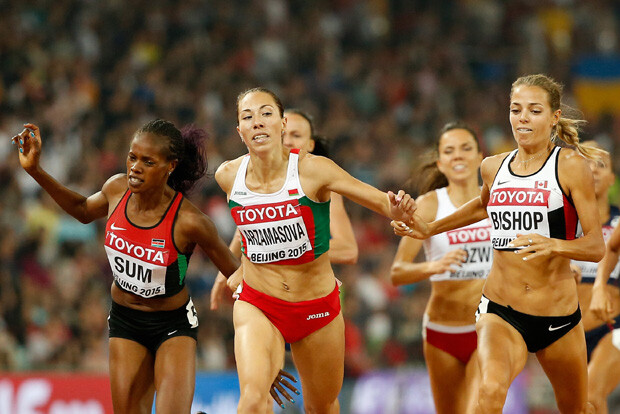
The suspension will include the 2022 World Athletics Championships in Oregon, the 2022 World Athletics Indoor Championships in Belgrade, Serbia, and the 2022 World Athletics Race Walking Championships in Muscat, Oman, which are set to begin on March 4.
World Athletics has also agreed to consider the suspension of the Belarus Federation, which will be a topic of discussion at the scheduled WA Council meeting on March 10.
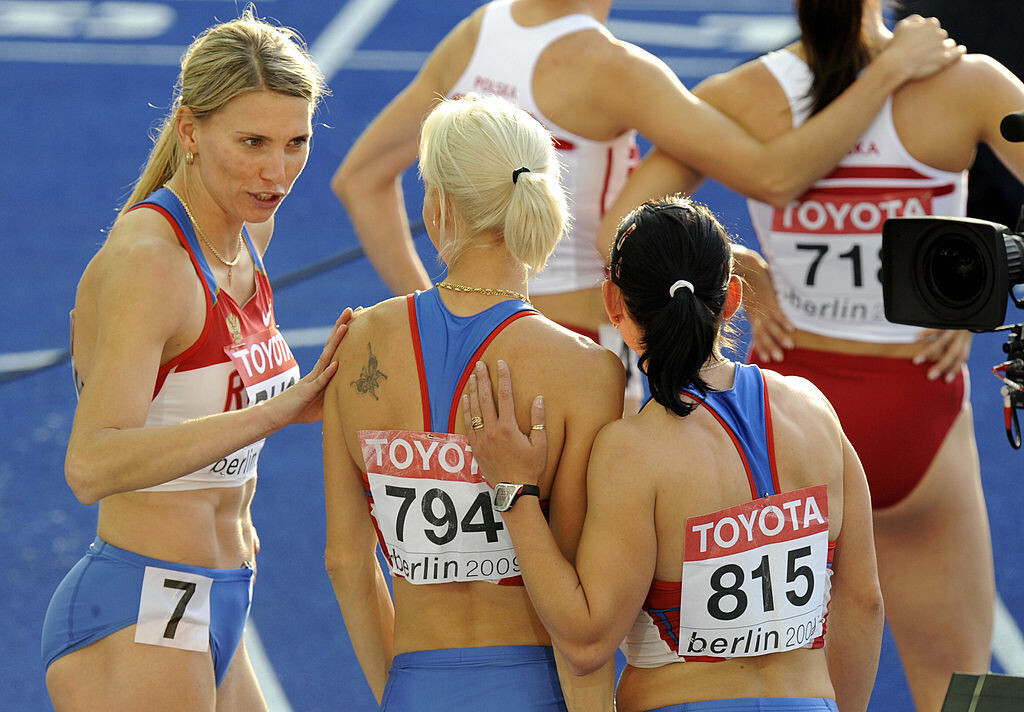
World Athletics President Sebastian Coe said:
“The world is horrified by what Russia has done, aided and abetted by Belarus. World leaders sought to avoid this invasion through diplomatic means but to no avail given Russia’s unswerving intention to invade Ukraine. The unprecedented sanctions that are being imposed on Russia and Belarus by countries and industries all over the world appear to be the only peaceful way to disrupt and disable Russia’s current intentions and restore peace.”
The Russian Athletics Federation (RusAF) has been suspended from competing in World Athletics events since 2015 due to multiple doping violations. They are currently not eligible to host World Athletics events or send teams to international championships until 2023.
Two weeks ago, on Feb. 17, World Athletics and its Doping Control Review Board (DRB) announced it had approved the applications of 33 Russian athletes to compete in international competition as neutral athletes (ANA) this year. Now, the 33 Russian athletes who received ANA status for 2022 are excluded from World Athletics Series events.
(03/01/2022) ⚡AMPby Marley Dickinson
Olympic Silver medalist Keely Hodgkinson will compete in the 800m and 4x400m relay for Great Britain at the World Athletics Indoor Championships
The 19-year-old, who broke Kelly Holmes' British 800m record at last summer's Tokyo Olympics, was part of a 33-strong squad announced on Tuesday.
British 400m champion Jessie Knight and Ama Pipi join Hodgkinson in the relay squad.
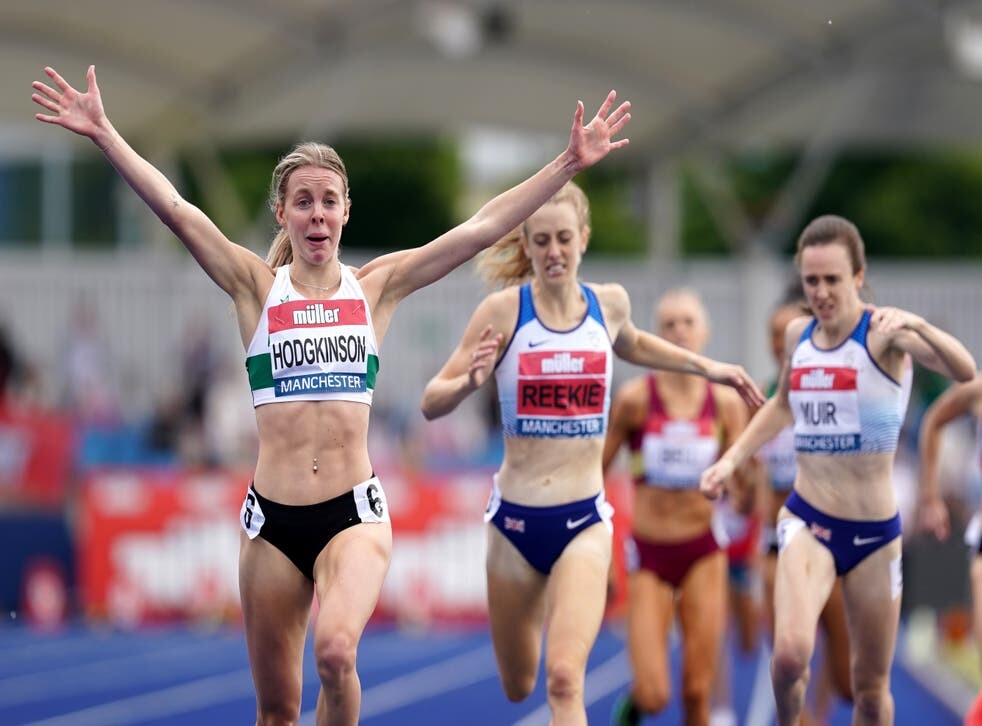
The World Indoors take place in Belgrade, Serbia, from 18-20 March.
Several athletes confirmed their places in the GB team at the UK Athletics Indoor Championships in Birmingham last weekend.
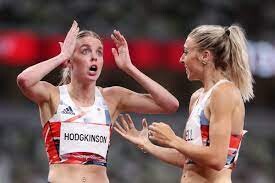
They included Andrew Pozzi, the 2018 world indoor champion, in the 60m hurdles, in-form Elliot Giles in the 800m and 2016 world indoor medalist Lorraine Ugen in the long jump.
Ed Faulds and Marc Scott, who have broken European indoor records this season, are also included in the team.
Olympic head coach Christian Malcolm said: "Those called up have earned their vest and I know they'll all represent their country with pride in Belgrade.
"We have a number of athletes who have really stepped up during this indoor season, setting a number of personal and season best, so it'll be exciting to see how they translate that into the Championship environment."
(03/01/2022) ⚡AMPby Athletics
World Athletics Indoor Championships
World-Class Competition Lands in China: 2025 World Athletics Championships The global spotlight shines on China as it hosts the 2025 World Athletics Championships, bringing together the planet’s most elite runners, jumpers, and throwers. This prestigious event, organized by World Athletics, represents the pinnacle of track and field competition—where national pride, personal records, and world titles are on the line. ...
more...Double 5,000m world champion Helen Obiri turns attention to Istanbul Half Marathon
Hellen Obiri has no time to rest as she gears up for her next assignment at the Istanbul Half Marathon on March 27 in Turkey.
The 31 year-old made her half marathon debut here in 2020 where she ran an exceptional time of 1:04.51 that made her the fourth-fastest Kenyan of all-time over the distance.
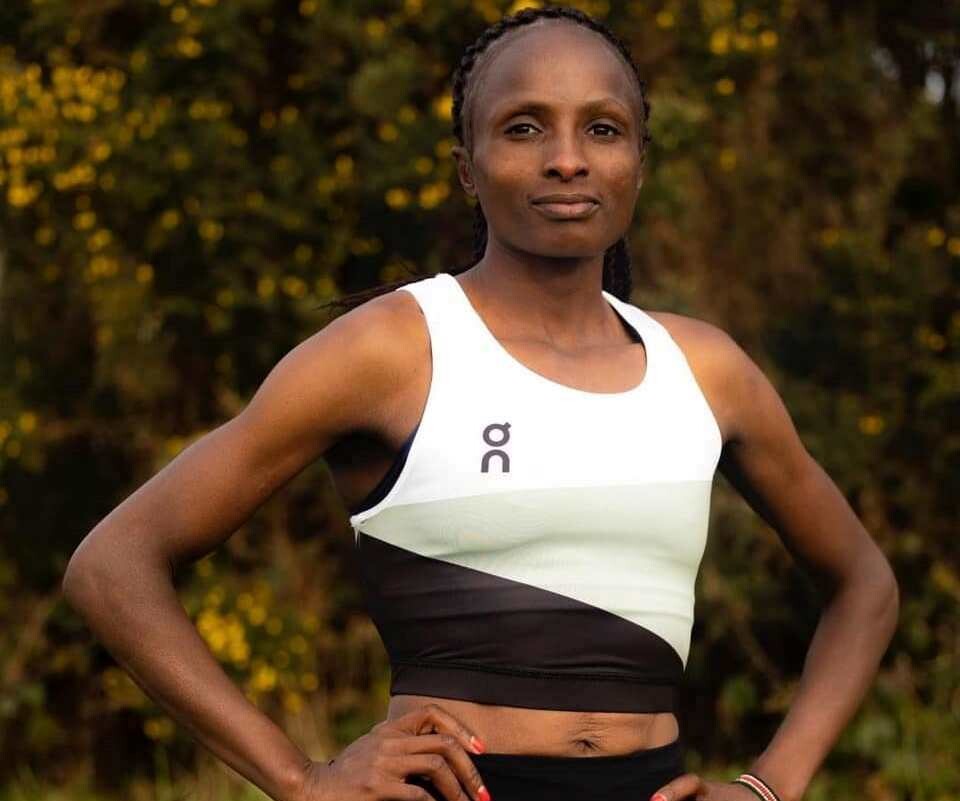
Obiri has gained experience in half marathon running since her debut. She has put her focus on road races, she won the Great North Run in last September with a time of 1:07.42 and recently she displayed her great form when she finished second at the Ras Al Khaimah half marathon that was held last month, where she also improved on her personal best to 1:04.22.
The World Cross Country Champion is now ranked the fifth fastest half marathon runner of all time. “I am so happy to be returning to Istanbul. I ran my half marathon debut in this race last year and I hope I can improve both my position and my time on this occasion,” Obiri said.

The race organizers have lined up for Ethiopians who have personal best of sub 1:07.00 that will also face Obiri in the coming three weeks time.
The 2021 Copenhagen half marathon champion, Tsehay Gemechu leads the four athletes as she comes to this race with the second fastest time on paper of 1:05.08.
The 23 year-old has an impressive half marathon record with four wins out of five races. Hawi Feysa was second behind Gemechu in Copenhagen in September, when she ran a personal best of 1:05.41 in her debut.
Nigsti Haftu and Bekelech Gudeta are the other title contenders and they come to this race with their personal best of 1:06.17 and 1:06.54. Haftu got her all time best at last year’s Valencia Half Marathon where she finished in sixth place while Gudeta got her lifetime best at this race in last year’s edition where she finished in position seven.
The two times Olympic 5000m silver medallist is ready to battle the four and she is looking forward to the challenge on the flat course.
“My training has been going on well but I know it will be a tough challenge as the field is very strong. I look forward to an exciting race in a beautiful city, “said Obiri.
The four athletes have been put together by the race organizer to chase the race course record of 1:04.02 that was set last year by Ruth Chepngetich from Kenya. This time still stands as the world record because it has been ratified by the World Athletics.
The current world half marathon record holder is Letesenbet Gidey from Ethiopia who broke the previous mark by more than a minute in 2021 in Valencia.
(03/01/2022) ⚡AMP
by John Vaselyne
N Kolay Istanbul Half Marathon
The Istanbul Half Marathon is an annual road running event over the half marathon distance (21.1 km) that takes place usually in the spring on the streets of Istanbul, Turkey. It is a IAAF Gold Label event. The Istanbul Half Marathon was first organized in 1987. After several breaks it was finally brought back to life in 2015 when the...
more...Simulate a race with “The Michigan” workout, this challenging session will help you handle the pace changes you'll experience during a race
The Michigan was developed in the 1970s by University of Michigan head cross-country coach, Ron Warhurst. A challenging combination of a fartlek run and tempo intervals, the workout simulates the pace changes you’re likely to experience during a race and has become a staple workout for many athletes.
Beginners, beware
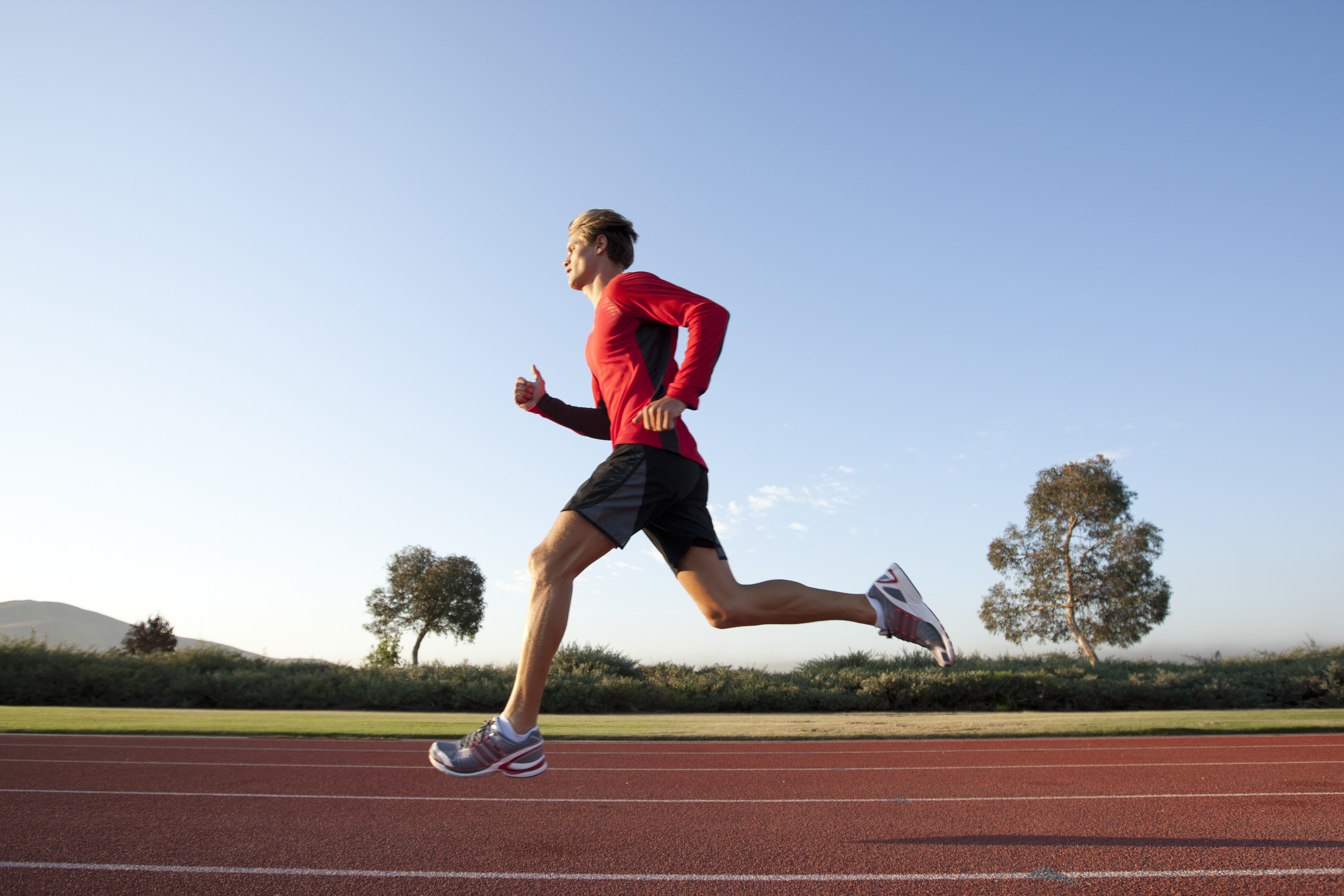
Due to its high volume and the importance it places on pacing, this workout is far too much for a beginner runner. More advanced athletes, however, should give it a whirl, but be warned: it may take a few tries before you nail the pacing. As elite American middle-distance runner Will Leer said in this interview, “The Michigan is one of those workouts that grows on you over time…Early on it puts you at this level of discomfort that you’re sure is too much to endure for the 10km of running ahead of you. But when you finish a really good one, when you just nail it, there is hardly a better feeling in the world.”
To perform The Michigan properly, you need a track and a one-mile (1,600m) route on grass or roads. Ideally, one that contains a few rolling hills. The workout involves alternating between harder running efforts on the track and more even, tempo-paced intervals on the hilly one-mile loop. While the pacing for the off-track tempos will stay consistent throughout the workout, the track intervals will get progressively faster as the intervals get shorter.

The workout:
The tempo miles throughout the workout should all be about a minute slower than your first mile on the track. Runners should also take a three-minute jog recovery between every interval (tempo runs included).
Warmup: 15-20 minutes easy jog, followed by form drills and strides
Workout: 1,600m @ 10km pace – 1 mile tempo – 1,200m @ 5km pace – 1 mile tempo – 800m @ 3k pace – 1 mile tempo – 400m all-out
Cooldown: 15-20 minute easy jog, followed by light stretching
(03/01/2022) ⚡AMPby Brittany Hambleton
Slow-twitch vs. fast-twitch muscle fibres: how your muscle type affects running performance
Each one of us has both slow-twitch and fast-twitch muscle fibres, but the ratio between them is different for every individual. While you can’t do much to change the distribution of your own muscle fibre types, new research shows you can adapt your training to your specific muscle make-up to prevent injuries and maximize your performance.
Slow-twitch vs. fast-twitch
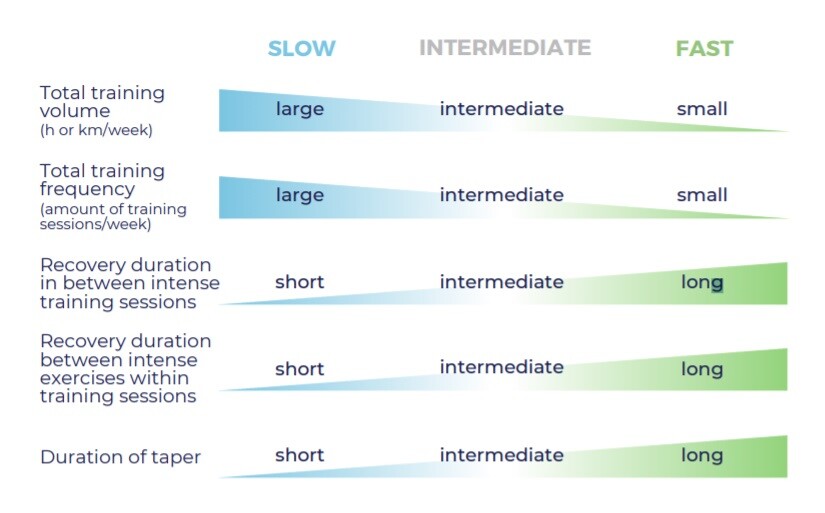
Study author Eline Lievens explains that both fast-twitch and slow-twitch fibres are present in all of your muscles, but the proportions of each differ from person to person. This distribution determines your myotype. Slow-twitch fibres are meant for slow, long-lasting exercise, while fast-twitch are for fast and powerful actions.
Lievens says that although humans evolved to have a slower myotype, there is a large spread in muscle fibre type between humans, from 20 per cent to 90 per cent slow-twitch fibres. This distribution has led researchers to classify humans into three myotype categories: slow, intermediate or fast (or, as she describes them, albatross, ape or cheetah).
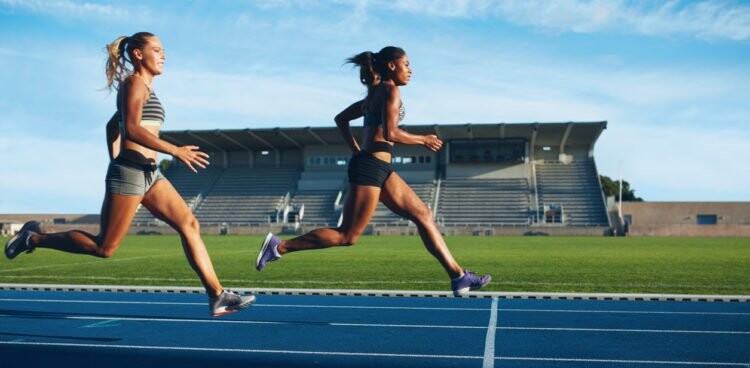
Slow-twitch fibres, as their name suggests, are meant for slow, long-lasting exercise, while fast-twitch are for fast and powerful actions. Slow-twitch fibres are also much more energy-efficient and require three times less energy than fast-twitch fibres to produce the same contraction. They are also much more resistant to fatigue and injuries, which is why they are so important for endurance athletes.
Every muscle in your body will have a mixture of slow and fast-twitch fibres, but the distribution won’t be the same everywhere. For example, your soleus (one of the muscles that make up your calves) is predominantly slow-twitch, while your triceps are predominantly fast-twitch. If you have a slow (albatross) myotype, however, you will have more slow-twitch fibres in all of your muscles than the average population.
For endurance runners (which Lievens defines as anyone running longer than 1,500m), having more slow-twitch fibres will improve your running economy, which will allow you to run longer without fatiguing. Athletes with the slow myotype also recover faster, which means they can take less rest between intervals during a workout and can train with more frequency day-to-day and week-to-week.
Due to the lower energy efficiency of fast-twitch muscle fibres, athletes with a fast myotype are at a greater risk for over-training or over-reaching because they are more likely to accumulate fatigue over time without adequate rest between sessions. These athletes also require a longer taper period ahead of their goal race than slow-myotype athletes.
Are you an albatross, ape or cheetah?
Unfortunately, finding out your exact muscle fibre type distribution isn’t very easy. For many years, the only way to learn your myotype was to have a muscle biopsy, which is an invasive and painful procedure. Lievens and her colleagues have developed a new, non-invasive scan technique using MRI imaging to determine your myotype, however, there are only two facilities offering these scans in Belgium or The Netherlands.
Of course, most of us won’t be traveling to Europe to have a muscle scan, but by listening to your body you can apply these principles to your training. Do you tend to recover quickly between intervals and workouts? Or do you need a day off between sessions or more recovery time between intervals in order to produce the same effort? It may take some trial and error, but understanding how your body responds to different types, intensities and volumes of running can help you tailor your training to your body so that you perform at your best and stay injury-free.
(02/28/2022) ⚡AMPby Running Magazine
Canadian Sasha Gollish breaks 40+ indoor mile world record
On Feb. 27, at the Ontario Masters Championships in Toronto, the city’s own Sasha Gollish smashed the previous women’s 40+ mile world record of 4:44.81 by six seconds, taking it down to 4:38.73. (The record has yet to be ratified.)
Gollish, who turned 40 in December, ran a personal best indoor mile time to break the previous record held by U.S. distance runner Sonja Friend-Uhl, which was set in 2012.
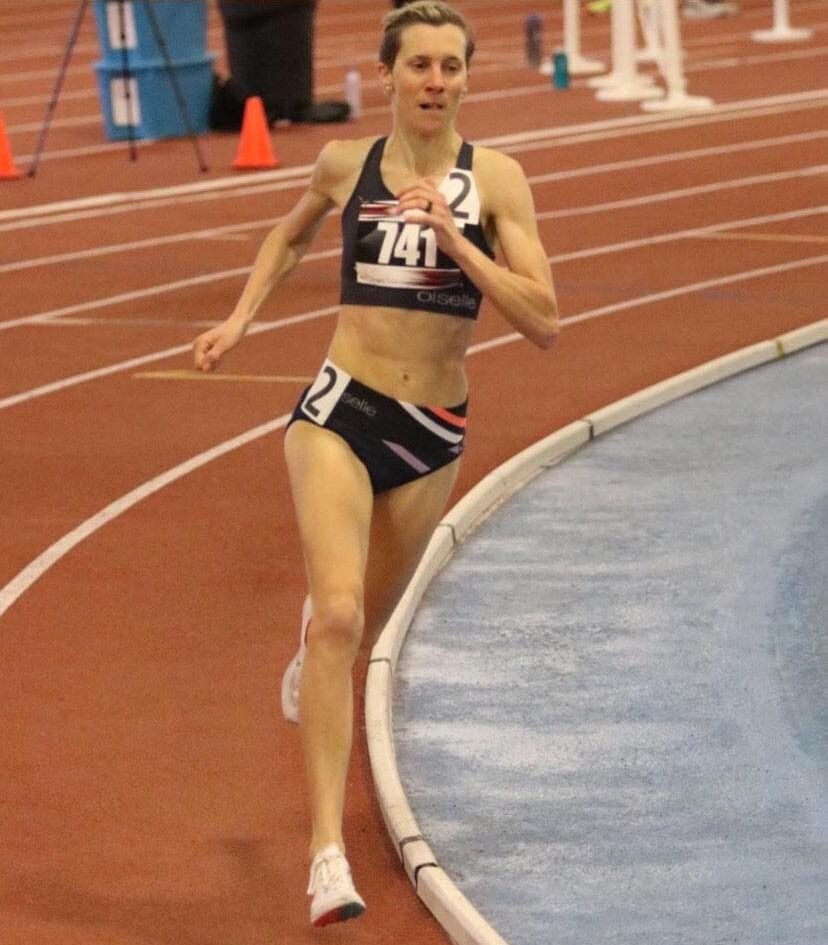
When Gollish was asked if being a world record holder has set in, she said, “not yet. “I am super satisfied with my result and ecstatic to be able to be competitive again on the track.”
Gollish, who has competed in events from the 800m to the marathon, represented Canada in the marathon at the 2019 World Championships in Doha. “I have switched my training up over the last two years and began focusing more on middle-distance running,” she says. “Sometimes you get can get so wrapped up in training, I’ve been focused on having fun.”
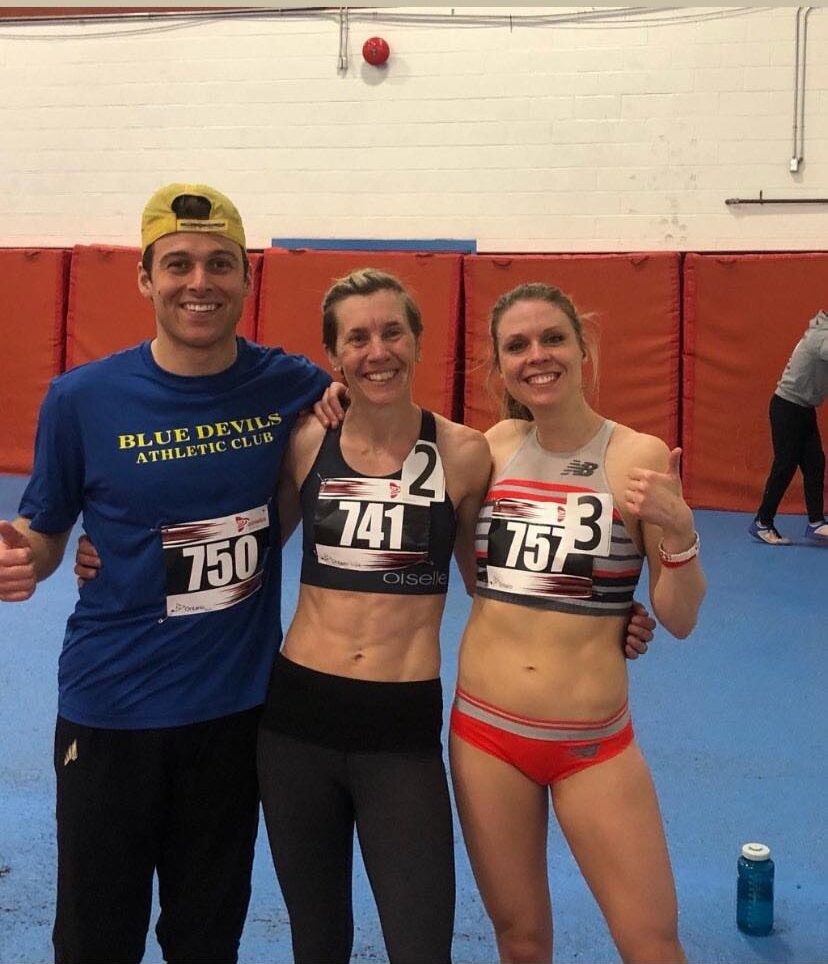
Something Gollish has added to her winter training in recent years is Nordic skiing. This activity is a popular cross-training exercise for many runners as it strengthens the core, quads and hamstrings without putting too much pressure on your joints.
Gollish returned to running eight years ago, when she was 32, after taking a 12-year hiatus from the sport. But her love for running dates back to her childhood, running alongside her mom and sister annually at the Run For the Cure event. Two years into Gollish’s return, she won a bronze medal in the 1,500m at the 2015 Toronto Pan-AM Games.
When asked about her ambitions for 2022, Gollish mentioned she just wants to continue having fun and pushing herself.
(02/28/2022) ⚡AMPby Marley Dickinson
Six foods you thought were unhealthy, but aren’t, runners, don't leave these items out of your cart
Nutrition can be confusing. Foods we’re told are good for us one day get black-listed the next. The truth is, all foods can be a part of a healthy diet, but there are a few, in particular, you may be avoiding for no reason. The following items often get left of runners’ grocery lists, but it’s time to start tossing them into your cart.
1.- White potatoes
White potatoes are often viewed as the less-healthy cousins of sweet potatoes, but that’s doing them a disservice. White potatoes actually contain twice as much potassium as the orange variety and are a great source of carbohydrates, which makes them an excellent source of post-run nutrition.

2.- Popcorn
Popcorn is a great high-carbohydrate snack for runners. While the movie theatre variety should probably be left for an occasional treat, popping some at home with your own toppings is a great healthy snack for runners.

3.- Salt
It’s important to replace the electrolytes (sodium and potassium) you lose through sweat. Runners sweat a lot when they run, even in the winter, which means topping up their sodium levels is an important part of proper recovery. While you still should be mindful of the amount of sodium in some processed foods, runners don’t need to fear the salt shaker.
4.- Red meat
Red meat has gotten a bad rep over the last several years, and many people believed eating it increased your risk for several health problems, including cancer. Recent studies have dismantled that myth, and research has shown that as long as it’s eaten in moderation (less than 70 g. Per day), it poses no risk to your health.
For runners, red meat is an excellent source of iron, which is crucial to running performance because it plays an important role in transmitting oxygen in your blood. Many runners struggle with iron deficiency, so those who are omnivores shouldn’t be afraid to have some steak once in a while.
5.- Full-fat dairy
For many years, whole-milk dairy was thought to be too high in fat to be healthy and everyone switched to skim milk and fat-free products. A 2015 study debunked that myth and found that the low or no-fat varieties weren’t any healthier, and people who consumed high-fat dairy weren’t at any greater risk for health problems.
Of course, you probably shouldn’t eat a cup of full-fat yogurt before a run, but when consumed in moderation, whole milk dairy can be much more satiating and help runners meet their daily calorie needs.
6.- White rice and pasta
We’re often encouraged to go for the whole grain varieties when purchasing items like rice and pasta, but for runners, this isn’t always your best option. Runners need to eat a lot of carbohydrates to fuel their activity, but consuming exclusively whole wheat varieties can sometimes result in eating too much fibre, which could lead to tummy troubles on their runs. This is especially true for runners who are carb-loading in the days before a goal race, when they’re eating an even greater amount of carbohydrates than usual.
It’s still important for runners to consume whole grain products, but if you’re struggling with gas, bloating, and other forms of GI distress when you’re running (or any other time), it’s possible that you’re getting too much fibre. Try substituting some of your whole grain products for the white variety to ease your stomach woes.
(02/28/2022) ⚡AMPby Brittany Hambleton
Try kilometer countdowns for your next speed workout
If you’re training for a 5K or 10K and are getting bored of doing the same four or five workouts over and over again, try this one on for size: kilometre countdowns. It’s fun, it’s got some off-distance intervals to change things up, and it can be done at pretty much any point during your training block.
The workout

The idea behind this workout is to gradually get faster as the intervals get shorter, so make sure you choose your starting point wisely. Ideally, you do the first interval at 5K pace and speed up from there, but if you’re not quite there yet, you can start closer to 10K pace.
This workout is a great way to practice running faster on tired legs. It also gives you a bit of a mental break, because it gets the longest intervals over with right at the beginning, so you can fly home to the finish. Ideally, you should start each interval at either the 400m startline, or the 200m startline to make it easier to keep track of laps. With that in mind, your recovery should be an easy jog or walk to your starting point, never taking more than 400m or less than 200m of recovery.

Warmup: 10-15 minutes easy jog, followed by form drills and strides
Workout: 1,000m (400m jog recovery), 900m (300m jog recovery), 800m (400m jog recovery), 700m (300m jog recovery), 600m (400m recovery), 500 (300m recovery), 400m (400m recovery), 300m (300m recovery), 200m
Cooldown: 10-15 minutes easy jog, followed by light stretching
(02/28/2022) ⚡AMPby Brittany Hambleton
Ethiopian runner Yalemzerf Yehualaw has clocked 29:14 for a women’s world 10km record in a mixed race
Yalemzerf Yehualaw has broken the women’s 10km road record in Castellon, Spain, with a time of 29:14.
The 22-year-old sliced 24 seconds from Kalkidan Gezahegne’s world record of 29:38 on Sunday (Feb 27) in Spain.
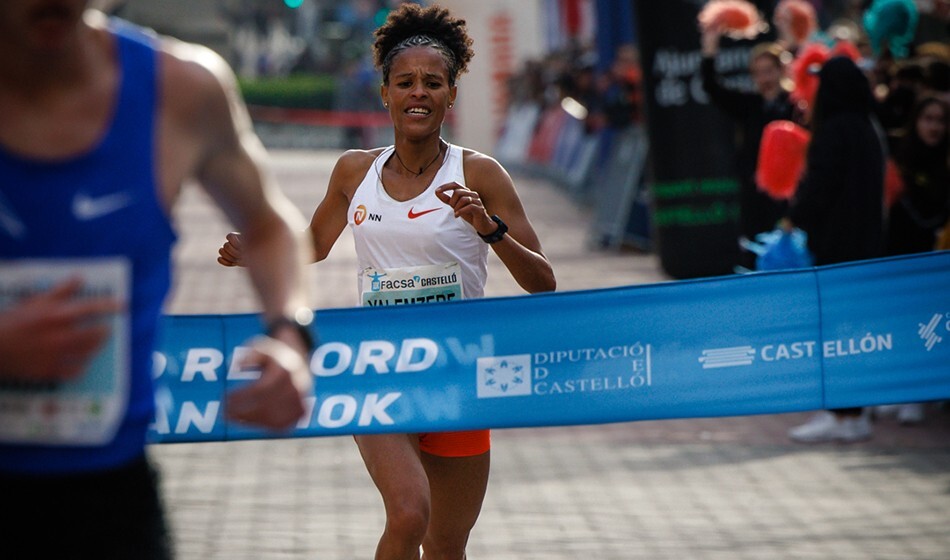
It comes after a couple of record-breaking near misses. In the Antrim Coast Half-Marathon last September she set what appeared to be a world record of 63:43 before it transpired the course was 54 metres short. Then, in the Great Ethiopian Run last month, she seemingly clocked an African all-comers’ record of 30:14 at high altitude in Addis Ababa, only to see the time adjusted to 31:17 due to a timing error.
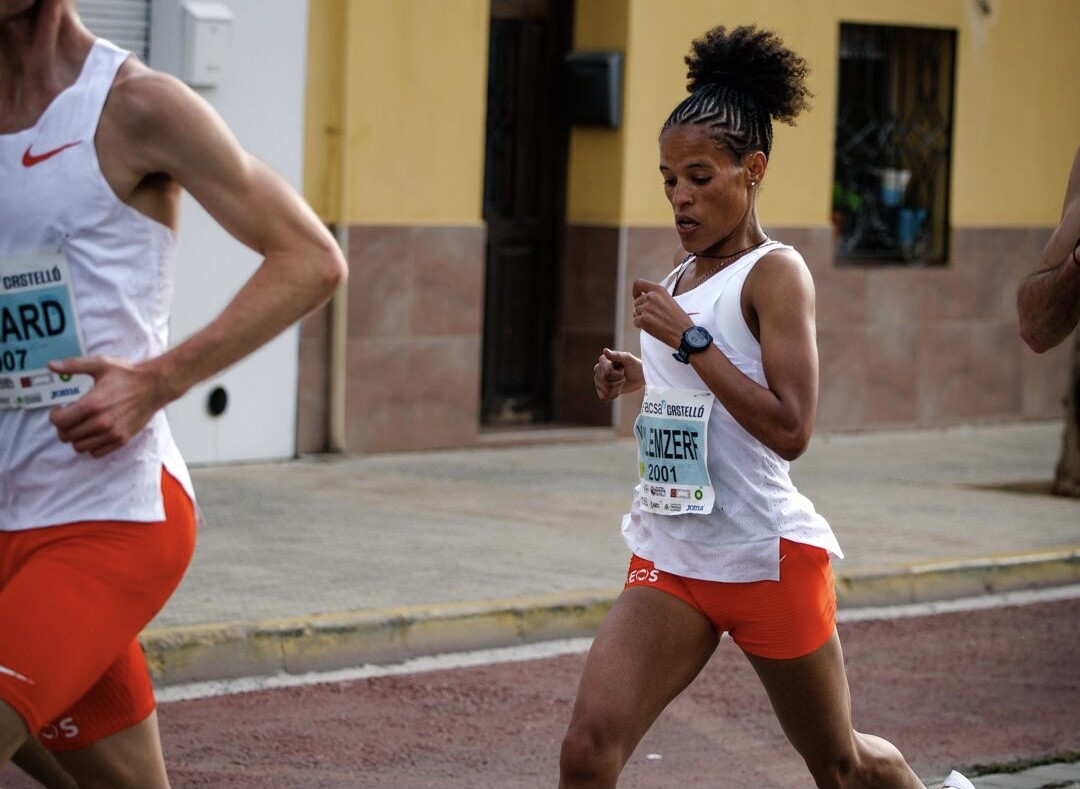
Yalemzerf said: “Today a dream came true. I felt really great in the race. The first 5km was very fast. I was struggling a little bit in the second 5km but I was still able to maintain a high pace.
“I’m so happy with this record! I want to thank the race organisers for this fantastic opportunity,” added Yehualaw, who ran splits of 14:28 and 14:46.
Yehualaw won a bronze medal at the World Half Marathon Championships whereas last year she became the second fastest women’s half-marathon runner in history, clocking 63:51 in Valencia to finish behind the world record run of her NN Running Team team-mate Letesenbet Gidey.
(02/27/2022) ⚡AMPby Athletics Weekly
10k Facsa Castello
The 10K FACSA Castelló is one of Spain’s fastest and most prestigious road races, drawing elite and amateur runners from around the world. Held in Castellón de la Plana, this race has grown exponentially, earning a reputation for its flat, high-speed course and exceptional organization. It holds a World Athletics Road Race Label, placing it among the top road races...
more...Josh Kerr smashes Peter Elliott’s UK indoor mile record
Olympic 1500m bronze medallist clocks 3:48.87 in Boston to go No.3 on the world all-time rankings
After finishing third in the Olympic 1500m final last year behind Jakob Ingebrigtsen and Timothy Cheruiyot, Josh Kerr boldly stated this month that he is going for gold at the World Championships in Eugene in July.
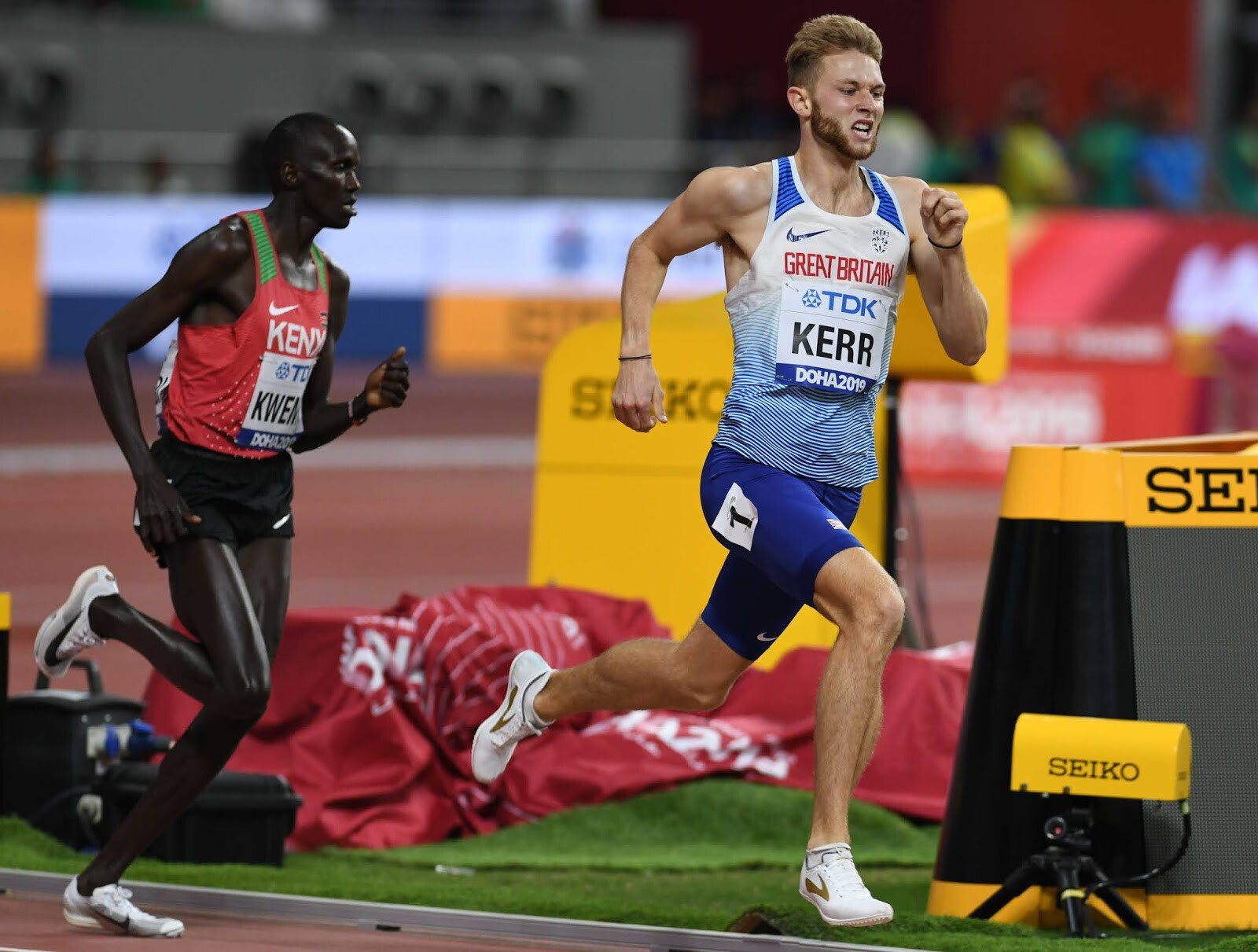
On Sunday (Feb 27) in Boston he showed why he carries such confidence when he ran 3:48.87 for the mile at the Boston University Last Chance Meet.
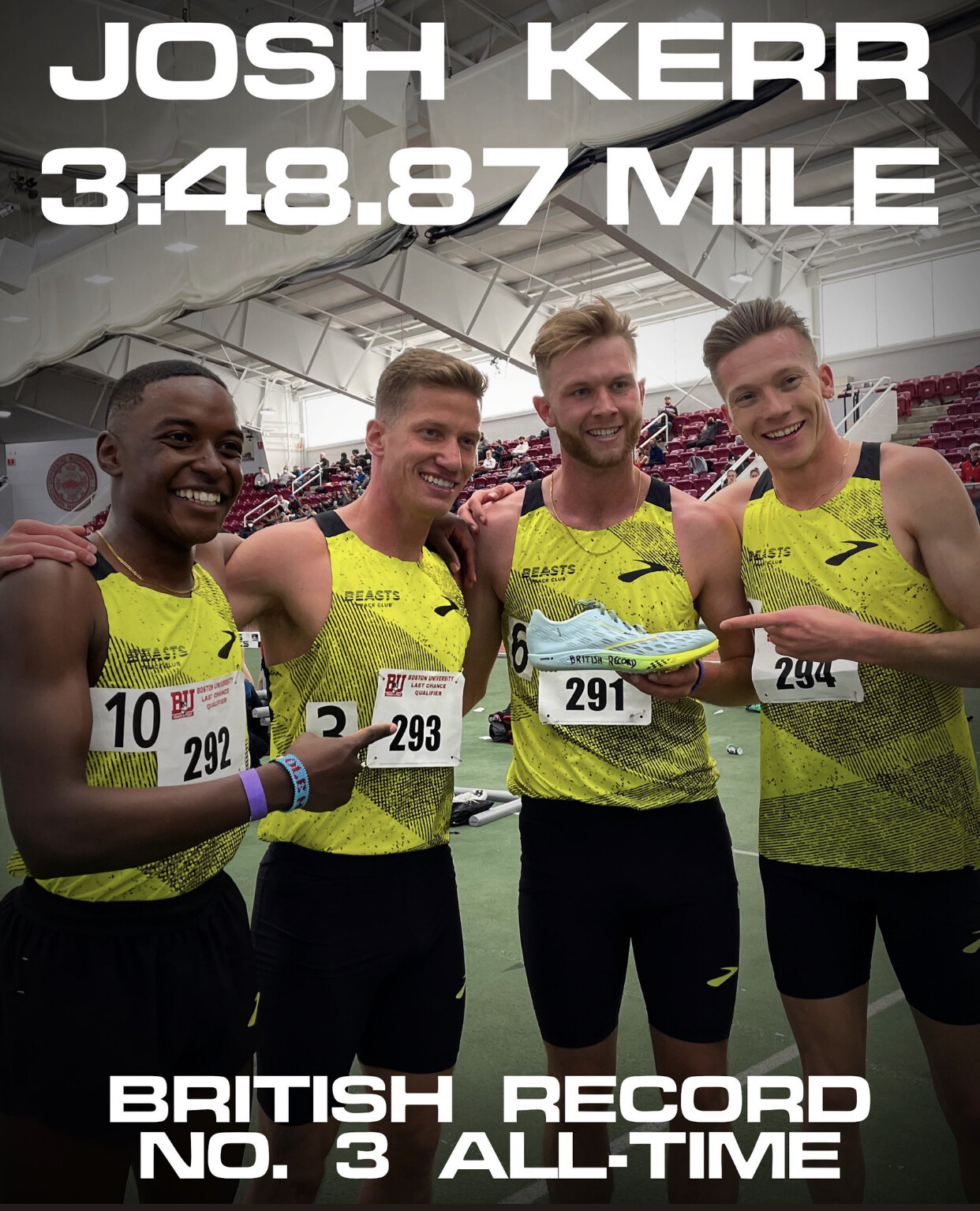
The time puts him No.3 on the world all-time rankings behind Yomif Kejelcha’s world record of 3:47.01 and Hicham El Guerrouj’s 3:48.45.
It also smashes the long-standing British record of 3:52.02 held by Peter Elliott – a mark which was set at East Rutherford in 1990.
Elliott incidentally also holds the British 1500m indoor record with 3:34.20 but it is thought Kerr may have run quicker en route during his mile.
In addition, Kerr’s time is a European record, as it breaks Eamonn Coghlan’s 3:49.78, which was also set in East Rutherford back in 1983. At the time Coghlan was the first man to run a sub-3:50 mile indoors and even now, 39 years later, Kerr has become only the seventh athlete to achieve the feat.
Kerr’s splits saw him pass the first lap in 58.15 and halfway in 1:56.75 before he ran a trademark strong second half of the race to go through three laps in 2:52.04 (55.3) before finishing with a 56.8 final lap.
(02/27/2022) ⚡AMPby Athletics Weekly
Rising star Gaku Hoshi thrills in joint Osaka-Biwako marathon
Gaku Hoshi won Sunday’s combined Osaka Marathon and Lake Biwa Mainichi Marathon, capturing the new event on the national running calendar in his first race at that distance.
In a race featuring 300 elite male and female runners, the 23-year-old Hoshi broke out of a three-man pack around the 38-kilometer mark and ran solo the rest of the way to win in 2 hours, 7 minutes and 31 seconds — a record for a first-time marathoner.
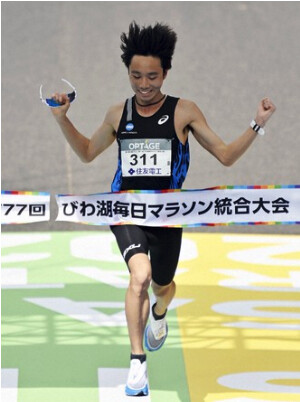
“This was my first marathon and I didn’t think I would win so this is a surprise,” Hoshi said.
“It’s too good to be true but I’m super happy. I knew it would come down to the last stages so I went aggressively after the 30-km mark. It went as planned,” he said.
On a clear and sunny day, the 42.195-km race started in front of the Osaka Prefectural Government Building and finished at Osaka Castle Park.
Hoshi stayed in a leading group of 10 runners after the last turn, and after his pacemaker dropped out the race continued as a three-man contest between Hoshi, Ichitaka Yamashita and Yuhei Urano.
Yamashita finished second, 11 seconds behind Hoshi, and Urano was third. Misato Horie won the women’s division.
Seven runners including the top three men’s finishers qualified for Japan’s Marathon Grand Championship to determine the qualifiers for the 2024 Paris Olympics.
The elite men-only Lake Biwa Mainichi Marathon, Japan’s oldest annual marathon race with 76 editions so far, became a part of the mass-participation Osaka Marathon beginning this year.
The 2022 edition involved only elite athletes, with 20,000 mass-event runners excluded due to coronavirus concerns.
(02/27/2022) ⚡AMPOsaka Marathon
In 2022 the Lake Biwa Mainichi Marathon and Osaka Marathon were held together. For 2023 the name of the marathon will be Osaka and both men and women can run the race. The original male-only competition was first held in 1946 and, having taken place every year since then, it is Japan's oldest annual marathon race. The early editions of...
more...Matsuda runs 2:20:52 to break Osaka Women's Marathon record
Mizuki Matsuda broke the race record at the Osaka Women’s Marathon on Sunday (30), improving her PB to 2:20:52 to win the World Athletics Elite Label event.
Her time beats the 2:21:11 event record which had been set by Mao Ichiyama last year and moves her to fifth on the Japanese all-time list. It is also the second-fastest time by a Japanese athlete in Japan, behind Ichiyama’s 2:20:29 set in Nagoya in 2020.

Matsuda was followed over the finish line by Mao Uesugi, Natsumi Matsushita and Mizuki Tanimoto, as the top four all dipped under 2:24.
Before the race, Matsuda had explained how her goal was to win the race with a performance that would help her to secure a spot on the team for the World Athletics Championships in Oregon later this year. After winning in Osaka in 2020 with 2:21:47, Matsuda had later missed out on a place at the Tokyo Olympics when Ichiyama ran faster in Nagoya.
“I could not attain my goal today,” she said after the race, with beating Ichiyama’s 2:20:29 a likely aim. “I am happy that my hard training paid off well.
“I think the result was good because I ran aggressively from the start. I just hope that I will be selected for the World Championships team. During the race, I was imagining myself running in Eugene, thinking: ‘How would the world-class runner run at this stage of the race?’”
Despite the pandemic, the event in Osaka was able to go ahead as planned, under good conditions with little of the expected wind.
Matsuda and Uesugi had run together behind the three male pacemakers until just after 25km, passing 10km in 33:02 and half way in 1:09:57 – a half marathon PB for Uesugi.
At 25km the clock read 1:22:47, but Uesugi started to drift back a short while later and by 30km – passed in 1:39:15 – Matsuda had built a 31-second lead.
She went through 35km in 1:56:04 and 40km in 2:13:23, with the pacemakers leaving the race as they entered Nagai Stadium park at around 41km.
Matsuda went on to cross the finish line in 2:20:52 to achieve her third Osaka Women’s Marathon win after her victories in 2018 and 2020, maintaining her unbeaten record in the event.
Although Uesugi’s pace began to slow as she was dropped, she held on to run a big PB of 2:22:29, while Matsushita was third in 2:23:05 and Tanimoto fourth in 2:23:11. Yukari Abe was fifth in 2:24:02 as the top five all set PBs, with Sayaka Sato sixth in 2:24:47. The top six all qualified for the Marathon Grand Championship, the 2024 Olympic trial race.
(02/27/2022) ⚡AMPOsaka Marathon
Let’s run for fun in the shadow of Osaka Castle, the symbol of the city!This is a fun running event, which welcomes international runners from all corners of the global alongside families, friends and Japanese runners; all running together through the colored leaves of Osaka Castle Park on a crisp autumn morning. The fun and pleasure of running is universal! ...
more...John Landy was a very special man
"The most incredibly stupid, beautiful, foolish, gentlemanly act I have ever witnessed." is how one spectator, a prominent Australian minister, described the mid-race occurence as pictured here.
I am saddened to share the news of the passing of mile legend, John Landy at the age 91.
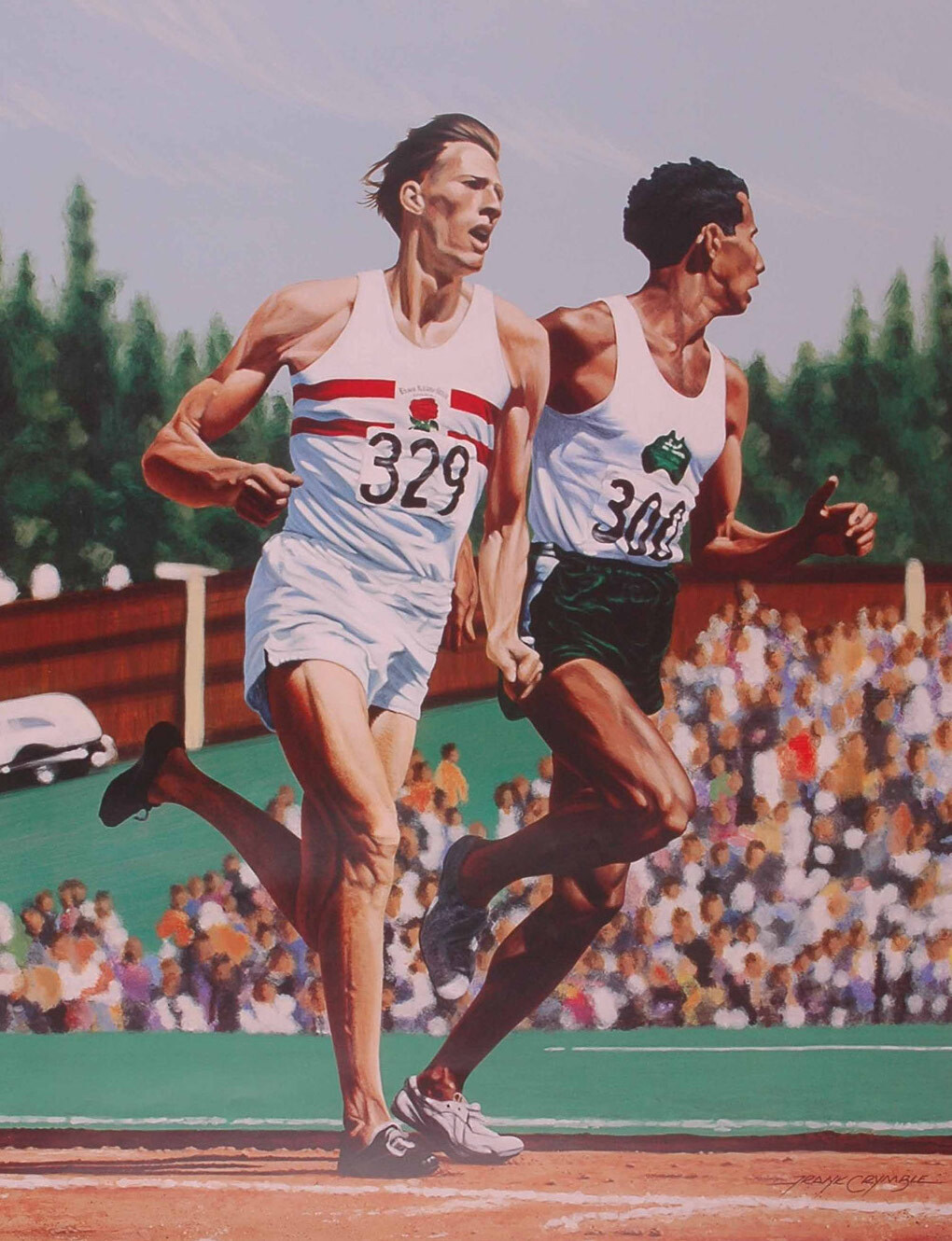
You may best remember him for looking left while Roger Bannister passed on his right during the iconic 4 lapper dubbed the Miracle Mile at the 1954 Commonwealth Games.
Or perhaps you prefer to recall Landy as the second man under four minutes...his 3:57.9, run in Turku Finland, came just 46 days after the more widely lauded Bannister barrier breaker.
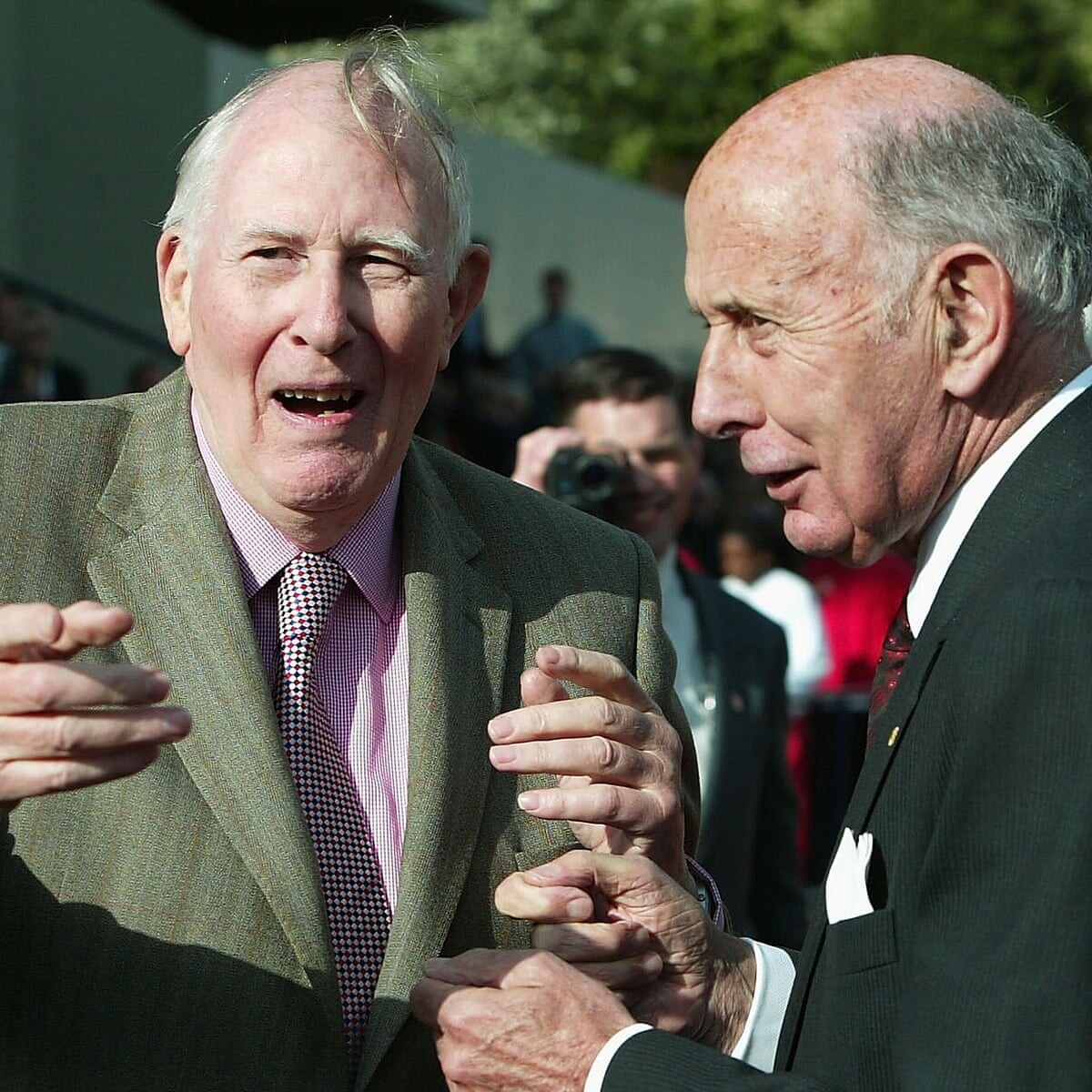
But when I think of John Landy, my very first image of him comes from the 1956 Australian National Championships. In an announced goal prior to that meeting's one mile run, Landy hoped to break his own world record.
Instead, midway through said mile, one that attracted 22,000 spectators, there was some jostling that caused a runner to go down on the cinders. It was the 19-year old Aussie national junior champ, Ron Clarke. Landy, hurdled over the fallen competitor but clipped the youngster's shoulder with his spikes. Rather than continue forward, Landy stopped, turned around and lent Clarke a hand back to his feet.
Now, some 60 yards behind the leaders, Landy, one by one, reeled in the entire field and went on to win in a remarkable 4:04.2.
John Landy's one mile world record may have lasted just three years, but his selfless act of sportsmanship shall endear him to this track fan into perpetuity.
(02/26/2022) ⚡AMPby Mike Fanelli
Five running technique exercises to improve your running form
Proper running form is not something that comes overnight. In fact, if you try to change your running technique too quickly you’ll likely end up doing more harm than good. Go through this list of five tips for better running technique and introduce changes slowly.
1. INCREASE RUNNING CADENCE
Many runners run with a cadence that’s too slow. Their feet hit the ground in front of their body of mass and their step is not rolling economically. This is called overstriding.
When you overstride, you’re effectively braking against your forward momentum which makes running a lot heavier. To avoid overstriding, aim to hit the ground with the middle of your sole and avoid excessive heel striking. When you’re running at a lighter pace, avoid landing toes first.
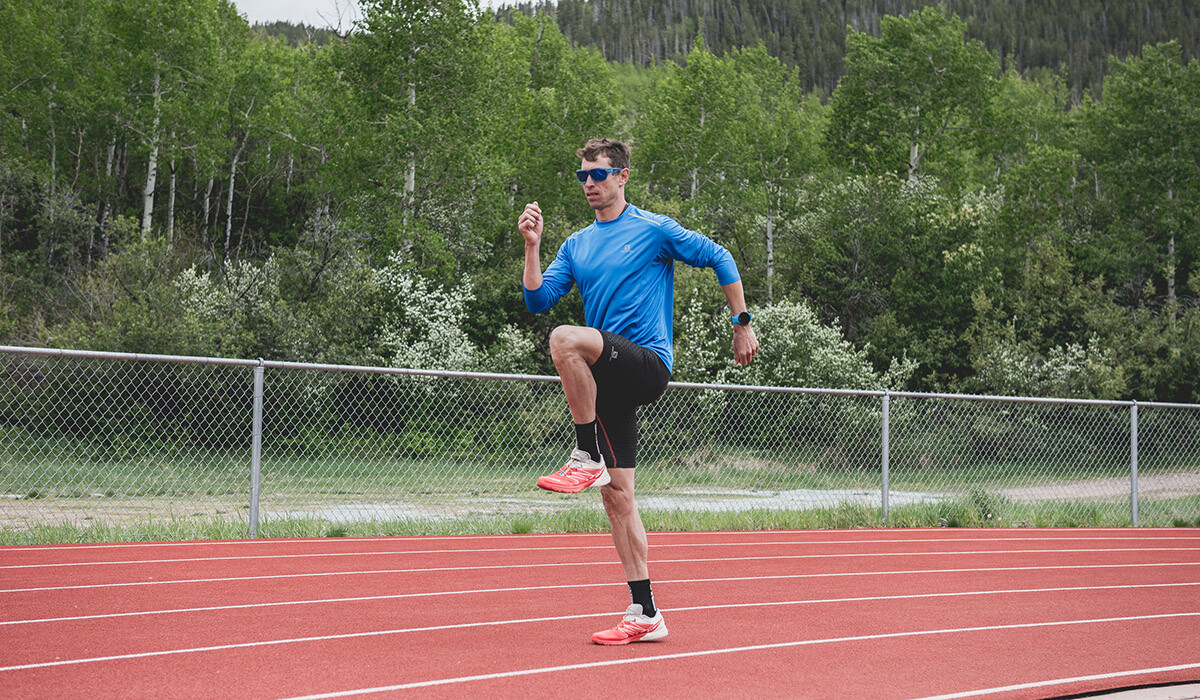
There is no such thing as optimal, universal running cadence. That is, a cadence that works for a sub-3-hour marathoner might not work for you (and even if it does, that won’t automatically make you a sub-3-hour marathoner, for that matter).
2. RELAX TO MAINTAIN AN EFFORTLESS RUNNING FORM
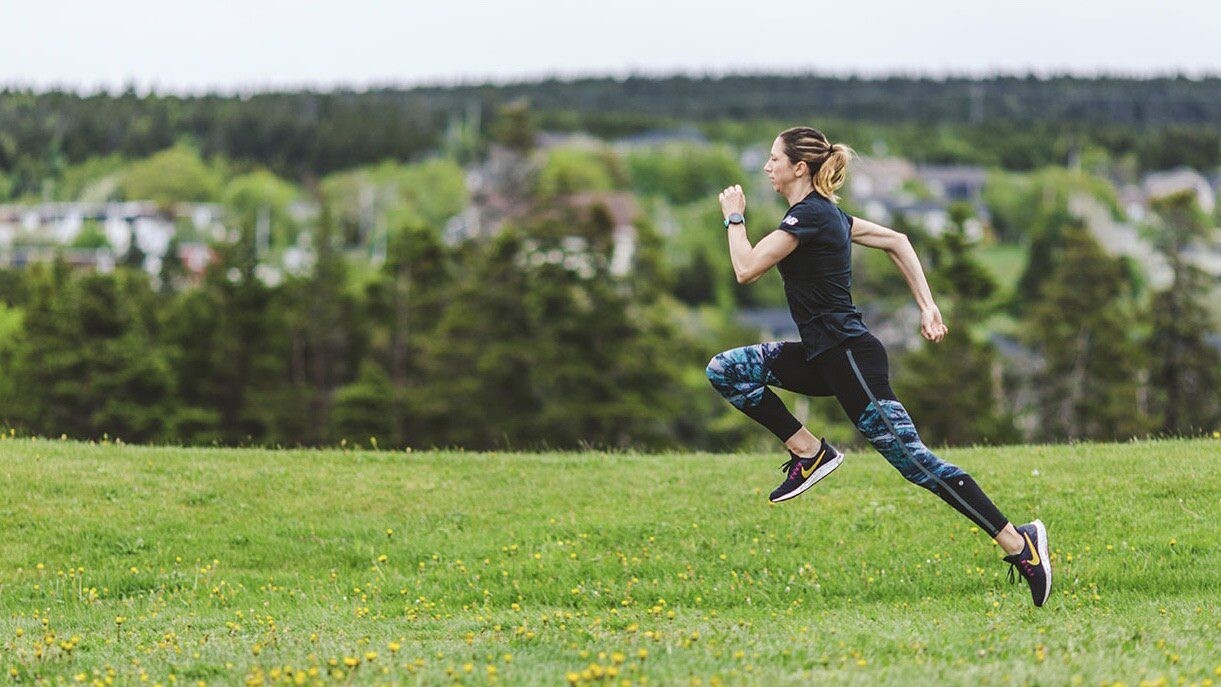
Running is easy when it’s relaxed.
When you look at elite runners, their running form often looks effortless. Their pace looks much more laid-back than what it really is.
Focus on keeping yourself straight and relaxed: let you cheeks wiggle and enjoy the ride. Avoid running at maximum pace even during the toughest intervals as you’ll tense up and your running technique will suffer.
It’s better to give only 95% even during the toughest exercises than to squeeze out everything you got.
3. PROPER RUNNING FORM EXTENDS ALL THE WAY TO THE UPPER BODY
Arms are more important in running than many people think.
Your arms are meant to balance the body while the legs are moving. Elbows make up for a great deal of kinetic energy and therefore they should swing forward and back, avoiding unnecessary lateral movement. A suitable elbow angle is about 90 degrees. Keep your hands in unclenched fists and let them swing easily besides your race bib.
At a tougher pace, using your arms becomes increasingly important. Your shoulders should be as relaxed as possible and you should also remember to invest in upper-body flexibility and mobility as well as muscle strengthening when you do supportive exercises.
A stiff upper body also affects the lower body and causes unnecessary rotation to the legs as well. You can practice arm movement for example in front of the mirror with the help of the exercise above.
4. RUNNING TECHNIQUE EXERCISES TO HOLD PROPER RUNNING FORM
It’s challenging to change your running technique without any special exercises. In running technique exercises – running drills – your technique is divided into parts and attention is given to the right kind of movements, muscle activation, muscular fitness, and mobility in order to enable a better running technique. Doing drills will also make it easier to hold proper running form for longer.
Stay focused when you do these drills and do them when you feel fresh.
Even though many people set longer runs as their goal, you shouldn’t concentrate on training to become slow. If you want to improve your running technique, it’s better to do short and precise exercises correctly, rather than training slowly for a really long time.
You can try various exercises, like high-knee runs, high-knee walks, jumps and leaps, and versatile mobility and stretching exercises. You can do the exercises as a full workout after a proper warm-up, but you can also combine them for 5–15 minutes with light jogs or do them before the brisker exercises
5. GET YOUR RUNNING FORM RIGHT
Avoid an excessively upright form while running. An important part of proper running form is maintaining good posture and leaning slightly forward.
With this kind of running form, you make sure that your feet don’t land too far ahead of your center of mass. A statue-like upright form might look stately it but makes forward rolling running more difficult. And when you get tired, you’re more likely to start leaning backwards.
Controlling your core and making sure you’ve got the required muscle fitness and endurance are key elements of maintaining proper running form. When you improve your muscle fitness, you’ll be able to keep up a good form during longer runs.
You can also try to activate your muscles before a jog with some strength exercises so you’ll feel strong when you start running.
(02/26/2022) ⚡AMPBuild speed and control with this unique workout, alternate between short and long intervals to practice smart pacing
A lot of running workouts focus on building speed, endurance or a combination of the two, but there’s another important component to running well that often gets neglected: control. In a long-distance race, you need to be able to control your pace throughout the run so you can get to the finish line as fast as possible, without having to stop before you get there. This unique workout teaches control, while also giving you a chance to get some speed on your legs.
800/400 intervals
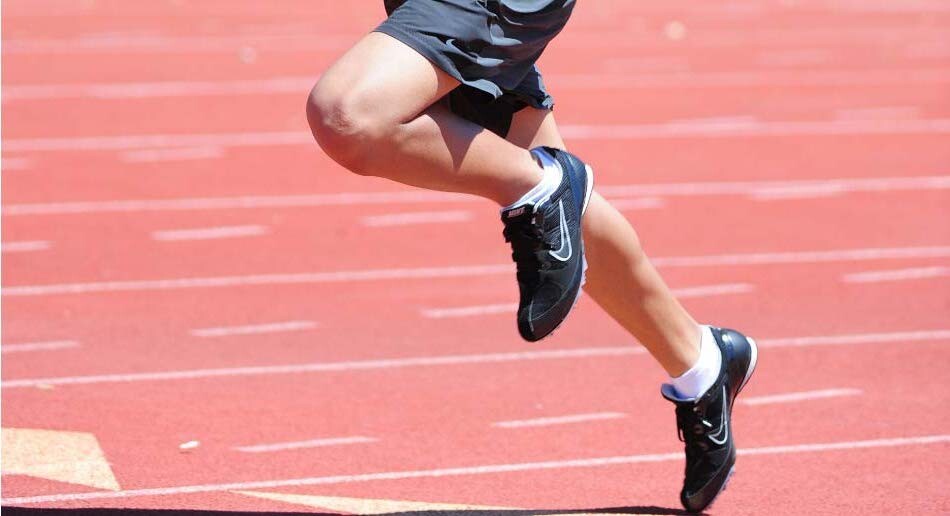
This workout involves alternating between 800m and 400m intervals. The 400s are run at a faster pace than the 800s, so runners have to control their pace in the first half of every set to make sure they can speed up in the 400s. The rest is intentionally short between the short and long interval to force you not to run too hard in the 800s.
You can do this workout multiple times during a training cycle, and adjust the paces as your fitness increases. To start, aim to run the 800s at 10K pace and the 400s at 5K pace, but once you’re able to run all the intervals at consistent speeds, you can add sets and/or increase the pace.
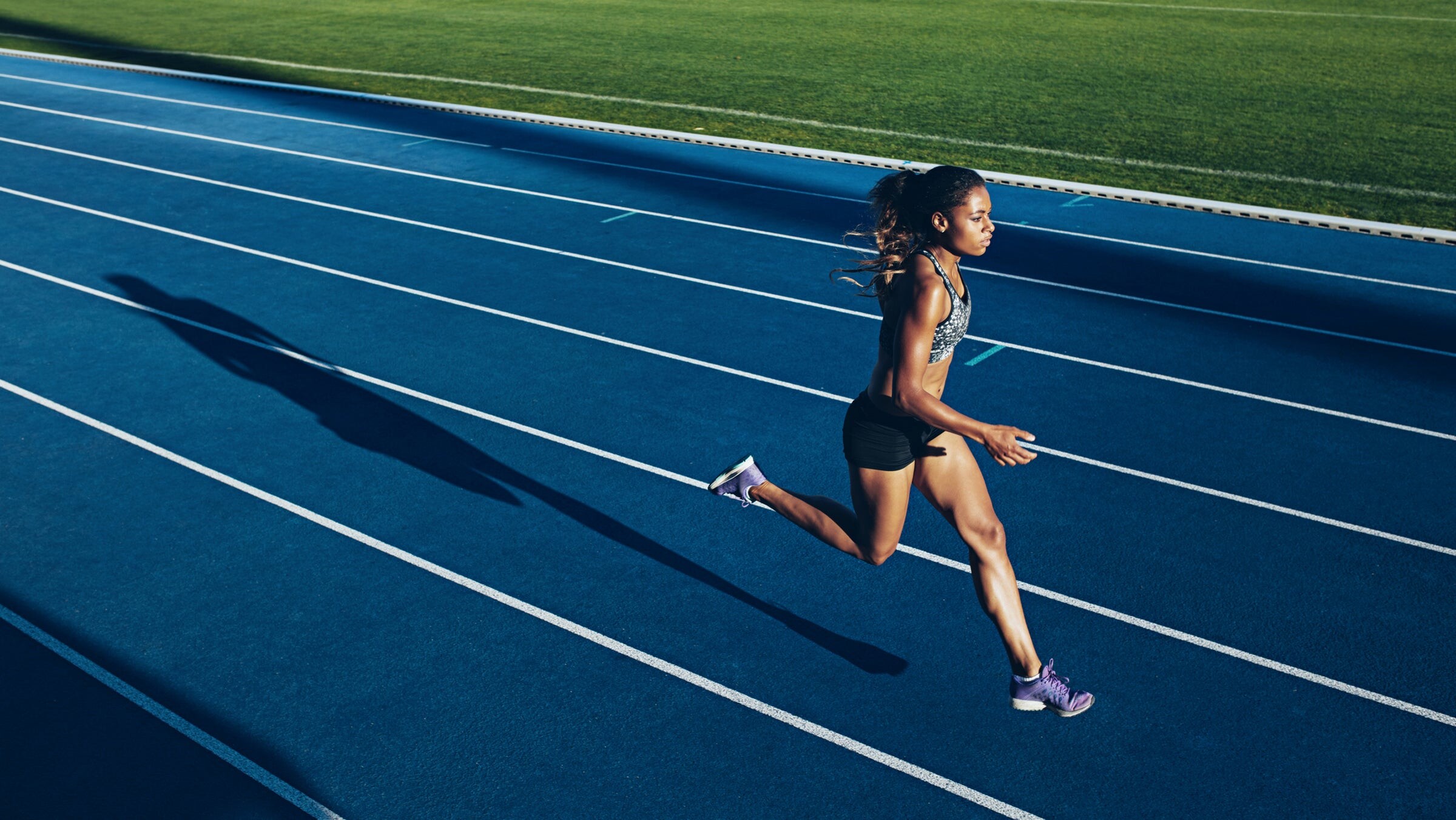
The workout
Warmup: 10-15 minute easy jog, followed by form drills and strides
Workout: 3-4 x 800m/1 minute rest/400m/2 minutes rest
Cooldown: 10-15 minutes easy jog, followed by light stretching
(02/26/2022) ⚡AMPby Brittany Hambleton
Camille Herron Breaks Her Own 100-Mile World Record- And Then Some
"What a difference a year makes."
That was the first thing Camille Herron had to say when she reflected on her latest record-breaking run at the Jackpot Ultra Running Festival on February 19. Herron, a new addition to the master's division (as of December 2021), opened her 2022 campaign with a commanding performance.
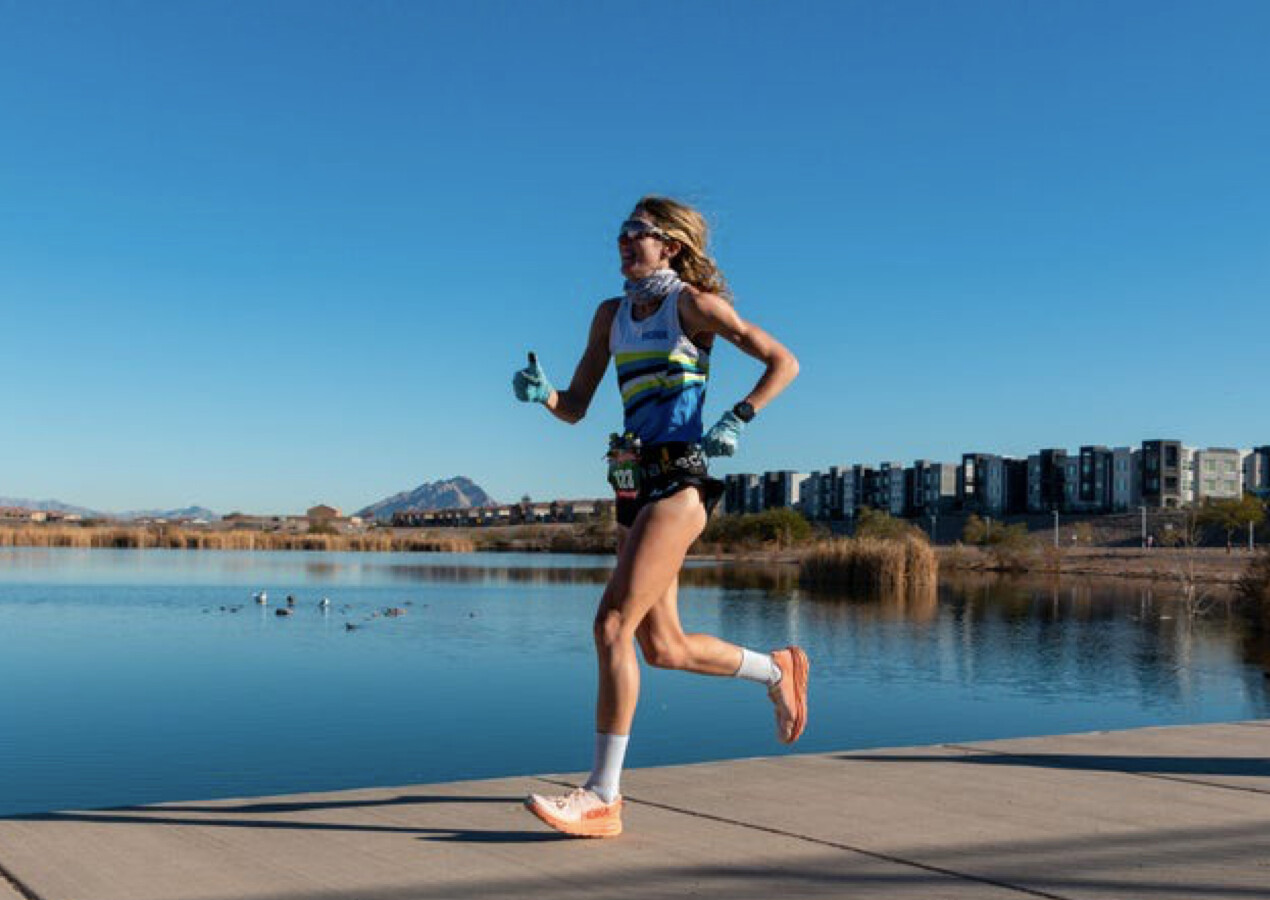
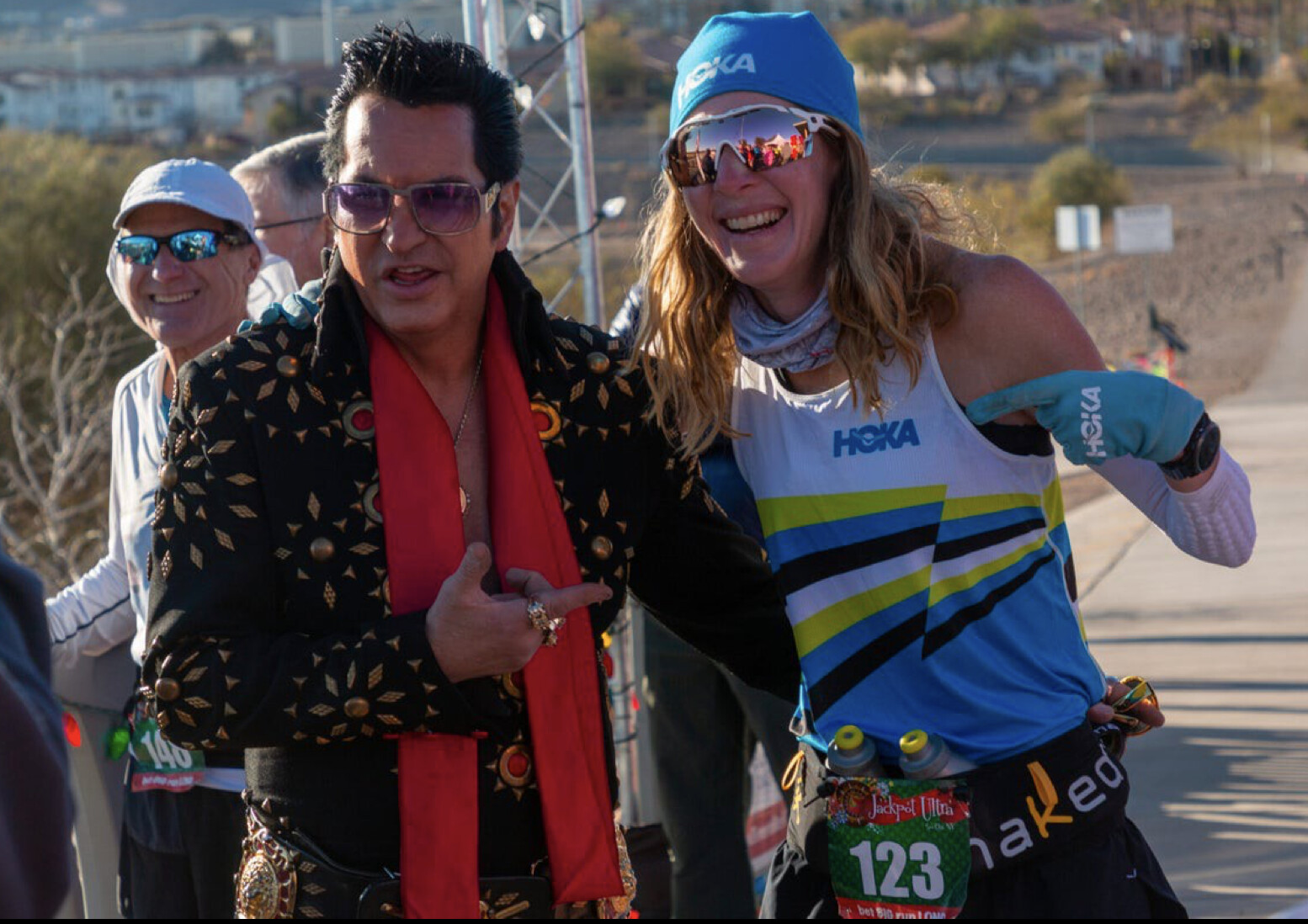
She was the outright winner of the 100-mile race and the USATF 100-mile national champion; she set a 50-mile age group world record (6:08:24), a 12-hour world record (94.5 miles), and a 100-mile world record (12:41:11, breaking her own previous record of 12:42:40 from the 2017 Tunnel Hill 100).
For Herron, this performance, coupled with dominant wins last fall at the Javelina Jundred and Desert Solstice, is just what the doctor ordered after a tough 2021.
"I ran the Jackpot 100 last year and I just didn't feel good during that race," Herron says. "It was the fourth race that I just didn't feel right. I'd hit 40 miles and want to lie down and sleep. That followed me to Western States."
That tired feeling turned out to be a result of high iron levels and low levels of magnesium and vitamin B12. The iron overload was the main culprit, which she learned from InsideTracker data. Most endurance athletes commonly have low iron levels. The result of Herron's iron excess was anemia-like symptoms.
"I was feeling so bad. My breathing was heavy, I was extremely tired, and it wasn't normal race fatigue," Herron says. "It was pretty scary."
To normalize her iron, Herron worked with her longtime friend and dietitian, Jackie Dikos. Together, they mapped out a plan starting in July. By mid-August, Herron "had [her] mojo back and was feeling energized."The jumpstart catapulted Herron back into training, hitting paces she hadn't seen in years. That's when she got the bug to go after her 2017 100-mile record.
The record was something she'd contemplated for 2020 before the pandemic hit. She nearly went for it after feeling better in 2021 at a race in Hungary, but food poisoning pulled her from the start. That was after a hip flexor injury cost her a six-day race in Germany.
Fast forward to Javelina Jundred and Desert Solstice, Herron was looking for redemption.
"Going into Javelina, I was fired up," Herron says. "I was overdue for a good race. I broke the course record by like 49 minutes. I wanted to keep that fire going."Hitting the Jackpot
A week and a half after moving home to Oklahoma after three years in Arizona, Herron was on a plane with her husband and coach, Conor Holt, to Las Vegas for the Jackpot 100. Most of all, she wanted redemption from her 2021 outing there. Breaking 13 hours sounded good, but if her record was in reach, she wanted it.
That's where she found herself at the 50-mile mark. Her 6:08:24 split was enough for the 40-44 age group world record, and that had her on pace for the 100-mile record. She kept her foot on the pedal.
"Between the elevation gain and the heat, it was much more fatigue than I felt in previous world records," Herron says. "I was trying to assess how my body felt at 50, and I was feeling quite a bit of fatigue. I had to wrap my head around having to endure the second half of the race."
Battling minor issues from the heat and a nosebleed, Herron troubleshot everything the race threw at her. Around mile 75, she caught race leader Arlen Glick.
Herron saved time by only stopping once during the entire race. That lone,15-second break came around mile 70, when she shotgunned a non-alcoholic beer: an Upside Dawn Golden from Athletic Brewing."You know when you do long runs and you have a craving for a beer? Because of the iron overload, I've had to cut out alcohol. So, I've been hooked on non-alcoholic beer," Herron says. "I've never done a beer mile, but I guzzled it pretty fast."
With three laps to go of the 85 total, Herron had already secured the 12-hour record. Doing the math, she realized she was 20 seconds under her 100-mile world-record pace. There was no margin for error. With three miles to go, Herron dropped the hammer.
"I went into beast mode," she says. "I thought about Keira D'Amato chasing down Deena Kastor's marathon record. [Keira] powered through those last miles. I channeled that and thought back to what my high school track coach would say, 'Lift your knees. Drive your arms.'"
Holt cheered Herron on until she came across the line in 12:41:11 for the new world record and the outright win. In the final three miles, she went from a 20-second cushion to break the record by almost 90 seconds. Her final mile was 7:08, and her average pace over the full 100 was 7:37.
"As a woman, you can't be afraid that you could win the race," Herron says. "I've done it a few times now. It was added motivation as I was going after [eventual men's winner] Arlen Glick. Everything worked out. Pretty much, every goal I had, I achieved. I was overjoyed."Eyes on the Prize
Herron is back to the top of the 100-mile ranks as she enters her Western States training block. At 40, she's more fired up than ever to deliver the best performances of her career.
"I can remember hitting my 30s and thinking I'm on some downward slope," Herron says. "We need to shift that mindset. When I look at my training logs from 10 years ago, it's crazy. I used to do long runs every Sunday. As I've gotten older, I've taken better care of myself. If I do one or two long runs a month, that's good enough for me. I've said, women ultrarunners age like fine wine. What I may not have in leg speed anymore, I make up in physical and mental strength to keep going."
Herron credits changes in her diet and training, and the addition of a squat rack, for her continued strength as she enters into the master's ranks. These are the tools she plans to use in preparation for Western States. If all goes to plan, she will be a force to be reckoned with come June.
"I just feel like I have to keep going back and try to have a magical day there," Herron says. "Now that I've run the entire course, it's gonna be fun to go back and push my human limits. I'm hoping to have that dream day."
(02/26/2022) ⚡AMPby Trail Runner Magazine
Let The Race Come To You
When we desire a certain outcome, it's common to try to over-control a race or force certain expectations. It's easy to disguise this kind of flawed thinking as being tough and committed to the goal. In actuality, we need to adopt a somewhat counter-intuitive mental approach.
As a local race director recently advised me, "you need to change up your approach and start letting the race come to you." This went against my typical mental mindset around racing. In fact, my college coach used to say, "make the race happen, don't let the race happen to you." Until now, that had always resonated.

While it doesn't guarantee control, better preparation and training do provide you with more tools to respond to whatever the trail throws at you. Letting the race come to you doesn't mean being a passive passenger in the experience. In fact, it means the opposite. Letting the race come to you means fully participating in and engaging with the actual adventure that you're on and welcoming every experience that it might bring.
Present Moment Focus
This re-frame allows competitors to be more present in their racing experience. In the past, I had made the mistake of crushing early miles, taking advantage of feeling fresh, and sometimes having too much of an urgency to stop for long at aid stations. With the new priority of letting the race come to me in my most recent competition, I didn't panic when I had a twinge in my back in the early miles or when gels weren't going down easily. Typically my thought process might have gone something like "Great. My body already hurts and I'm only at mile 18. I can't wait to see how bad it feels at mile 80."
Instead, I slowed to a hike on the uphill I was climbing to let the discomfort subside. I didn't worry about the potential of lost time. I wasn't concerned with what other athletes were doing. My only focus was addressing the current situation that I found myself in
Problem Solving
Trail running inherently comes with challenges. Even on great days when you achieve your desired outcome, it likely came with effective problem solving rather than simply a lack of problems faced. A byproduct of letting the race come to you with an eagerness to engage with it is that you're ready to assess and respond to any obstacle that you face, rather than resisting it or panicking.
This new mindset allowed me to calmly address what was in front of me without the panic or anxiety that comes with trying to predict how it's going to impact you further down the trail. Each challenge is simply a component of what the race is bringing with it and can also be welcomed and accepted.
Managing Information
When it comes down to it, racing is really about interpreting and managing the constant influx of information (i.e. how your body feels, the terrain, race position, weather) that you're being presented with, and deciding what is helpful feedback and what is an unproductive distraction. In the past, when I was trying to make the race happen, it was more difficult to accurately tell the difference.
For example, sometimes what I would treat as an irritating distraction was actually something that required my attention (i.e. heat and its impact on my fueling strategy). And, something that should have been dismissed as a distraction (i.e. what a competitor was doing) I interpreted as important feedback for my race strategy. When you let the race come to you, you're already in the mindset to receive and respond.
Not only do you know lots of information is coming your way, but you're ready for it. This information isn't a nuisance or a threat but in fact an inevitable and crucial part of the racing process.
This new perspective and mental approach of letting the race come to me transformed my racing experience and it can transform yours, too. Not only did it have a positive impact on the outcome of my race, but I found myself calmer, more engaged, and enjoying the process more than I have in a long time.
Processing Information During a Race: Feedback vs. Distraction
Accurately identifying the difference between actionable feedback and distractions is imperative to having a successful performance. Many athletes fall into the trap of taking distractions as feedback (i.e. responding to stomach issues by not taking in any more calories or fuel) or treating feedback as a distraction (i.e. pushing too hard or forcing a pace when your body isn't responding well to it).
Thinking about each of these scenarios ahead of time and planning your desired response highly increases the chance of efficient decision making when you face them on the trail.
(02/26/2022) ⚡AMPby Trail Runner Magazine
Kilian Jornet Announces Return to UTMB for 2022
"Return of the King."
That was the title of a YouTube video tweeted out by UTMB on February 23 to announce Kilian Jornet's return to the legendary race in Chamonix.
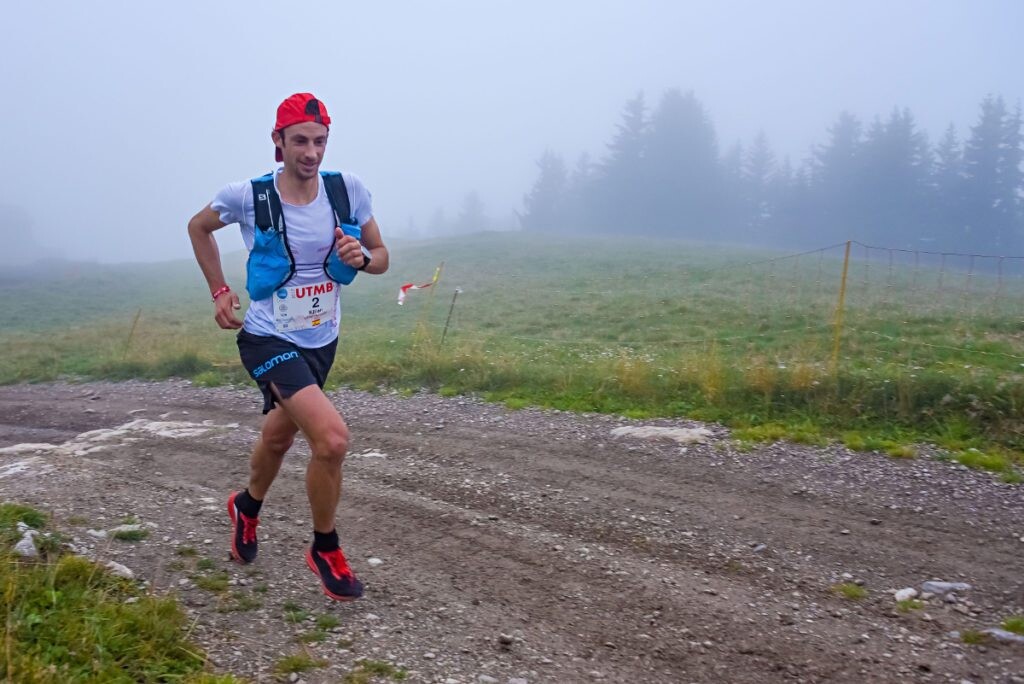
"This year I'm coming back to UTMB," said Jornet, in a clip sprinkled with quotes touting him as the sport's greatest of all time. "Why, you will ask me: it's because I really love to suffer. I really love the pain in the legs, the feet, and everywhere in the body. That's what long distance is about. To enjoy the pain!"
It will be Jornet's first time back at the 105-mile (170K) race since 2018, when he dropped 11 hours in. He has raced UTMB six times since 2008, including victories in 2008, 2009, and 2011. In 2017, he broke the race's course record while finishing second to Francois d'Haene's 19:01:54 and becoming the second man ever to break 20 hours on the course in 19:16:59.
The 2022 edition of UTMB is slated for August 21-28, with the 105-mile flagship race kicking off on Friday, August 26. It will come just six weeks after Jornet's appearance at the Hardrock 100 on July 15, where he will go after another win to complement those from 2014, 2015, and 2017 (as well as a co-victory with Jason Schlarb in 2016, when the two finished hand-in-hand).
Other athletes expressed their excitement for Jornet's return in the Twitter video.
"It would be a bit empty if Kilian wasn't there, to be honest," said Tim Tollefson, who will also race UTMB in August. "He is the king of the sport, so it just feels right to have him on the line."
Once August rolls around, Jornet will compete against one of the strongest fields UTMB has ever seen. Two-time champion Xavier Thevenard of France and an American contingency including Tollefson, Jim Walmsley, Jared Hazen, Sage Canaday, Dylan Bowman, Jason Schlarb, and Cody Reed will all be aiming for a podium finish. On the women's side, Americans Camille Herron, Brittany Peterson, and Hillary Allen will be in attendance, as well as Beth Pascall of the U.K., Audrey Tanguy of France, and Ragna Debats of the Netherlands.
"UTMB always has such a big level, so many good athletes, so I really love this competition," said Jornet in the video announcement. "I'm really looking forward to being at UTMB again this year."
(02/26/2022) ⚡AMPby Trail Runner Magazine
Struggle with knee pain? Your shoes may be the problem
Knee injuries are some of the most common problems faced by runners, and new research says your shoes might have something to do with it. According to a recent study, shoes with a substantial heel drop (which most of us run in regularly) increase the amount of stress on your knees, which could lead to increased knee pain.Heel drop and knee pain
Heel drop is the difference in height between the heel of your shoe and your forefoot. Traditional running shoes tend to have a larger heel drop, which may contribute to knee pain. The researchers in this study, published in the journal Gait and Posture, aimed to confirm this theory, and find out if zero-drop shoes helped prevent knee pain.
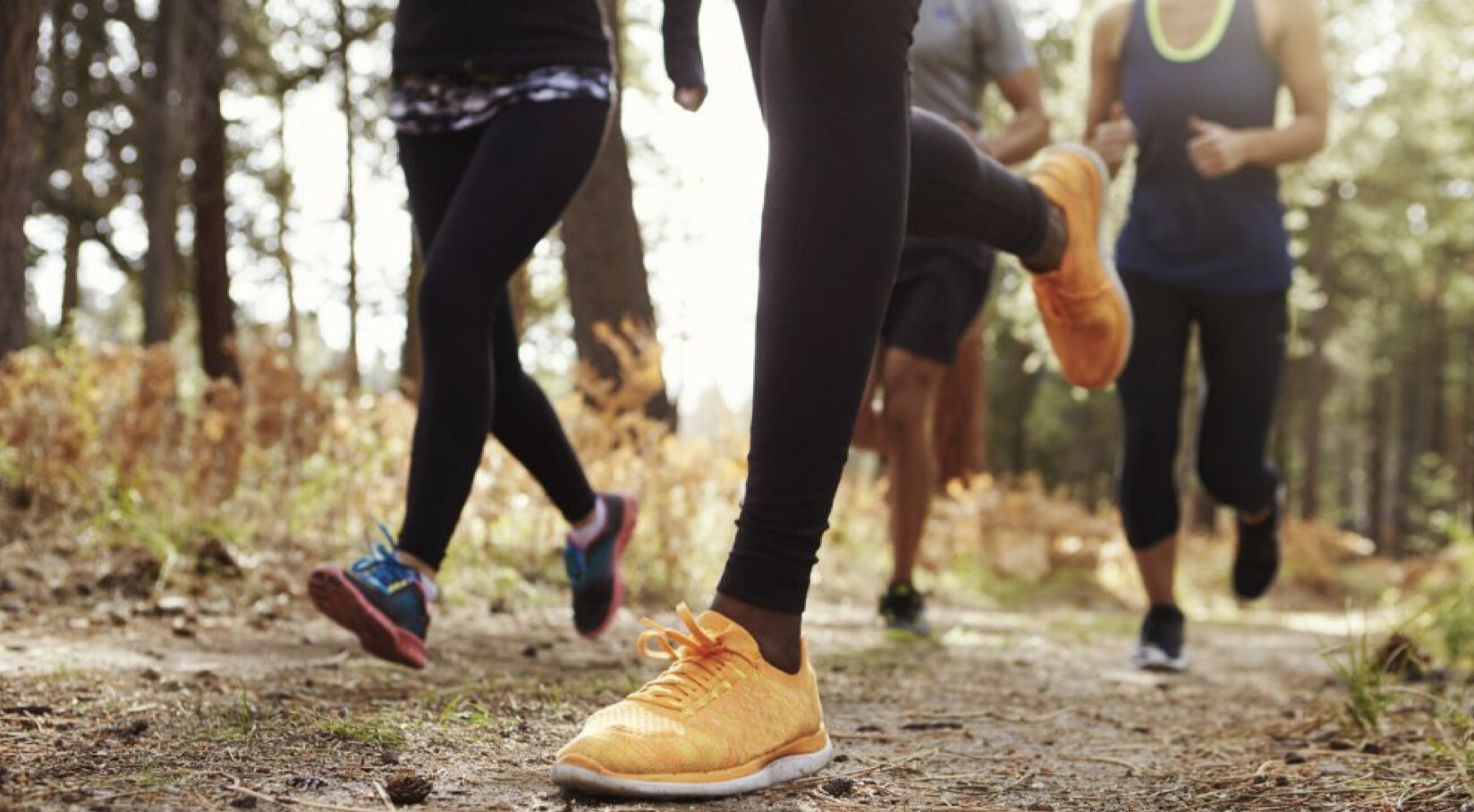
To do this, they had a group of 18 runners complete four separate running tests. They wore a different shoe each time, starting with a 15 mm drop, followed by a 10 mm drop, a 5 mm drop and no drop (zero-drop). During each run, the researchers collected running kinematics and ground reaction force data for each runner.
The researchers found that when the runners wore shoes with a 15 mm or 10 mm heel drop, their knee extension moment and patellofemoral joint force were greater than in shoes with zero drop, and their peak patellofemoral joint stress was increased by more than 15 per cent compared to shoes with zero drop. The runners’ knee flexion angle was also significantly increased when they wore shoes with a 15 mm, 10 mm or 5 mm drop.
In other words, when the runners wore shoes with a drop greater than 5 mm, they experienced a significant increase in joint stress in their knees.The takeaways
Running shoes with large, cushy heels and significant heel drops have become the most popular shoe for their performance benefits, but they may increase your risk for knee injuries, particularly if you’re already prone to knee problems. The researchers of this study conclude that running shoes with a heel-to-toe drop of more than 5 mm are not recommended if you’re trying to prevent patellofemoral pain.
This doesn’t mean that runners who are prone to knee problems should never wear those cushy-heeled shoes, but you’re better off saving them for specific workouts and races, and running the rest of your miles in a shoe with a lower heel drop.
Of course, this is only one study with a relatively small number of participants, but if you’ve been wearing shoes with a large heel drop and you’re starting to experience knee pain, or if you’ve always struggled with knee problems and can’t figure out why, it may be worth finding a shoe that puts less stress on your knee joint.
ave something to do with it. According to a recent study, shoes with a substantial heel drop (which most of us run in regularly) increase the amount of stress on your knees, which could lead to increased knee pain.
(02/26/2022) ⚡AMPby Running Magazine
John Landy has died at age 91
John Landy, a scholarly Australian who became the second man, after Roger Bannister of England, to run the mile in under four minutes, and who later dueled Bannister in a race that became known as the Mile of the Century, died on Thursday at his home in Castlemaine, Victoria, Australia. He was 91.
His death was reported by the country’s main public broadcaster, the Australian Broadcasting Corporation.
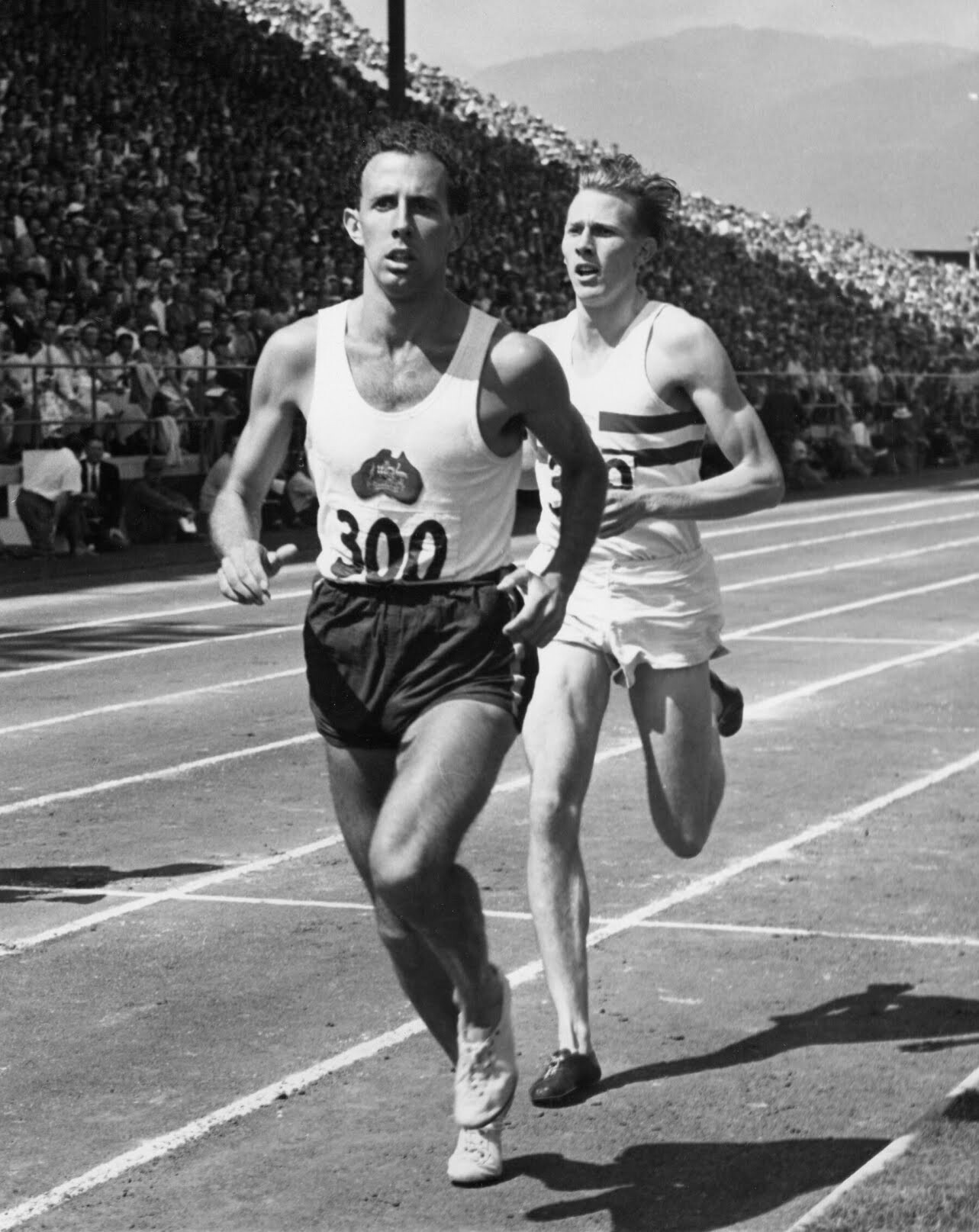
For as long as races were measured in time, running a mile in less than four minutes had remained one of humankind’s seemingly unbreachable barriers. But by 1954, three of the world’s greatest runners — Landy, Bannister and Wes Santee of the United States — had been edging closer to that mark and appeared ready to shatter it.
All three faced obstacles: Landy, at just over 5-foot-11 and 150 pounds, was running on slower grass tracks in Australia; Bannister was deep into medical studies at Oxford; and Santee had to run three relays for the University of Kansas in almost every meet.
Bannister reached four minutes first, running a mile in 3 minutes 59.4 seconds on May 6, 1954, in Oxford. Not to be outdone, Landy, who graduated from Melbourne University that year with a degree in agricultural science, headed for Europe and its faster tracks.
On June 21 — 46 days after Bannister’s historic race — Landy lowered the world record even more, to 3:57.9, in Turku, Finland. (According to the timing rules of the day, which called for mile records to be listed in fifths rather than tenths of a second, the time was listed as 3:58.0; it is now recognized as 3:57.9, the actual time recorded by four timers.)
As Landy saw it, he and Bannister had simply done the inevitable. “Four minutes was not a psychological barrier,” he said. “Someone was going to break it. If there hadn’t been a war, it would have fallen 10 years earlier.”
Landy’s record would last three years; it was broken in 1957 by Derek Ibbotson of England, who ran 3:57.2. (The current record is 3:43.13, run by Hicham El Guerrouj of Morocco.)
(02/25/2022) ⚡AMP
by NY Times
2022 Boilermaker Announces Return to July
Officials from the Boilermaker Road Race unveiled the new 45th-anniversary logo and announced that this year’s races will be run on Sunday, July 10, 2022, with a full field of runners. The 15K race presented by Excellus BlueCross BlueShield will have a capacity of 14,500, including the return of professional runners and wheelchair athletes. The 5K race presented by Utica National will have a capacity of 4,500.
Priority registration will open at noon on Thursday, March 3 via the race’s website www.boilermaker.com. Runners who completed any of the 2021 races, including the virtual events, are eligible to register during the one-week priority registration period, which ends Thursday, March 10 at noon. Open registration begins Friday, March 11 at noon and will remain open until Tuesday, July 5, 2022 at 11:59 p.m. or until the races reach capacity.
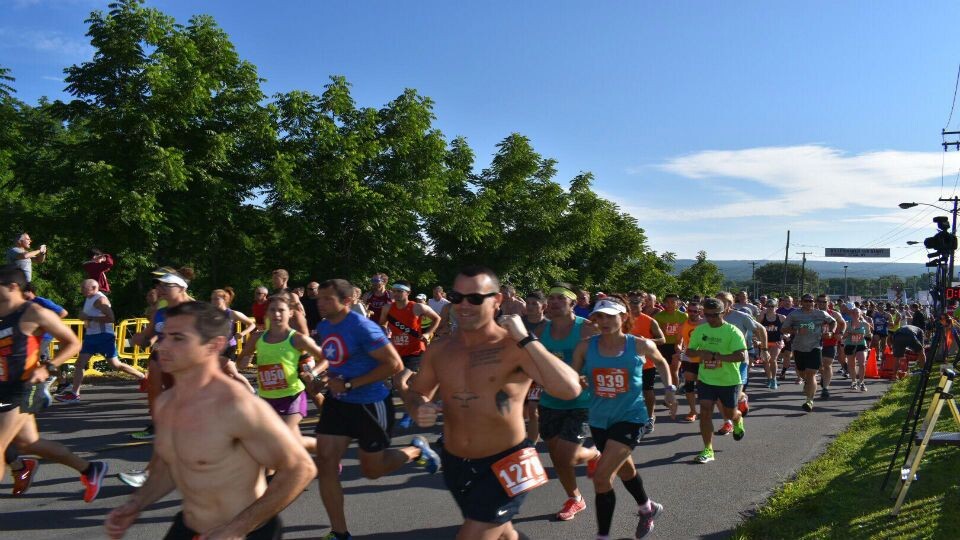
Due to the COVID-19 pandemic, the 2020 races were held virtually and the 2021 events, though held in-person, were moved to October.
“After two challenging years, the Boilermaker is eager to get back to our traditional second Sunday in July race date and what we all hope will be a pathway to normalcy,” said Mark Donovan, Boilermaker president. “We are eternally grateful for the unyielding support of our sponsors who have helped carry us through the pandemic and for the opportunity to bring back many of the unique elements of the Boilermaker that combine to make it all so special.”
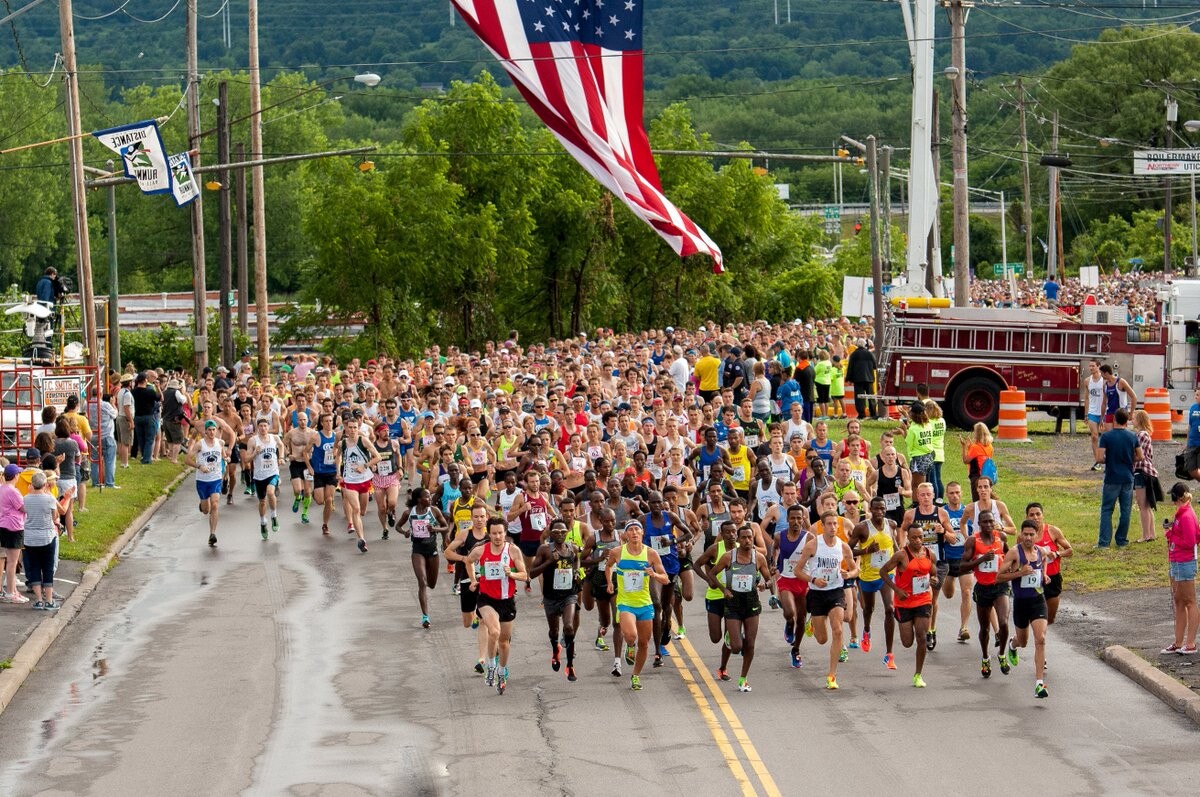
In addition to the full field of runners, this year’s Boilermaker week will once again feature multiple community-minded events and challenges. The week begins with the Youth Olympics presented by Bank of America. The Boilermaker Kids Run, presented by Utica National, will take place at Mohawk Valley Community College (MVCC), Saturday, July 9. Additionally, the Boilermaker Charity Bib Program, presented by Wolfspeed, allows participants to fundraise on behalf of a local non-profit organization to receive race bibs in exchange for their fundraising efforts.
The event also featured the unveiling of the official 2022 race logo. Commemorating the event’s 45th anniversary, this year’s logo was once again designed by McGrogan Design of Utica. The race’s traditional runner icon links the numbers four and five.
The Boilermaker is following the lead of county and state guidance in establishing health and safety protocols around the event. “Our goal is to present our runners with a safe and fun atmosphere to run the race,” Donovan said. “Right now, this means that runners need to show proof of vaccination or a negative PCR test result taken within 72 hours of the race, but we are hoping that there will be no need for restrictions by the time July rolls around.”
2022’s event will also include several team and individual challenges, including the Corporate Cup presented by Excellus BlueCross BlueShield, the High School Challenge and the Wheelchair Challenge sponsored by Sitrin Healthcare.
“The various challenges provide a race within the race and add a special element of intrigue and competition both for our wheelchair athletes and our various community institutions,” said Donovan. “While road racing is typically an individual event, the challenges represent an opportunity for teamwork, bonding and friendly competition.”
The Boilermaker Health and Wellness Expo presented by Mohawk Valley Health System, will return to the Utica Campus of MVCC for Boilermaker weekend. The expo will be open on Friday, July 8 from noon to 7 p.m. and Saturday, July 9 from 8 a.m. to 4:30 p.m. In addition to packet pickup, the expo features healthy living information, vendors and more.
The Saranac post-race party will be open to runners and spectators from 8 a.m. to 12 p.m., providing plenty of time to celebrate after the events.
“The communion of runners and non-runners alike on the second Sunday in July is a big part of what makes the Boilermaker so much more than just a race,” said Donovan. “We are pleased to be able to once again unite our community and celebrate together with 19,000 runners and many more of our friends.”
Donovan also took the time to thank the over 4,500 community members who volunteer at various events throughout the week. “Each year I am blown away by the sheer number of people who take time out of their lives to help make our event a success,” he said. “From helping with the expo and manning the water stops along the course, to helping clean up after the post-race party, there is not a single area of our race which isn’t touched by our volunteers.”
For more information on Boilermaker Weekend, including event details, volunteer opportunities and registration links, please visit boilermaker.com.
(02/25/2022) ⚡AMPby Running USA
Boilermaker 15k
The Boilermaker 15K is the premier event of Boilermaker Weekend. This world krenowned race is often referred to as the country's best 15K. The Boilermaker 15K is recognized for its entertaining yet challenging course and racing's best post-race party, hosted by the F.X. Matt Brewing Company, featuring Saranac beer and a live concert! With 3 ice and water stops every...
more...2022 NYC Marathon returning to full capacity
The New York City Marathon will return to full capacity with an estimated 50,000 runners set to participate in early November.
The race, one of the most prestigious events on the global running calendar, was cancelled in 2020 because of the COVID-19 pandemic and returned last year with a reduced field of 30,000 runners amid a number of safety protocols.
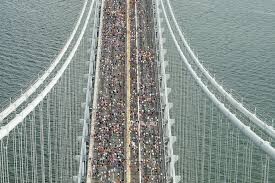
"Last year's marathon served as an uplifting and unifying moment for New York City's recovery as well as a symbol of renewed hope, inspiration, and perseverance," New York City Marathon race director said on Thursday.

"This November, we are excited to have runners from all over the world fully return as we come together to deliver one of the best days in New York."
Organizers said this year's marathon, scheduled for November 6, will require runners to be fully vaccinated. Many event elements will be restored, including on-course entertainment.
The 26.2-mile (42.16 km) run through the city's five boroughs typically draws hundreds of thousands of people along the race course in a city-wide celebration.
(02/25/2022) ⚡AMPUnited Airlines NYC Half-Marathon
The United Airlines NYC Half takes runners from around the city and the globe on a 13.1-mile tour of NYC. Led by a talent-packed roster of American and international elites, runners will stop traffic in the Big Apple this March! Runners will begin their journey on Prospect Park’s Center Drive before taking the race onto Brooklyn’s streets. For the third...
more...Canadian Brandon McBride joins Oregon Track Club Elite
Canadian 800m record holder Brandon McBride has parted ways with his former collegiate coach, Chris Woods, and will be joining Oregon Track Club Elite (OTC) for the 2022 season.
McBride will be joining fellow Canadian middle-distance runner William Paulson and the third-fastest 800m runner of all-time (1:41.73), Botswana’s Nijel Amos, who was second to the great David Rudisha at the 2012 London Olympics. “I am looking forward to this exciting opportunity with OTC,” McBride says. “They have a great middle-distance group.”
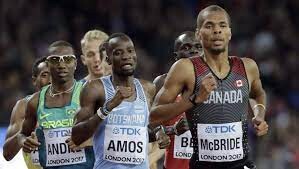
The Windsor, Ont. native holds a personal best time of 1:43.20, which is the fastest 800m time ever run by a Canadian. McBride has battled injuries in the last two seasons, which led him to a disappointing finish at the Tokyo Olympics.
Since the Tokyo Olympics, Mcbride has been driven on getting back to 100 per cent “I have my eyes on a return for the outdoor season,” he says.
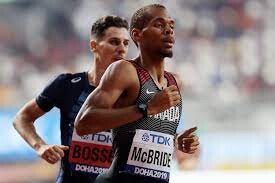
He will now be coached by Mark Rowland, who has had a lot of success working with middle-distance runners Francine Niyonsaba, Ben Blankenship, Hanna Green and Amos.
For the past five years, McBride was sponsored by Adidas, training under his old collegiate coach at Mississippi State University, with fellow Canadian 800m runner Marco Arop, who came off a career-best season on the Diamond League, with five podium finishes.
McBride is a two-time Olympian (2016 and 2020) and a World Championship finalist (2017).
(02/25/2022) ⚡AMPby Marley Dickinson
Useful tips on how to effectively use running for weight loss
If you’re looking to drop a few pounds, running is a great way to do it. The truth is that running is one of the most efficient forms of exercise for weight loss. It’s simple, easy to do, and doesn’t require any special equipment. This blog post will discuss some tips on how to effectively use running for weight loss.
Leverage running apps

One of the primary things that you can do to make running more effective for weight loss is to leverage running apps. Running apps can help you track your progress, set goals, and measure results. This can be a great way to stay motivated and on track with your weight loss goals. Take the time to explore online sources where you may come across https://finvsfin.com/found-weight-loss-review/. This article will give you a good insight into an app that you can use to help with weight loss. Otherwise, you can always look for other running apps that cater to your specific needs.
Create a routine

Another key thing to keep in mind when using running for weight loss is to create a routine. Having a set routine will help make running more of a habit, and it will be less likely for you to skip days. Try to schedule your runs for the same time each day, and make sure that you have everything you need ready to go before you start. This will help streamline the process and make it easier for you to get in some exercise each day.
When you first start running for weight loss, don’t push yourself too hard. You want to build up your strength and endurance gradually over time. If you try to do too much in the beginning, it will just result in injuries that can prevent you from exercising. Instead, make sure that you’re taking it easy at first and not pushing yourself too hard. Rest assured that you’ll be able to work up to longer and more intense runs as time goes on.
Recruit a friend or workout partner
You can also make running more effective by recruiting a friend or workout partner to join you. This will help hold you accountable and keep you motivated while exercising. It’s easy to skip out on your runs when it’s just yourself, but if someone is waiting for you, then you’re less likely to cancel or be late. In addition to this, you may even find running more enjoyable when you’re out there with a friend, and you may even push yourself to work harder. Keep in mind that it’s important to choose a friend who is also active and will be able to keep up with you.
Use hills
You can also make your runs more effective for weight loss by using hills. Hill sprints are a great way to work your entire body and burn a lot of calories in a short amount of time. Start by running up the hill at a slow pace, then increase your speed as you reach the top. Make sure that you’re slowing down as you go downhill so that you don’t risk getting injured. This will allow you to focus on using your leg muscles and burning calories.
Don’t forget the basics
Don’t forget the basics when it comes to running for weight loss. Make sure that you are staying hydrated, eating healthy foods, and getting enough rest. Staying hydrated is important because it will help you feel better while running, and it can help prevent injuries. The right type of food will help you have the energy that you need to keep going. You should also make sure that you are getting enough sleep at night so your body is rested for the next day’s run. If you can focus on these three things, then you’ll be well on your way to seeing results from your running. Just remember that weight loss takes time and dedication, so be patient and stick with it.
Keep track of your progress
Finally, be sure to keep track of your progress as you run. This will help you see how far you’ve come and it can be a great motivator. You may want to consider using a journal or tracking app to document your runs, weight loss, and other progress metrics. Seeing tangible evidence of your hard work is always motivating and can help keep you going when things get tough.
There are several steps that you can take to make running more effective for weight loss. The tips listed above are a great place to start, but be sure to explore other resources as well. With a little bit of effort, you should see great results in terms of weight loss. Good luck!
(02/25/2022) ⚡AMPby Colorado Runner
Canada’s Viktoria Brown breaks the 72-hour world record, she ran 464 kilometers over three days
Canada’s Viktoria Brown has done it again. The Whitby, Ont. native ran 464 kilometers in 72 hours at the Jackpot Ultra Festival in Henderson, Nevada over the weekend, breaking the previous record that was set 32 years ago.
The previous record was held by New Zealand’s Sandy Barwick, who ran 460 kilometers over 3 days in 1990 on her way to setting the six-day world record, which still stands to this day at 883 km. Brown’s record has yet to be ratified, but once it is, this will be her first world record. She already has three Canadian records, including the 48-hour record (346 kilometers), the 72-hour (440 kilometers) and most recently, she became the first Canadian woman to run 100 miles in under 15 hours at the Desert Solstice 24-hour and 100-mile Track Invitational, setting a new Canadian record in 14:57:13.
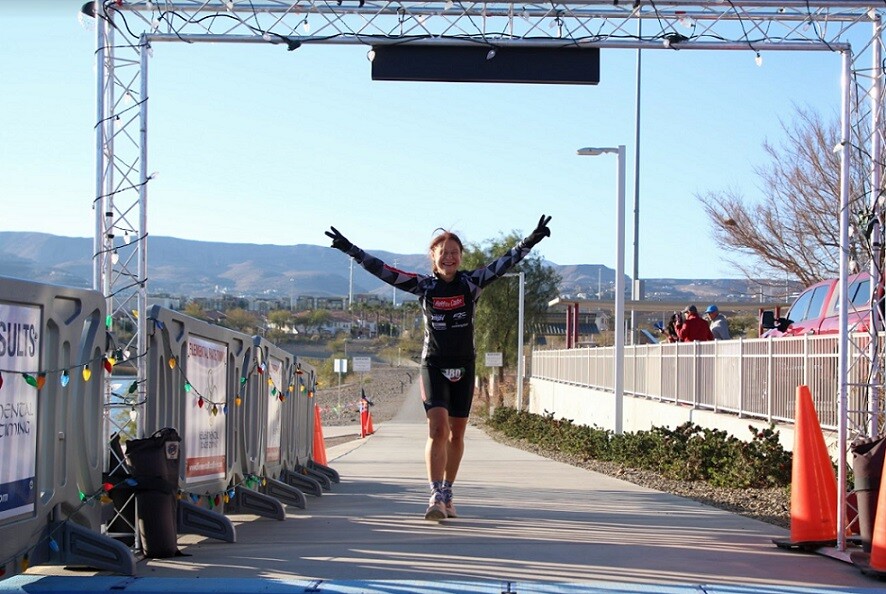
“My main goal was to go 3 days deep once more before I attempt a 6-day race and try to find solutions to logistical, gear and nutritional issues as well as handling my asthma for such long races,” says Brown. “The course itself wasn’t flat or easy which made this a harder challenge than I had expected.”
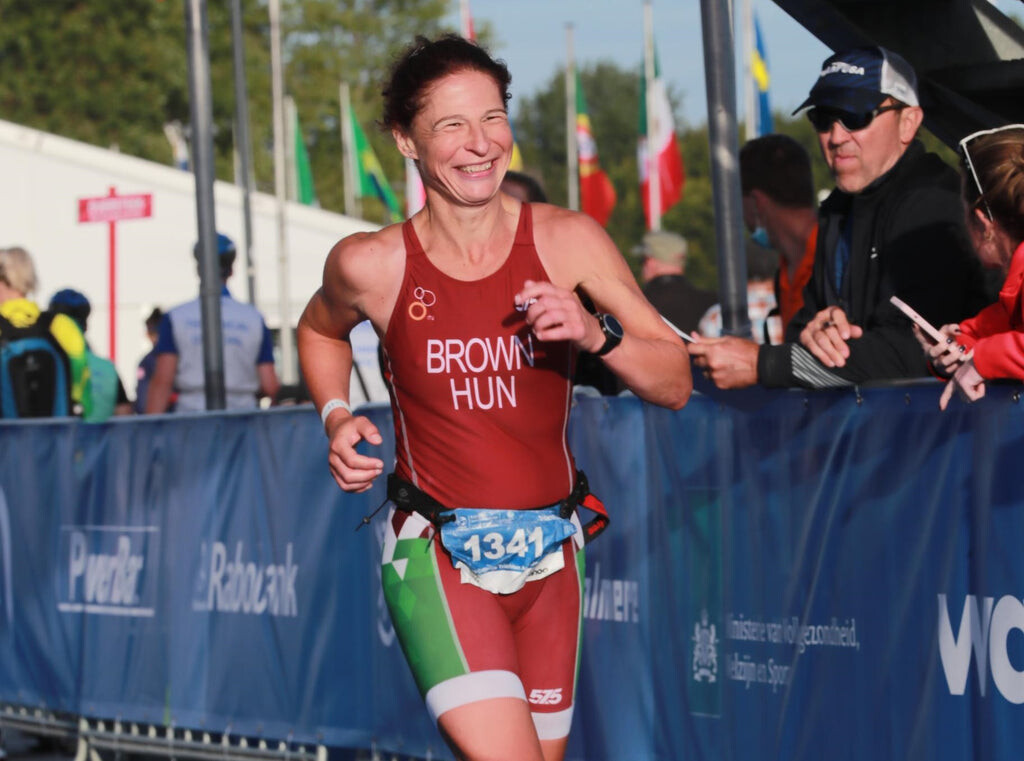
To make matters more challenging, her crew chief’s flight got canceled due to storms and was unable to make it to the race, so her friend had to step up and fill his shoes, barely sleeping for the entire 72 hours. Still, they managed to pull it off. By the third day, Brown knew she was very close to the record, but if she wanted to surpass Barwick’s distance, she couldn’t afford to take any walk breaks. “I’m very happy with the result, but I believe I can do better on an easier course, and I also know that if I want to go after the six-day record, then I will have to do better for the first three days,” says Brown.
With yet another record under her belt, Brown shows no sign of slowing down, and Canadian ultrarunning fans will be watching to see what she does next.
(02/24/2022) ⚡AMPby Brittany Hambleton


